MADAME DE POMPADOUR THE ERA OF





The Festival, The Era of Madame de Pompadour, is under the patronage of Mr. Laurent Bili, Ambassador of France to the United States.
The Era of Madame de Pompadour: text, illustrations, cover
Copyright ©️ 2023 by Opera Lafayette
All rights reserved. No reproduction, copying, distribution or redistribution, in full or in part of the text or images is permitted without written permission from Opera Lafayette.
Best efforts have been made by Opera Lafayette and the contributors to this manuscript to ensure the accuracy of the content disclosed herein, however, Opera Lafayette does not represent this scholarly effort to be wholly error-free.
ISBN: 979-8-88955-174-4
Library of Congress Control Number: 2023903856
Published 2023
Opera Lafayette
921 Pennsylvania Avenue SE
Washington, DC 20002
www.operalafayette.org
Cover: Maurice Quentin de La Tour, Portrait en pied de la marquise de Pompadour. https://commons.wikimedia. org/wiki/File:Maurice_Quentin_de_La_Tour_-_ Marquise_de_Pompadour_-_WGA12359.jpg. Wikimedia Commons.
This publication is made possible by a grant from The National Endowment for the Humanities.
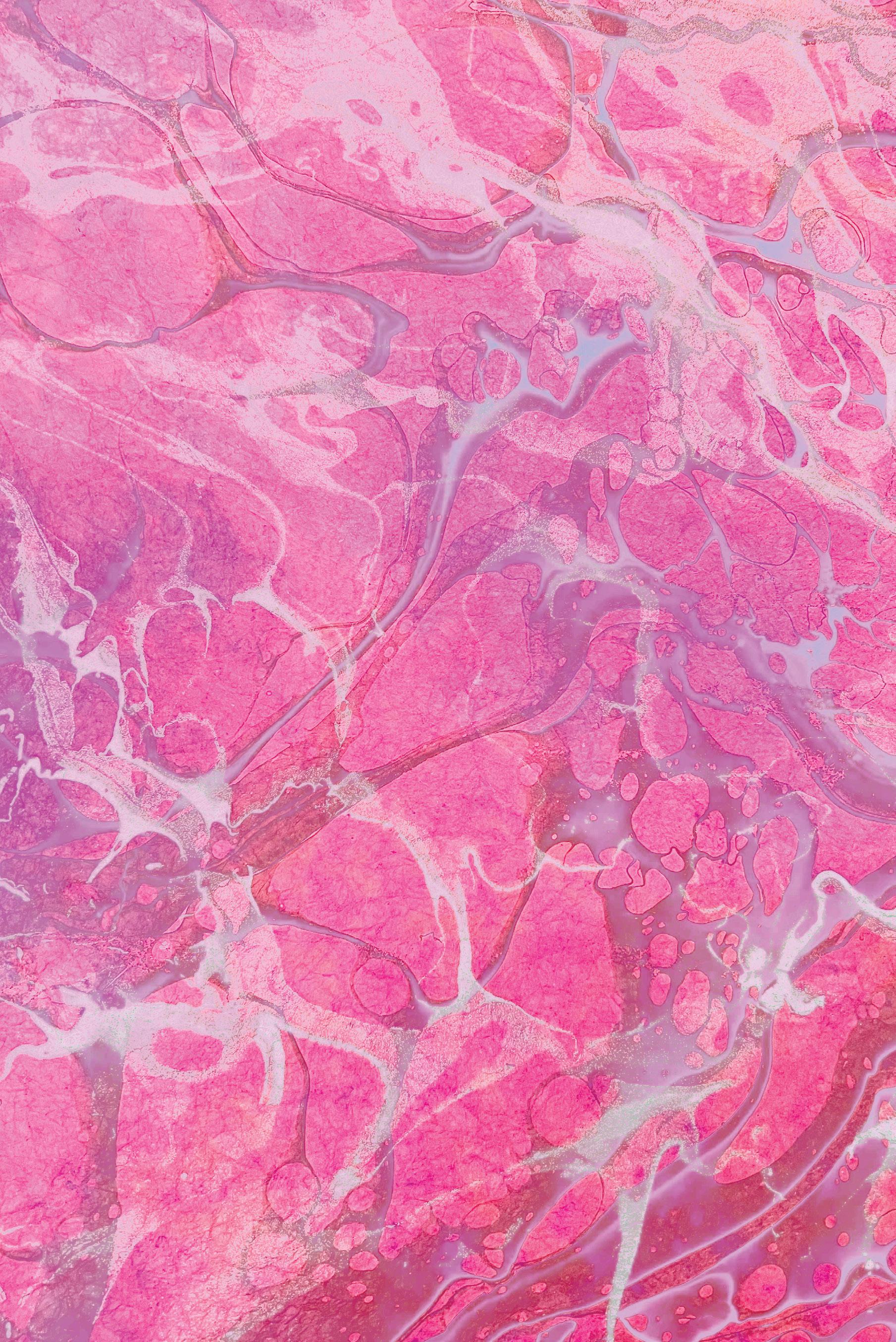
The Era of Madame de Pompadour marks the second of three festivals Opera Lafayette presents exploring various facets of eighteenth-century music in France. Following last year’s Era of Marie-Antoinette, Rediscovered and preceding next season’s Era of Madame de Maintenon, The Era of Madame de Pompadour sits in the middle of the century and is usually associated with both the rococo style and the intellectual battles over the merits of French and Italian music. Digging a little deeper, we find that the rococo and the French/Italian-inspired querelle des bouffons were also battlegrounds where deeply ingrained socio-political outlooks clashed and resulted in new forms of expression and access. As Callum Blackmore’s essay makes clear, at the center of this changing social and artistic landscape was the remarkable Jeanne-Antoinette Poisson, a bourgeois woman who became Louis XV’s maîtresse-en-titre and confidante, Madame de Pompadour.
In the Salons of Versailles, a program created by Opera Lafayette Artistic Associate and concertmaster Jacob Ashworth and featuring soprano Emmanuelle de Negri, demonstrates the variety of music championed in the private spaces at court in the salons of Madame de Pompadour and Dauphine Marie-Josèphe de Saxe. Callum Blackmore describes how these salons represented different tastes and factions at Versailles, coexisting in a delicate balance. He argues that Madame de Pompadour, though a lightning rod for criticism, was a force for progressive eighteenth-century taste as well as artistic and social change.
Pergolesi! is a program that highlights the vitality of Italian music in the era of Madame de Pompadour and the contrast of secular and religious music. Julia Doe’s program note explores how the French adopted the more accessible Italian style as their own, including the French version of Pergolesi’s La serva padrona (La servante maîtresse), and incorporated the style into their own opéras comiques, in sharp contrast to the conservative tragédies lyriques thought to represent the French monarchy and its traditional glory. Director Nick Olcott’s rhymed English translation of the dialogue brings the immediacy of Pergolesi’s comedy to the fore, as it might have done for the French public when translated into the vernacular in the eighteenth century. Very differently, the popularity
of Pergolesi’s Stabat mater reminds us that religious devotion continued to have a hold on the eighteenth-century soul and society. The program is conducted by, and under the guest musical direction of, Patrick Dupré Quigley.
The premieres of two one-act opéras-ballets by de La Garde and Rameau are a major event for Opera Lafayette. The premiere of Rameau’s Io is historic and the modern rediscovery and premiere of de La Garde’s Léandre et Héro a rare opportunity to witness a beautiful and significant work which Madame de Pompadour herself performed. The plot of de La Garde’s work offers a metaphor for the relation of Pompadour to Louis XV, played out through spectacle. An essay by Mathias Auclair, head of music at the Bibliothèque Nationale de France, describes its importance and how Opera Lafayette assisted the BnF in acquiring the manuscript.
Rameau’s Io, left unfinished in the composer’s lifetime, has been completed with music from Platée under the direction of Sylvie Bouissou, editor of the Rameau Opera Omnia, who describes in her essay how she came to understand Io as the precursor to the composer’s better known comédie ballet. The satirical nature of this opera and Opera Lafayette’s viewing of Machine Dazzle’s recent exhibit at the Museum of Art and Design, “Queer Maximalism,” inspired us to ask this major American artist to costume our premiere. Moreover, as Machine Dazzle’s work struck Opera Lafayette as an example of the modern rococo, we commissioned an essay by art historians Mark Ledbury and Melissa Hyde comparing eighteenth-century rococo art with the contemporary works it has inspired. Our performances are danced by the New York Baroque Dance Company and the Sean Curran Company, conducted by Avi Stein, and directed by Nick Olcott, with sets created by Caples Jefferson Architects, Adam Thompson, scenic project designer.

It is Opera Lafayette’s hope that this festival dedicated to The Era of Madame de Pompadour not only moves and entertains you but also demonstrates the period’s fascinating fluidity of style and suggests how its art and social implications may resonate today. We thank the many artists, scholars, and patrons who contributed to this effort.
Ryan Brown Artistic Director, Opera Lafayette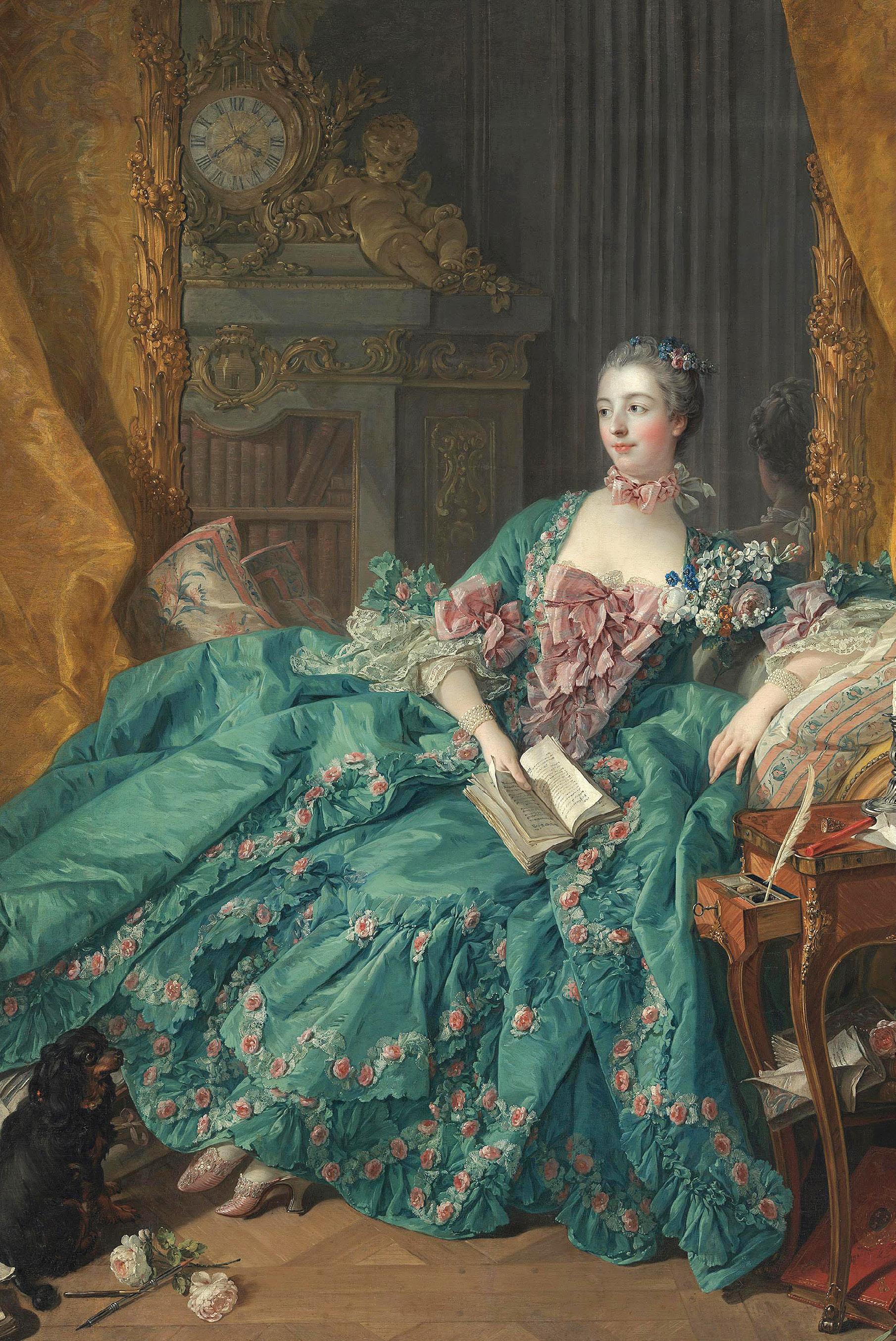
For many years after her death, Madame de Pompadour, royal mistress to Louis XV, was remembered as something of a national disgrace (Fig. 1). Historians of the nineteenth and early-twentieth centuries frequently blamed Madame de Pompadour for the political failings of Louis XV’s reign – his mismanagement of the French economy, his disastrous warmongering, and the overall corruption of his court. Madame de Pompadour, these scholars argued, seduced the monarch into a “terrible crisis, political, social, and financial, which only ended in the Revolution.”1 Such negative assessments of Madame de Pompadour’s political influence long tarnished her reputation as a patron of the arts. The artistic activities of the royal mistress were viewed as symptoms or by-products of Louis XV’s financial and moral improprieties. The works that she commissioned and championed, in turn, were assumed to “reflect the spirit of dissipation and immorality” which she allegedly promulgated through her outspoken presence at Versailles.2
More recent accounts of Madame de Pompadour’s influence, however, have increasingly challenged these unflattering appraisals of her artistic projects. Modern historians acknowledge the extraordinary complexities of Madame de Pompadour’s political and artistic experiences. In fact, this much maligned figure left us a rich, complex, occasionally contradictory (but invariably enthralling) artistic legacy – one that shaped the aesthetic landscape of court and capital for decades after her death. This is especially true of the royal mistress’s musical activities: Madame de Pompadour emerged as a quiet radical at a moment when the very foundations of French opera were in flux. From her glamorous private theater in the halls of Versailles, to her involvement in the Parisian “opera wars,” to her pioneering patronage of Rameau, Madame de Pompadour – controversial in her own time and today – came to transform musical life in eighteenth-century France.
Madame de Pompadour was born Jeanne-Antoinette Poisson, into a wealthy, upwardly mobile bourgeois class. (Her family and their friends consisted largely of financiers, bankers, and bureaucrats.) The young Madame Poisson, however, spent much of her early life being groomed for a position in high society. Her legal guardian, the tax farmer Charles François Paul Le Normant de Tournehem (Fig. 2), ensured that she received an education worthy of any aristocrat, including extensive instruction in voice, keyboard, and guitar. Madame Poisson’s top-notch musical upbringing not only endowed the budding socialite with a lifelong passion for the art form, but also provided her with a crucial cultural tool. Throughout her Parisian adolescence, she had the opportunity to observe the great salonnières of her day. She saw how these talented women wielded their musical abilities to entertain, network, and enhance their social and intellectual profiles. Indeed, when Jeanne-Antoinette Poisson married the financier, Charles Guillaume Le Normant d’Étiolles, she set up a private theater – a so-called théâtre de société – “as beautiful as the Paris Opéra” in the couple’s luxurious home. There, she further honed her musical talents, singing “with complete gaiety and all possible taste,” and performing small operatic entertainments with and for her esteemed guests.3 It was in this musical salon that the young mondaine – now known as Madame d’Étiolles – met the numerous Enlightenment luminaries that she would later patronize, including Montesquieu, Crébillon, and (her personal favorite) Voltaire. Madame de Pompadour’s experience in the Parisian salons would prove critical during her time at Versailles (Fig. 3).
When Madame de Pompadour was appointed Louis XV’s maîtresse-en-titre in 1745, she found herself at a distinct disadvantage. The official mistresses of Louis XIV had all been of noble birth; Madame de Pompadour’s bourgeois background, by contrast, elicited intense skepticism among the cut-throat and hierarchically minded courtly

aristocracy. Worse still, she was connected – by birth, by adoption, and by marriage –to some of the most despised bourgeois financiers in the kingdom. And so, from the moment Madame de Pompadour arrived at court, powerful members of the nobility began plotting her demise. Humiliating rumors swirled around her: that she was diseased, financially corrupt, and prone to sexual perversion. As part of this smear campaign, noblemen infamously wrote derogatory songs to discredit her. Known as “poissonades” (after the royal mistress’s unfortunate maiden name), these libellous works branded the royal mistress as a “grisette,” a “leech,” a “stupid filly,” and a “menial harlot.”4
The precarity of Madame de Pompadour’s position derived not merely from courtly intrigue but from the very nature of her role: as maîtresse-entire her entire existence depended on retaining the favor of Louis XV. The king could be a tricky customer. Easily bored and difficult to please, Louis XV was notorious for his morose, dispassionate manner (Fig. 4)

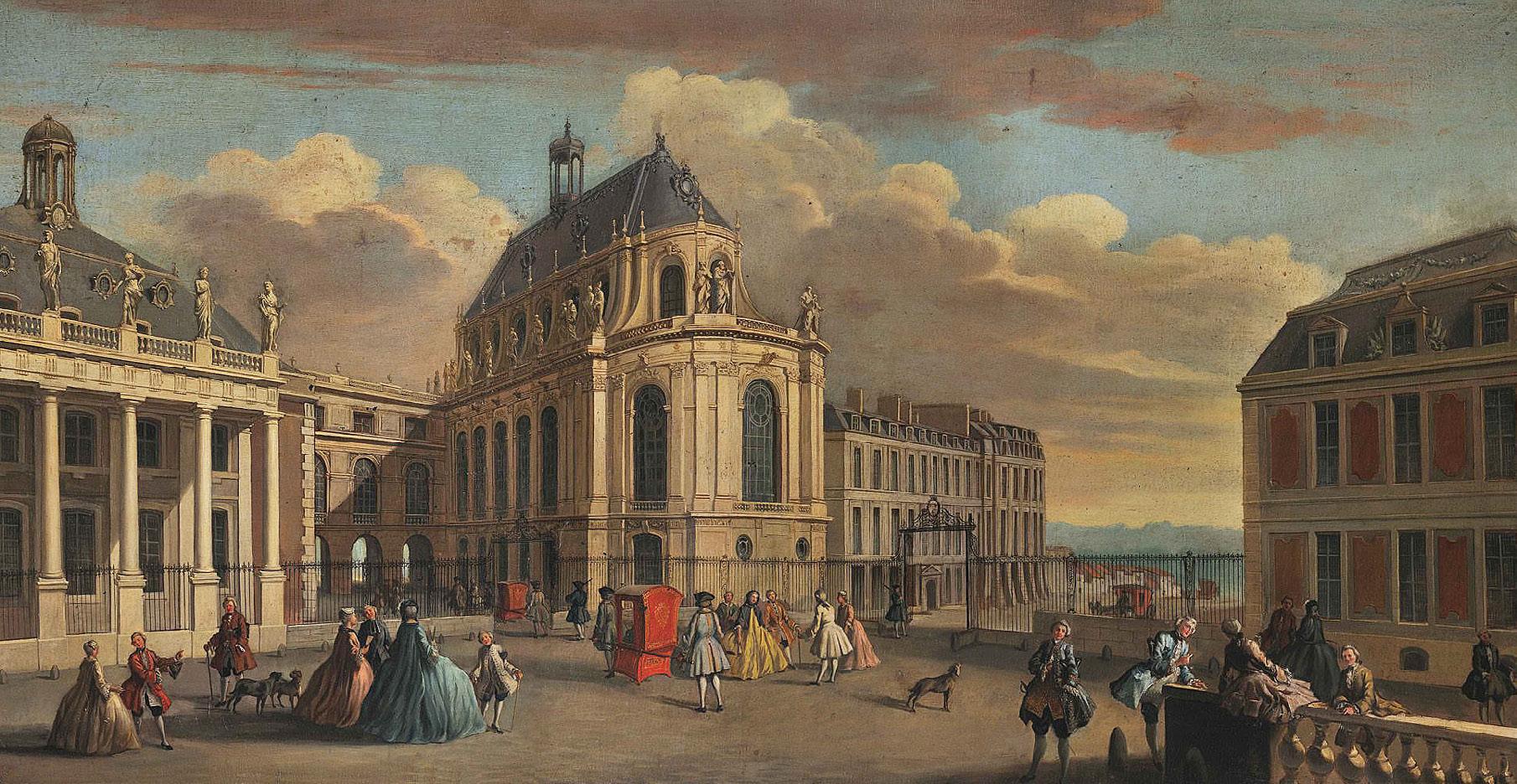
He resented his monarchical duties, preferring instead the rugged solitude of the hunt or the intimacy of the boudoir. Madame de Pompadour did her best to please this lugubrious ruler, but she found her duties as maîtresse-en-tire extraordinarily taxing. Bouts of whooping cough and tuberculosis had left her chronically disabled, and it became increasingly difficult to satisfy the king’s insatiable libido. She began to fear that the king would leave her for a younger, more virile woman, ejecting her from her courtly charge in the process. In letters to friends, she complained constantly of exhaustion, anxiety, and inadequacy. “It was a mistake coming to court,” she wrote in 1747, just two years after arriving at Versailles. By 1749 her assessment was even more dire: “The life I lead is terrible.”5 Thoroughly burnt out and fearing her days at Versailles were numbered, Madame de Pompadour hatched a plan to secure a long-term position. She hoped to forge a platonic relationship with the king, becoming indispensable as a confidante, advisor, entertainer, and administrator. As the royal mistress herself described: I saw that the king’s great illness was the boredom which continually stalked him, and that consequently the surest means of fixing his heart would be that which would make him best pass the time. […] Since I arrived at court, the king was heard saying several times: “How time flies!”6
Madame de Pompadour’s approach, in sum, was to keep the king occupied, making herself valuable by staving off the tedium of royal life. The royal mistress’s rise to power and prominence was an unsteady one. Ultimately, however, her musical education gave her the tools she needed to succeed at court and to win over the terminally bored monarch.
1747 marked a watershed moment for Madame de Pompadour: just two years after arriving at Versailles, she took a major step in cementing her relationship with the king and her position at court. As she transitioned from mistress to entertainer, Madame de Pompadour turned to the same strategies that had worked so well in her husband’s Parisian salon. Namely, she set up a private theater in the king’s personal apartments in Versailles – the Théâtre des Petits Cabinets – where she presented operatic entertainments for the king and a small coterie of friends and nobles. The Théâtre des Petits Cabinets generally performed on winter evenings after the king had been hunting, with the entertainment followed by feasting and drinking. Between 1747 and 1753, this enterprise succeeded (according to one courtier) in “shaking the king’s shyness” and “forming his good taste for pleasure and for le monde,” such that the once morose monarch became “very amiable” and “perfectly intelligent.”7
The Théâtre des Petits Cabinets was a hybrid troupe. The singers were not professional performers, but aristocratic amateurs – often granted leading roles in exchange for political favor. The dancers and orchestra, for their part, comprised a mix of talented courtiers and artists “borrowed” from the public theaters of the French capital. From the Paris Opéra, Madame de Pompadour engaged François Rebel and François Francoeur. These long-standing entrepreneurs of the Parisian stage were employed as ad-hoc music directors for the Théâtre des Petits Cabinets, playing violin in the orchestra as well as writing operas for the troupe. Pierre Jélyotte, the Opéra’s superstar haute-contre, was similarly called to action, serving as the royal mistress’s singing teacher, playing cello in the orchestra, and composing new works. From the Comédie-Italienne, Madame de Pompadour hired the choreographer Jean-Baptiste-François Dehesse and the librettist Charles-Simon Favart, who collaborated on several pantomimes for the private theater. But it was Madame de Pompadour herself who wielded ultimate power within the company: the maîtresse-en-titre acted simultaneously as patron, impresario, and leading lady, managing the troupe and taking a leading part in almost every opera it produced. The Théâtre des Petits Cabinets performed a mix of “classic” operas – works by Jean-Baptiste Lully, André Campra, Jean-Joseph Mouret, and André Destouches – and new commissions from some of the most esteemed musicians of the mid-eighteenth century. The company’s production values rivalled those of the Opéra (Fig. 5).
Madame de Pompadour called upon many of her favorite artists, including the royal engraver, Charles-Nicolas Cochin, and her preferred painter, François Boucher, to work on the scenography. Indeed, Madame de Pompadour’s greatest skill seems to have been as a collaborator – in bringing together a talented mix of creative forces to achieve her theatrical visions. Such established figures as Voltaire, Jean-Jacques Rousseau, Jean-Philippe

Rameau, and Jean-Joseph Cassanéa de Mondonville found a mouthpiece in the Théâtre des Petits Cabinets. So, too, did up-and-coming talents. The baritone, guitarist, and composer Pierre de La Garde, for instance, was almost a complete unknown when he entered Madame de Pompadour’s orbit in 1748. The royal mistress ultimately commissioned three works from de La Garde for her theater (including his 1750 Léandre et Héro); in addition, she secured him a position as singing teacher to the king’s daughters – a busy and prestigious post within the royal household.8
At the Théâtre des Petits Cabinets, Madame de Pompadour formulated an operatic aesthetic that was perfectly tailored to entertaining Louis XV and his retinue (Fig. 6). Indeed, a ticket to these spectacles was soon one of the most coveted invitations at Versailles. The duc de Luynes, for instance, recalled a scramble among the noblesse

to obtain entrance to these private soirées: “The maréchal de Noailles had insisted on being present at the little show; he was refused; the prince de Conti was also refused; the comte de Noailles had requested the same grace with extreme force without obtaining it, […] he had to go to Paris to try to calm his pain.”9 The aesthetic of the Théâtre des Petits Cabinets was also, notably, one that portrayed the royal mistress in a uniformly flattering light, showcasing her vocal talents while optimistically allegorizing aspects of her relationship with the monarch. De La Garde’s Léandre et Héro serves as an apt example. The opera follows the star-crossed lovers Héro (originated by Madame de Pompadour herself) and Léandre, whose marriage has been forbidden by their parents. After a series of brutal tribulations (including a violent tempest, a terrible maritime accident, and Héro’s attempted suicide), the god Neptune brings the young sweethearts together, giving his blessing to their union. It is easy to see why the story of an off-limits relationship, legitimized through divine intervention, would appeal to the royal mistress. By commissioning and performing Léandre et Héro, Madame de Pompadour implied that her bond with the king – though derided by hostile courtiers – was ultimately consecrated by God. The opera’s final scene features a chorus of sea gods celebrating Madame de Pompadour’s Héro. They sing: “Triumph, happy lovers! Receive, from your ardor, the just recompense to crown your faithfulness!” – in effect, a hymn of exalted praise for the royal mistress and her machinations at court.
If de La Garde’s opera provided theatrical justification for Madame de Pompadour’s presence at Versailles, it also highlighted her artistic abilities. The work provides ample opportunity for diegetic, solo singing, centering the royal mistress both musically and dramatically. Madame de Pompadour’s star turn comes in the opera’s second scene: a dejected Héro describes her suffering to an onlooking bird, “voiced” by a flute in the orchestra. (Madame de Pompadour kept a flock of pigeons at Versailles, which she proudly showed to other nobles: she would likely have appreciated this avian theme.) This ornithological duet was a bespoke product; in other words, it was explicitly matched to the talents of an amateur soprano like the royal mistress, showing off the beauty of her voice without leading to over-exertion. The aria features a relatively simple, stepwise tune over a supportive orchestral accompaniment, with the highly ornamental flute ritornello providing a sense of melodic interest. This unpretentious number is typical of much of the music composed for the Théâtre des Petits Cabinets; it stands in contrast to the grandly declamatory dramatic style adopted by earlier generations of French court composers and would soon come to influence music heard beyond the confines of Versailles.
Madame de Pompadour’s private musical agenda would exert a decisive impact on public musical aesthetics in eighteenth-century France. One important component of this chain of influence was the royal mistress’s relationship with Jean-Philippe Rameau (Fig. 7)
Madame de Pompadour likely knew the composer from her young adulthood in Parisian high society. During his rise to operatic fame, Rameau found patronage in the salons of the tax farmer Alexandre Le Riche de La Pouplinière, whose wife was a long-time rival of Madame de Pompadour and for whom, Sylvie Bouissou suggests, the composer wrote his long-lost opera, Io . Rameau experienced his most successful years during Madame de Pompadour’s first decade at court, emerging as one of the royal mistress’s greatest musical assets. Discussing the endless task of cheering up the king, she remarked that “Rameau aided me greatly in my designs. The king had a taste for gay airs, and this musician excelled in this genre.”10
At Madame de Pompadour’s request, the Opéra in Paris soon commissioned a series of works from the composer which reflected her own aesthetic goals – most of which were first presented before the king, either at Versailles or at Fontainebleau. Madame de Pompadour held a strong influence at the Opéra because she employed so many of its musicians on a part-time basis at her private theater (including, as we have noted, its primo uomo, Jélyotte, and its two directors, Rebel and Francoeur). The marquis d’Argenson, who hated Rameau and Madame de Pompadour in equal measure, was only slightly exaggerating the royal mistress’s sway when he declared that: “The Marquise de Pompadour, who is in charge of the entertainment, has just decided that we will only have Rameau’s music at the Opéra for the next two years, notwithstanding the public’s discontent with this. […] Goodbye to good taste and to good French music!”11
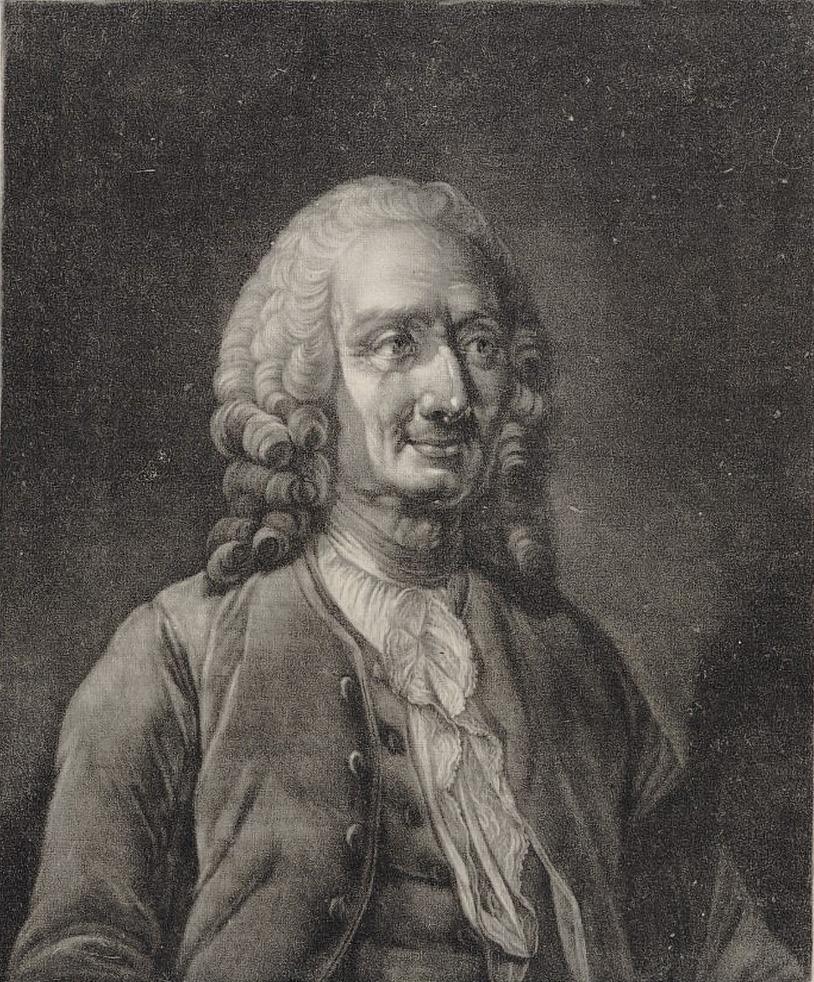
Madame de Pompadour would also play an important role in the famed querelle des bouffons (or “war of the comic actors”) in the early 1750s, a Parisian pamphlet war centered on the relative merits of French and Italian opera. This heated debate transformed the musical and intellectual landscape of Enlightenment Paris, helping to popularize the so-called “galant” style in France and bringing the writings of Rameau, Rousseau, and the Encyclopédistes into the public spotlight. During the querelle, the royal mistress emerged as an outspoken but flexible supporter of the traditional French camp. She frequently pronounced against Italian-style music (“When the Italians […] produce harmonious effects, they lose their footing, and they produce nothing but noise”),12 and she praised Mondonville and Rameau as bastions of the national aesthetic. And yet, for all that she loved the music of Rameau, Madame de Pompadour resented his outright dismissal of Italian composers. (She noted with regret that “even the most beautiful aria by Pergolesi […] makes him grimace with impatience.”)13 Indeed, as the royal mistress was publicly partisan toward the conservative (i.e., harmonically and structurally complex) French sound, her own private patronage had foreshadowed the innovations of the “natural” and tuneful Italian school. The royal mistress gave the premiere of the full version of Rousseau’s Italian-inspired Le devin du village with her troupe in 1753. The directness of melodic expression in such “modern,” Italianate repertoire may even have been associated with the limitations of Madame de Pompadour’s voice. Put another way, the accommodations made for the royal mistress’s amateur capabilities and bouts of chronic illness had led to a simplification of style at the Théâtre des Petits Cabinets; this eminently “singable” aesthetic then found resonance in the imported, bouffons repertoire that soon took the rest of France by storm.
Madame de Pompadour’s musical projects tapered off toward the end of her life. Louis XV, cash-strapped after the War of Austrian Succession, pulled much of the funding from the Théâtre des Petits Cabinets in the early 1750s. Thereafter, Madame de Pompadour moved her troupe to her private chateau at Bellevue, restricting its audience and performance schedule. The death of her daughter, Alexandrine, in 1754 marked the definitive conclusion of Madame de Pompadour’s public musical activities. From this point on, the royal mistress became increasingly religious, and she found solace at her countryside retreats, where she could meditate, take in the fresh air, and entertain Louis XV in rustic tranquility. After her 1764 death, though, Madame de Pompadour’s theatrical legacy lived on. As we have traced, she had championed a new, more melodious style of high Baroque music that prefigured the so-called “Classical” style, leaving an indelible mark on the history of musical aesthetics. Madame de Pompadour had served as patron to some of the most important musical and literary figures of her time: Rameau, Mondonville, and even Voltaire would not have had such illustrious operatic careers without the maîtresse-en-titre’s support. Perhaps most importantly, Madame de
Pompadour’s reign represented a flashpoint in the history of French musical patronage. The Théâtre des Petits Cabinets signaled a move towards bourgeois musical patronage – and particularly bourgeois women’s patronage – that presaged the salon culture of the Industrial Revolution, where the wives of industrialists and bankers drove new forms of musical innovation. For although Madame de Pompadour spent much of her life in royal chateaux, her radicalism derived from the immense cultural power that she accrued as a bourgeois woman within a system that was actively hostile towards her. Madame de Pompadour wielded a bourgeois musical education, paid for by a burgeoning finance industry, into unprecedented musical influence, transforming the French operatic landscape for generations to come.
1. Jean Delaire, “Romances of the Throne: Madame de Pompadour,” Womanhood: The Magazine of Woman’s Progress and Interests, Political, Legal, Social, and Intellectual, and of Health and Beauty Culture 8, no. 46 (September 1902): 238.
2. “Art under La Pompadour,” The Gentlewoman and Modern Life 47, no. 1212 (September 27, 1913): 9.
3. Letter from Madame du Deffant to Président Hénault, quoted in Edmond de Goncourt and Jules de Goncourt, Madame de Pompadour (Paris: Charpentier, 1878), 12. (All English translations of quotes are by the author unless otherwise specified.)
4. Louis François Armand du Plessis, duc de Richelieu, Mémoires du Maréchal duc de Richelieu, vol. 8 (Paris: Buisson, 1793), 163; “Poissonade” quoted in David Mynders Smythe, Madame de Pompadour: Mistress of France (New York: W. Funk, 1953), 194; “Poissonade” quoted in Robert Darnton, Poetry and the Police: Communication Networks in Eighteenth-Century Paris (Harvard University Press, 2012), 186; “Poissonade” in Jean-Frédéric Phélypeaux Maurepas and Pierre Clairambault, Recueil Clairambault-Maurepas: chansonnier historique du XVIIIe siècle, vol. 7 (Paris: Emile Raunié, 1884), 136.
5. Letter from Madame de Pompadour to the comtesse de Noailles in François Barbé-Marbois, ed., Lettres de Madame la marquise de Pompadour: depuis 1746 jusqu’à 1752, inclusivement, vol. 1 (Troyes: Cahiers Bleus, 1985), 39; Letter from Madame de Pompadour to the comtesse de Lutzelbourg in Cécile Berly, ed., Lettres de Madame de Pompadour (Paris: Place des éditeurs, 2014), 132.
6. Jeanne-Antoinette Poisson, marquise de Pompadour, Mémoires de madame la marquise de Pompadour, vol. 1 (Liège, 1766), 326–27.
7. Emmanuel, duc de Croÿ, Journal inédit du duc de Croÿ, 1718–1784 (Paris: E. Flammarion, 1906), 91.
8. Pierre Laujon, “Spectacles des Petits Cabinets de Louis XV,” in Oeuvres choisies de Pierre Laujon, vol. 1 (Paris: L. Collin, 1811), 71–90.
9. Charles Philippe d’Albert, duc de Luynes, Mémoires du duc de Luynes sur la cour de Louis XV (1735–1758), ed. Eudoxe Soulié and L. Dussieux, vol. 8 (Paris: Firmin, 1860), 87.
10. Jeanne-Antoinette Poisson, marquise de Pompadour, Mémoires de madame la marquise de Pompadour, vol. 2 (Liège, 1766), 104.
11. René-Louis de Voyer Argenson, Journal et mémoires du marquis d’Argenson, 5: 344.
12. Jeanne-Antoinette Poisson, marquise de Pompadour, Mémoires de madame la marquise de Pompadour, vol. 1 (Paris: Mame et Delaunay-Vallee, 1830), 413.
13. Ibid., 412.


Libretto by Pierre Laujon
Intermission Io (c. 1745) Jean-Philippe Rameau
Cochin, Décoration des la salle de spectacle Versailles 1745, colorized. https://commons.wikimedia.org/wiki/File:Cochin_D%C3%A9coration_des_la_ salle_de_spectacle_Versailles_1745_colorized.jpg. Wikimedia Commons.

Opéra-ballet: de La Garde’s Léandre et Héro & Rameau’s Io
Avi Stein, Musical Direction, Conductor, & Harpsichord
Nick Olcott, Stage Direction & Title Translation
Seán Curran, Choreography, Léandre et Héro & Io
Catherine Turocy, Choreography, Léandre et Héro
Caples Jefferson Architects, Scenic Design
Adam Thompson, Scenic Project Design
Machine Dazzle, Costume Design, Io
Jules Peiperl, Assistant Costume Design, Io
Christopher Brusberg, Lighting Design
Serafim Smigelskiy, Continuo Cello
Léandre et Héro costumes courtesy of The New York Baroque Dance Company, designed by Marie Anne Chiment
Jean-Philippe Rameau Io Critical edition by Thomas Soury, edited for the Rameau Opera Omnia under the direction of Sylvie Bouissou with music from the original version of Platée. Used by arrangement with European American Music Distributors Company, agent for Société Jean-Philippe Rameau/Baerenreiter Verlag.
Léandre et Hero edition prepared by Ryan Brown, Jonathan Woody, Avi Stein, with assistance from Rebecca Harris-Warrick, for Opera Lafayette
Overture from Clérambault’s Léandre et Héro and de La Garde’s La Toilette de Venus
Sylvie Bouissou & Mathias Auclair, Pre-Concert Lecture
Opera Lafayette
Artists (Léandre et Héro)
Léandre Maxime Melnik
Héro Emmanuelle de Negri
Neptune Douglas Williams
Water Spirits Seán Curran Company
Inhabitants of Sestos, Tritons New York Baroque Dance Company
Inhabitants of Sestos, Sailors, Divinités de la Mer Opera Lafayette Chorus
Artists (Io)
Mercure Patrick Kilbride
Jupiter Douglas Williams
Io Emmanuelle de Negri
Apollon Maxime Melnik
La Folie Gwendoline Blondeel
Storm, Grâces, Plaisirs et Jeux Seán Curran Company
Grâces, Plaisirs et Jeux Opera Lafayette Chorus
Production Staff
Rachel Dane Stage Manager
Sarah Greenberg Assistant Stage Manager
Nancy Jo Snider Orchestra Personnel Manager
Jonathan Woody Artistic Associate, Chorus Contractor
Leslie Nero Music Librarian
Todd Mion Technical Direction
Andrew Sauvageau Supertitles
Seán Curran Company
Jack Blackmon - Evan Copeland - Abigail Curran
Gabriella Flanders - Jacoby Pruitt - Ryan Redmond
New York Baroque Dance Company
Carly Fox - Meggi Sweeney Smith - Brynt Beitman
Patrick Pride - Matthew Ting - Jacoby Pruitt
Opéra-ballet: de La Garde’s Léandre et Héro & Rameau’s Io
Dessus: Shabnam Abedi, Aani Bourassa, Olivia Greene, Marie Marquis, Margot Rood†
Haute-Contre: Oliver Mercer†, Richard Pittsinger, Naomi Steele
Taille: David Evans, Derrick Miller, Joseph Regan
Basse: Joseph Baker, Mark Duer, Edmund Milly†, Gilbert Spencer
Violin 1
Jacob Ashworth* Concertmaster
June Huang
Theresa Salomon
Jude Ziliak
Gesa Kordes
Violin 2
Keats Diefenbach*
Natalie Kress
Jeremy Rhizor
C. Anne Loud
Viola
Kyle Miller*
Isaiah Chapman
Cello
Serafim Smigelskiy*
NJ Snider
David Bakamjian
Oliver Weston
Bass
John Stajduhar*
Flute
Charles Brink*
Immanuel Davis
Oboe
Margaret Owens*
Caroline Giassi
Bassoon
Anna Marsh*
Ben Matus
Harpsichord
Avi Stein*
†Cover Artist
In the spring of 2021, a spectacular, unpublished source documenting the activities of the Théâtre des Petits Cabinets—the theater at Versailles outfitted by King Louis XV for Madame de Pompadour—appeared on the Parisian market. This was a manuscript score containing two opéras-ballets by the librettist Pierre Laujon and the composer Pierre de La Garde: La toilette de Vénus and Léandre et Héro. On 25 February 1750, these works had been presented by the favorite before the king, alongside an earlier collaboration from the same authors, Æglé (repackaged as Les amusements du soir, ou La musique). Together, the grouping formed a trilogy entitled La journée galante. The music of La toilette de Vénus and Léandre et Héro was long believed to be lost; these opéras-ballets were known only from their librettos and from a few rare mentions in the memoirs of French courtiers like the duc de Luynes. Thanks to the support of Opera Lafayette, however, the Bibliothèque nationale de France (National Library of France, hereafter BnF) was able to acquire this remarkable manuscript, which will serve as the basis for the company’s production of Léandre et Héro this spring in Washington, DC, and New York. The occasion offers an opportunity to review the history of the BnF music department, its acquisitions policy, and the performance partnership that has enabled the rediscovery of this important operatic work.
The special attention paid to musical patrimony by the Bibliothèque du Roi, or French royal library—of which the BnF is a direct descendant—dates back to the early eighteenth century. (It should be noted that the “official” Bibliothèque du Roi was distinct from the personal collections of the Bourbon monarch and the Crown princes, which were dispersed at the time of the Revolution.) The royal library acquired the works of the composer and music theorist Sébastien de Brossard (1655–1730) in 1726, and the autograph manuscripts of the composer Marc-Antoine Charpentier (1643–1704)
the following year, underscoring its emerging institutional emphasis on the art form (Fig. 1).
Indeed, from this period onward, the library deliberately cultivated its musical holdings, consisting of both manuscript and printed materials. (Relevant materials from the Middle Ages were placed in the purview of the manuscripts department, where they remain to this day.) Expansion through legal deposit, as well as through acquisitions and gifts, led to the drafting of the first specialized inventory for music in 1753. Compiled by the Abbot Martin, the catalogue contained just over 1,100 entries. A highpoint of the late ancien régime was the bequest of the autograph scores of Jean-Jacques Rousseau (1712–1778), donated in 1781 by the executor of the composer and philosophe’s estate. During the French Revolution, these music collections continued to grow, through the confiscation of personal libraries from aristocratic émigrés and members of the royal family, as well as through further donations. One major contribution from the latter category were the holdings of the Concert Spirituel—eighteenth-century Europe’s preeminent institution for public, orchestral concerts—which were ceded to the BnF in 1794 by the last of that organization’s directors. A catalogue drawn up by Paul-Louis Roualle de Boisgelou in 1803 reflected the accelerating development of these musical riches, listing some 4,000 items, in total. A provision for the legal deposit of music printed in France—outlined in legislation dating from 1714 and subsequently reaffirmed in 1810 and 1814—facilitated significant further expansions with the addition of two to four thousand new titles each year.
The beginning of the nineteenth century was marked by a profound change in the status of autograph musical manuscripts. During the pre-revolutionary period, materials representing intermediate stages of the compositional process (drafts, sketches, working scores, tidied-up scores, autograph copies, and the like) were not seen as hugely valuable, and were preserved only in rare cases. The final autograph manuscript might be saved by the author—as, for example, with Marc-Antoine Charpentier—only when the work in question was not ultimately destined for publication. During the Romantic
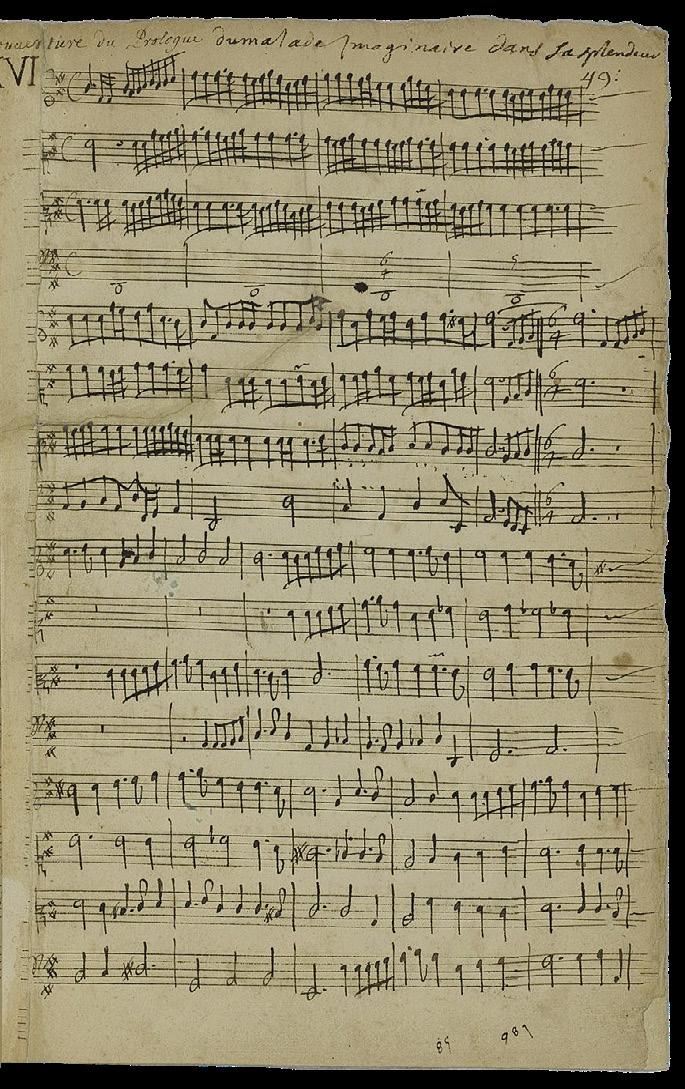
era, however, an emerging appreciation for the composer as creative artist bestowed an increasingly sacred dimension to these “utilitarian” sorts of documents. (The development of critical editions also helped to establish autograph sources as important objects of scholarly study.) In this domain, France moved more slowly than did Prussia, which began to consolidate the scattered manuscripts of the great Germanic masters from the 1820s. In these years, the BnF had not yet articulated or implemented an official policy for the acquisition of autograph musical manuscripts—materials which remained inexpensive before American libraries began to intervene in the European market in the early twentieth century. The BnF nonetheless received some notable donations, including the important autograph manuscripts of Jean-Philippe Rameau (1683–1764), collected by Jacques-Joseph-Marie Decroix (1746–1826) and ceded by his heirs in 1843 (Fig. 2). In 1875, a reorganization of the BnF led to the grouping together of printed music with manuscripts. In 1897, when Leopold Delisle wrote his introduction to the Catalogue général des livres imprimés de la Bibliothèque nationale (General Catalogue of Printed Works in the National Library), the music collections consisted of 30,169 documents, including 1,421 “reserve” (or highly precious) documents; these holdings also included “a series of about 3,800 boxes containing approximately 190,000 sorted but not catalogued items.”
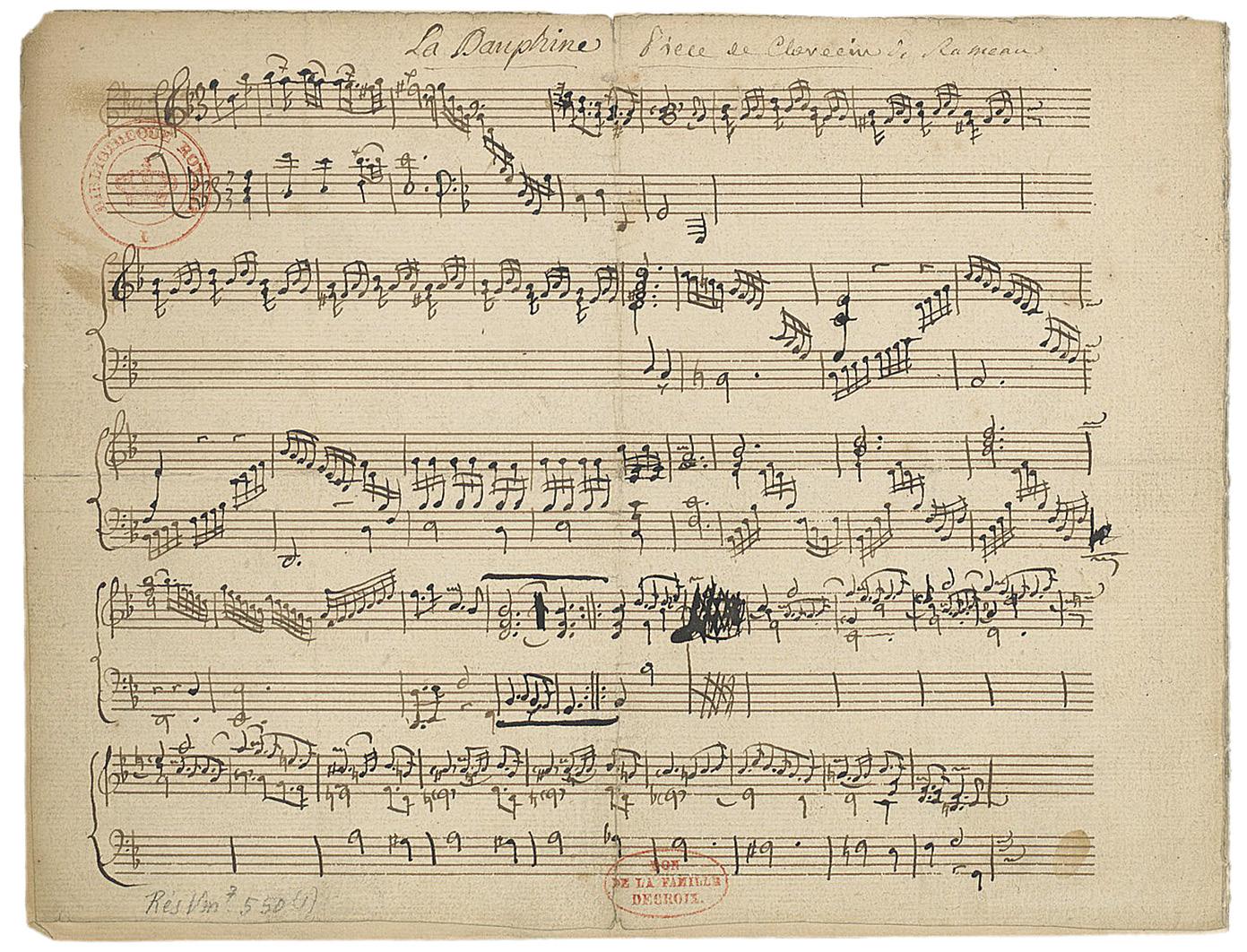
The printed catalogue of early music collections drawn up by Jules Écorcheville does little to soften the severe observations made by musicologists regarding the state of Parisian musical libraries in the immediate post-war period. These figures underscored “the deplorable conditions that affected both elementary and meticulous researches, the dispersion of holdings in locations throughout the city, outdated functional practices, gaps in relevant collections, etc.” They therefore called for a merger between the BnF and two other major libraries in the French capital: those of the Paris Conservatoire and the Paris Opéra. The goal was to construct “a serious inventory and a practical catalogue” of the combined holdings of these three institutions, and to make the best use of the credit granted to them.
The Paris Conservatoire, founded in 1795, had long held the city’s most important music library, based upon the expanse of its precious collections. The nucleus of these collections was formed from revolutionary-era confiscations, as well as state allocations following the fall of the July Monarchy. These holdings were further developed in the second half of the nineteenth century, first through a bequest of the manuscripts of Hector Berlioz (1803–1869), and then through the initiatives of Jean-Baptiste Weckerlin, the conservatory’s director between 1876 and 1909. Weckerlin spearheaded an acquisitions

policy that paid little heed to expense. His legacy was crowned by the donation of two remarkable treasures: the autograph of Beethoven’s Appassionata sonata, from the pianist René Baillot (1813–1889); and that of Mozart’s Don Giovanni, from the singer Pauline Viardot (1821–1910) (Fig. 3). In 1912, the institution’s preeminence was consolidated with another major acquisition: a bequest from the Opéra’s archivist, Charles Malherbe (1853–1911). This was one of the world’s most significant private collections of musical manuscripts, including 40 manuscripts of Mozart, 90 of Beethoven, 20 of Haydn, 30 of Mendelssohn, 50 of R. Schumann, 50 of Schubert, among many other riches.
Established in 1866, the library of the Paris Opéra is younger than that of the Conservatoire. But it is a multi-functional institution, also operating as an archive and museum. It holds a wide variety of resources related to music: scores, drawings, prints, photographs, architectural plans, correspondence, posters, programs, tickets, paintings, sculptures, objects, etc. These documents derive mainly from the Opéra itself, which entrusted its historical collections to the library in 1866, and continues to transfer materials produced within the framework of its staging activities when they no longer have direct usefulness for performance. The musical manuscripts in the company’s collections were often drawn up by copyists, but some bear annotations from associated composers. Since the beginning of the eighteenth century, composers have also occasionally left their scores to the theater, including full works as well as fragments (particularly adaptations made for the Parisian stage). Representative artists include both Rameau and Gluck (1714–1787).
The Conservatoire and Opéra libraries were initially directed by personalities coming from the world of performance—figures who lacked extensive technical knowledge relating to conservation. These institutions, in other words, were able to amass significant collections without being able to fully organize and maintain them. In response to complaints from music researchers, the French State decided to place these disparate musical resources into a single location, with centralized management: when the music department of the BnF was created in 1942, the holdings of the conservatory and the Opéra were incorporated therein. These consolidated collections now constitute one of the largest music libraries in the entire world.
The BnF Music Department is tasked with collecting, preserving, communicating, and promoting the French musical heritage. In the past eighty years it has developed a wide-ranging acquisitions policy, limited neither by chronology (although concentrated on works beyond the Middle Ages), nor document type (including prints, manuscripts, scores, drawings, engravings, photographs, paintings, sculptures…), nor stylistic barriers: it extends to a large variety of music (art music, film music, jazz, pop music…). It is also not confined to the works of French composers, extending instead to any production linked to France. This is evidenced, for example, by the 1986 acquisition of the sketches and autograph manuscript of Stravinsky’s Le sacre du printemps (The Rite of Spring), created in Paris in 1913.
Since the founding of the BnF Music Department, many autographs from renowned composers have entered its collections, often through donations. BnF holdings include manuscripts from such notable artists as: Emmanuel Chabrier (acquired 1946), César Franck (1946–1947), Ernest Chausson (1947), Erik Satie (1948), Albert Roussel (1954), Charles Koechlin (1967), Arthur Honegger (1973–1976), Gabriel Fauré (1978), Lili and Nadia Boulanger (bequest, 1980), Igor Markevitch (1985), Pierre Boulez (1987), Henri Sauguet (donation, 1991 and acquisition, 2018), Francis Poulenc (donation, 1997), André Caplet (acquisition, 2000), André Jolivet (donation, 2002), Alfred Bruneau (donation, 2013), Olivier Messiaen (2016), Philippe Gaubert (2017), Antoine Duhamel (2017), Léo Ferré (2017), and Charles Gounod (acquisition, 2021). To the extent possible, sets of manuscripts are preferred. Nevertheless, acquisitions are more often made, by chance, from the sales of isolated works: Claude Debussy’s Le martyre de Saint Sébastien in 1961; Maurice Ravel’s Boléro in 1992; the piano-vocal score of Hector Berlioz’s Les Troyens, César Franck’s Variations symphoniques, and Charles Gounod’s Gallia, all in 2016; Pierre Boulez’s Notations in 2017; Henri Dutilleux’s Métaboles and Olivier Messiaen’s L’Ascension in 2018; Jules Massenet’s Marie-Magdelaine in 2022, etc. These acquisitions have taken their place within the substantial corpus already present in the library’s collections.
The BnF is also keenly interested in expanding its holdings of manuscripts from contemporary composers. Thus, as early as 1945, Richard Strauss (1864–1949) donated to the BnF the autograph manuscript of one of his symphonic masterpieces, the Alpine Symphony. In 1951, Messiaen (1908–1992) granted those of such important works as Île de feu 1, Île de feu 2, Mode de valeurs et d’intensités, and Neumes rythmiques. Henri Dutilleux offered that of Timbres, espace, mouvement ou La nuit étoilée in 1984 and Iannis Xenakis that of the Jonchaies, in 1985. In 2005, the manuscript of Pascal Dusapin’s
opera, Roméo et Juliette, entered through a donation. In recent years, several composers have shown extreme generosity by donating important proportions of their output, or even the entirety thereof. This group includes: Jorge Arriagada (born in 1943), Michel Decoust (born in 1936), Hugues Dufourt (born in 1943), Bechara El-Khoury (born in 1957), Philippe Fénelon (born in 1952), François-Bernard Mâche (born in 1935), Michèle Reverdy (born in 1943), and Gabriel Yared (born in 1949). Finally, the BnF has taken care to enrich its holdings by consolidating the work of major music collectors. The first acquired collection, from 1978, was that of the musicologist Geneviève Thibault de Chambure, brought in to supplement the library’s national holdings in the domain of early music. These holdings were already very rich, consisting of, among other jewels, the Brossard collection and the Charpentier manuscripts (mentioned above); the Philidor collection (works copied at the request of King Louis XIV under the direction of André Danican Philidor, seized at the Revolution); the holdings of the pre-revolutionary Menus Plaisirs; the collection of the Marquis de La Salle, confiscated at the Revolution; the Borghèse collection, comprised of madrigals from the sixteenth and seventeenth centuries and acquired around 1892; the Toulouse-Philidor collection, compiled under the direction of André Danican Philidor for one of the sons of Louis XIV, Louis-Alexandre de Bourbon, comte de Toulouse, and acquired partially in 1978. Of final note is the Chambure collection, which entered the BnF via donation, and brings together some 600 scores, including 120 manuscripts. The latter group includes: a manuscript by the chansonnier Nivelle de la Chaussée containing the only poem by François Villon to have been set to music; a notebook that Girolamo Frescobaldi used for compositional sketches from 1607 to 1637 (the oldest autograph manuscript preserved at the BnF) (Fig. 4); as well as precious collections of cantatas and Italian opera arias from the seventeenth and eighteenth centuries, some richly decorated, and lute and guitar tablatures of French, Italian, and German origin.
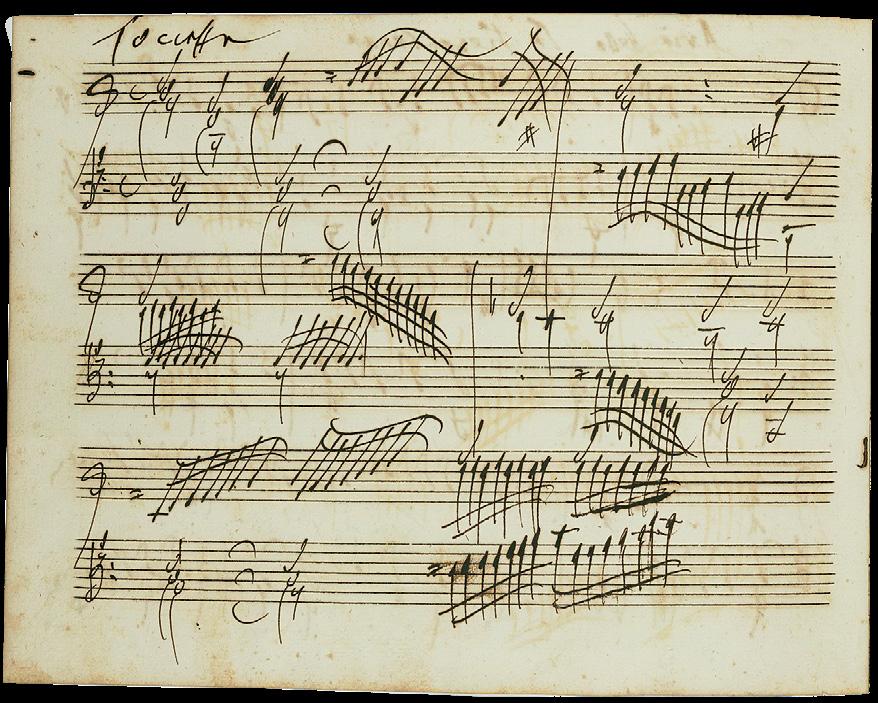
The volume containing the orchestral score of La toilette de Vénus and Léandre et Héro was the BnF music department’s most important early-music acquisition in a decade. The last purchase of similar significance was that of Jean-Philippe Rameau’s annotated copy of his Traité de l’harmonie, a foundational work of Enlightenment music theory, in 2012. The unpublished musical manuscript of Laujon and de La Garde, long thought to be lost, reappeared in May 2021: it was advertised in a catalogue announcing the sale of the theatrical collections of the comte Emmanuel d’André, the CEO of a mail order company and a prominent personality in the French world of music and the arts.
Presented in a magnificent Morocco binding with gilded inlay and attributed to King Louis XV’s bookbinder, AntoineMichel Padeloup, the manuscript originally belonged to Louis-César de La Baume Le Blanc, duc de La Vallière. (La Vallière’s coat of arms can be found on the front of the binding (Fig. 5).) The nobleman was the director of the Théatre des Petits Cabinets. He systematically commissioned copies of the musical works performed on Madame de Pompadour’s stage, as revealed in the catalogue of his personal library, drawn up at the time of his death in 1784. (The manuscript of La toilette de Vénus and Léandre et Héro appears within that inventory, listed as item 3527.) From La Vallière, the document passed to René de Brassac de Béarn (1862–1919), as evidenced by an ex-libris emblazoned inside the volume, and from a subsequent catalogue of sale. In 1933 the manuscript was purchased by the English book collector John Roland Abbey, who owned it until 1967. Its next appearance was more than a half-century later, on the occasion of the dispersal of d’André’s collection in 2021.
I have established friendly relations with Opera Lafayette board member Nizam Kettaneh, a result of his regular research sojourns in Paris in the music reading rooms of the BnF. Knowing Kettaneh’s taste for the rare repertoires of the pre-revolutionary period, I related the BnF’s desire to acquire this manuscript, while making no secret of
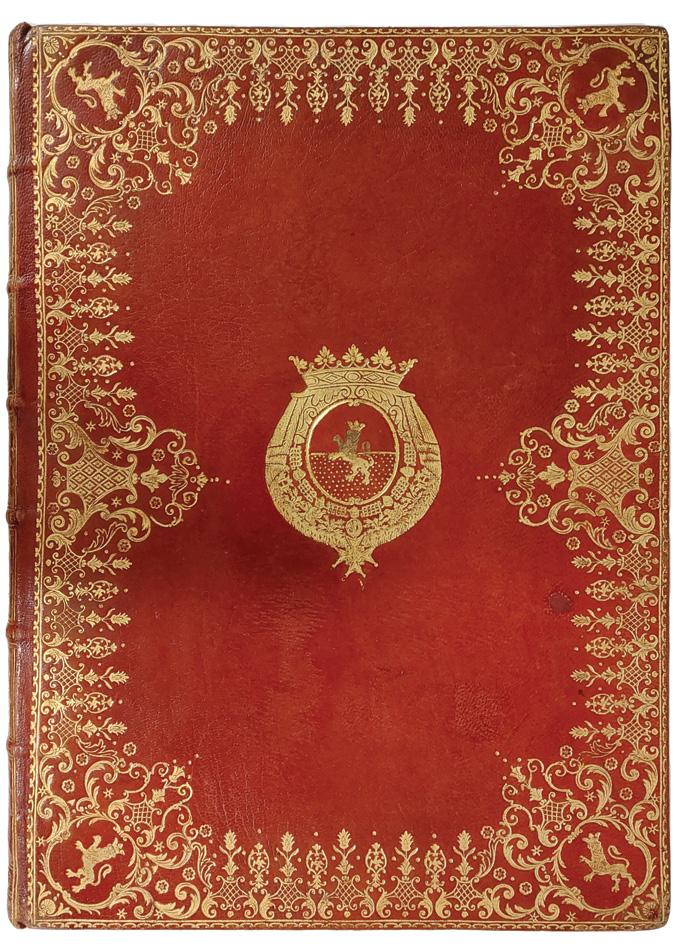
the budget scarcity in which my department found itself at the time. (Before its sale, the score was valuated between 20,000 to 25,000 euros.) Kettaneh immediately agreed to support our purchase of the document. In return, we granted a year-long period of exclusive performing rights to Opera Lafayette, allowing the company to present the modern premiere of Léandre et Héro in Washington, DC, and New York. Kettaneh helped to raise 25,000 Euros, thanks to his own generosity and that of Ishtar Kettaneh Méjanès, Jean-Bernard Wurm, and Albert Attié. Fortunately, the bids at auction did not exceed the ceiling that we had set for ourselves. The manuscript was obtained for 26,000 euros; other potential buyers may have been drawn more to its splendid binding than to the musical treasures this binding contains.
The plot of Léandre et Héro is drawn from Greek mythology, as popularized in two poems of Ovid’s Heroides. The opéra-ballet of Laujon and de La Garde was conceived as the third and last entrée (act) of La journée galante, and it is probably for this reason that it does not begin with an overture. The stage depicts the city of Sestos on one side (the libretto erroneously denotes “the island of Sestos”), a temple of Venus on the other, and the sea in the background (Fig. 6).
At the outset, it is night: Leander (performed by the vicomte de Rohan at the Versailles premiere) and Hero (initially performed by Madame de Pompadour) exchange loving words, while describing the animosity of their parents, who oppose their union. Because of the love that animates her, Hero has been chosen as a priestess of Venus. Dawn breaks and the lovers must part. Leander throws himself into the sea and is carried away by the waves. In the second scene, Hero is alone onstage and laments. She envies the fate of the birds, whose song is imitated by a flute solo. A chorus of priestesses invites her to celebrate Love at daybreak, but she has no desire to do so. The beginning of the third scene is marked by a solemn orchestral introduction, followed by the arrival of the inhabitants of Sestos, who praise Venus and Love with their songs. The celebration, punctuated by two minuets, is interrupted by a storm (Fig. 7). The memoirs of the duc de Luynes relate that this number seemed long at the time of its premiere; it also posed technical difficulties for the stagehands and the small orchestra of Madame de Pompadour’s theater.
The storm is rendered by the full orchestral forces in rushing scales and chords (thirds and fifths repeated at a rapid pace). It continues through the following three scenes: a chorus of sailors struggling against the raging sea sings its terror (fourth scene); Leander is engulfed by the waters (fifth scene); Hero, consumed by grief, throws herself into the sea (sixth scene). Neptune (played at Versailles by the marquis de La Salle) then puts an end to the storm and welcomes the lovers in his palace (seventh scene). Leander is led
there by the Tritons, and Hero by the Nereids, to the accompaniment of the divinities of the Sea. The lovers rejoice in their meeting and sing praises to Neptune, who unites them in immortality. The chorus then celebrates the triumph of Love. The eighth and final scene ends with a contredanse.
Léandre et Héro did not enjoy the same renown as the other extracts of Laujon and de La Garde’s operatic trilogy. It received neither the artistic acclaim of Æglé, which was revived at the Paris Opéra over ninety times between 1751 and 1777, nor the political success of La toilette de Vénus, which seemed to have been favored by Madame de Pompadour. The royal mistress commissioned from François Boucher two paintings inspired by this latter work: The Toilette of Venus, now at the Metropolitan Museum of Art in New York, and The Bath of Venus, now at the National Gallery of Art in Washington, DC. Let us hope that Léandre et Héro will find new life as a result of Opera Lafayette’s revival, and that we will one day be able to hear La journée galante in its entirety, as it first held the stage at Versailles over 270 years ago.


On the history of the département de la Musique and its collections:
1. Mathias Auclair, “De la section Musique à la création du département,” in Histoire de la Bibliothèque nationale de France, ed. Bruno Blasselle and Gennaro Toscano (Paris: Bibliothèque nationale de France, 2022), 378–384.
2. Mathias Auclair (ed.), Trésors de la musique classique: partitions manuscrites, XVIIe-XXIe siècle (Paris: Textuel, BnF éditions, 2018).
3. François Lesure, “The Music department of the Bibliothèque nationale,” Notes 35 (1978): 251–268.
4. Catherine Massip, “La musique à la Bibliothèque nationale de France. 1: Les sources écrites,” Fontes artis musicae 47, no. 2–3 (2000): 104–130.
5. Catherine Massip, Le livre de musique (Paris: Bibliothèque nationale de France, 2007).
On the Théâtre des Petits Cabinets:
6. Émile Campardon, Madame de Pompadour et la cour de Louis XV au milieu du XVIIIe siècle. Ouvrage suivi du catalogue des tableaux originaux, des dessins et miniatures vendus après la mort de Mme de Pompadour, du catalogue des objets d’art et de curiosités du Mis de Marigny, et de documents entièrement inédits sur le théâtre des petits cabinets… (Paris: Plon, 1867).
7. Adolphe Jullien, Histoire du théâtre de Mme de Pompadour, dit théâtre des Petits Cabinets..., (Paris: J. Baur, 1874).
8. Louis Dussieux and Eudore Soulié (eds.), Mémoires du duc de Luynes sur la Cour de Louis XV (1735–1758), 17 vols. (Paris: Firmin-Didot frères, 1860-1865).
Opéra-ballet: de La Garde’s Léandre et Héro & Rameau’s Io
On the manuscript of La toilette de Vénus and Léandre et Héro:
9. The manuscript of La toilette de Vénus and Léandre et Héro is held in the music department of the Bibliothèque nationale de France under the call number: RES VMA MS-3028. It is mentioned and described in the catalogues below:
10. Catalogue des livres de la bibliothèque de feu M. le duc de La Vallière [Texte imprimé]. Première partie, contenant les manuscrits, les premières éditions, les livres imprimés... dont la vente se fera dans les premiers jours du mois de décembre 1783, 4 vols. including 1 supplement (Paris: G. De Bure, 1783). The sale took place on 12 January 1784. See Volume 2, page 480, n°3527.
11. Catalogue de la bibliothèque de M. le comte René de Béarn... Vente à Paris, hôtel des commissairespriseurs, 24–26 juin et 15–18 novembre 1920, 25–26 avril 1921 et 19–21 juin 1923, 4 vols. (Paris: L. Gougy, 1920–1923). See Volume 3, page 33, n°77.
12. Catalogue of the celebrated library of Major J. R. Abbey. The third portion: [auction, 19 – 21 June 1967] London, Sotheby’s (London: Sotheby’s, 1967). See n°1968.
13. Bibliothèque théâtrale du comte Emmanuel d’André: livres et manuscrits: vente, Paris, 11 juin 2021 (Paris: Binoche et Giquello, 2021). See pages 20–21, n°22.
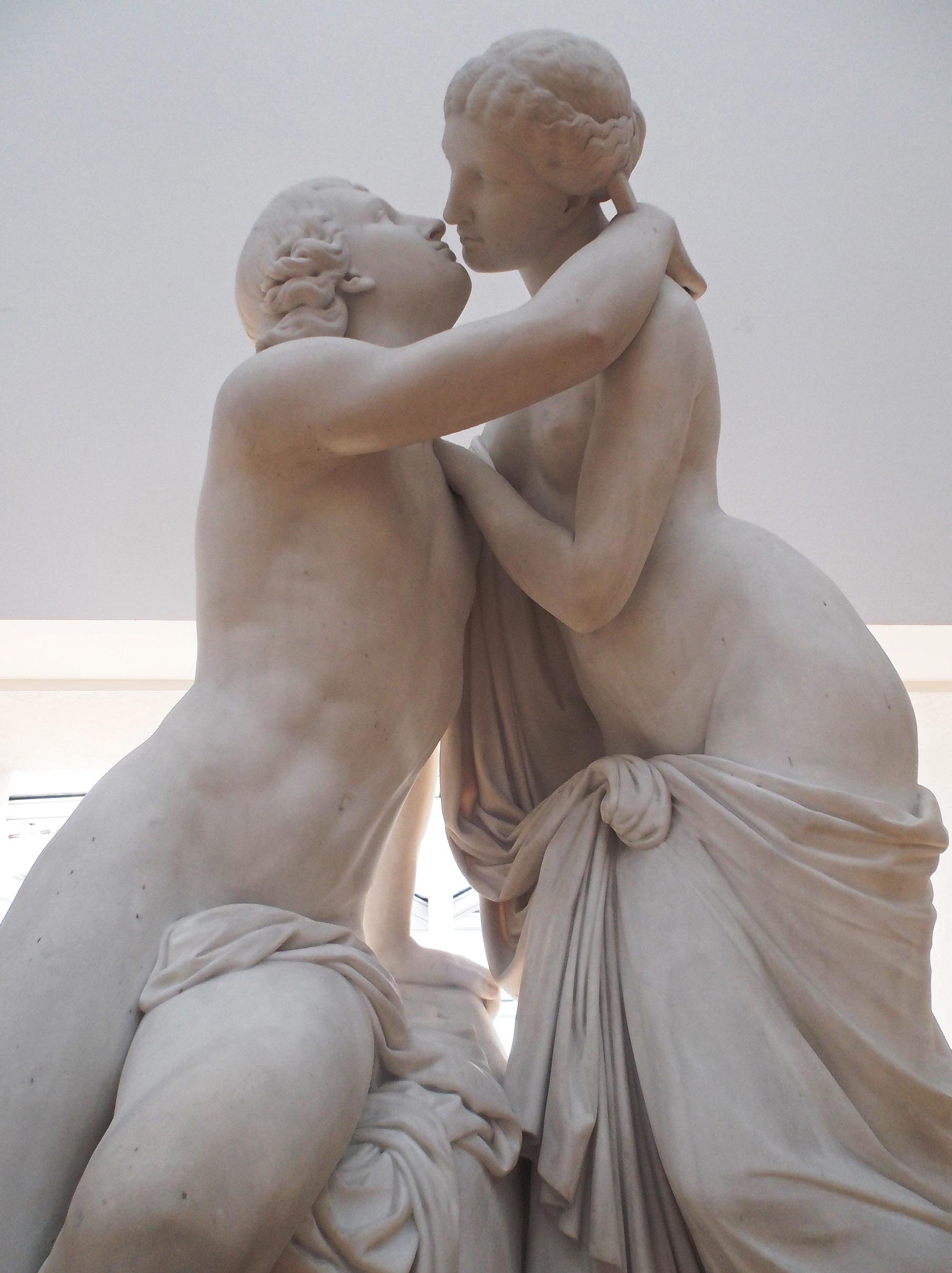
Like Nélée et Myrthis and Zéphire, Io belongs to Rameau’s catalog of unperformed, undated works—works for which the librettist, the circumstances of composition, and the intended venue remain unknown. To additionally classify Io as “unfinished,” though, would make it the only such case in the composer’s entire lyric output. I shall therefore set forth another argument. While several of Rameau’s scores are regrettably lost—Samson, Linus, Lisis et Délie, and all of the opéras comiques—we have confirmation that these works were completed at some point in their history. In the only surviving musical manuscript of Io, the central scenes of action are intact. An exposition presents the main characters (Io, Jupiter, Apollo, and Mercury); obstacles are developed and subsequently resolved (the two deities, Jupiter and Apollo, compete for the affections of the titular nymph, with Jupiter emerging triumphant). Two key elements, however, are missing from this source, namely: the overture (or at least an introductory ritornello) and the remainder of a “divertissement” that is launched in scene 6 (with the Entry of the Graces, the Pleasures and the Games in disguise) and interrupted in scene 7 (with the arrival of Folly). In French Baroque opera, a “divertissement” was a musical sequence placed at the end of each act, “suspending” the dramatic action through a series of dances, airs, and concerted ensembles that were linked directly or indirectly to the primary action. In actes de ballet like Io, the “divertissement” tended to be joyous, festive, and conclusive in character.
Might Io have been shorn of its divertissement after its completion so that this material could be reused elsewhere? Such a procedure was not uncommon in Rameau’s output. On numerous occasions the composer excised music from one work to be placed into another; this was a particularly desirable strategy if the original work had not been performed or had little chance of being revived. If Io’s divertissement was indeed “recycled,” its ultimate destination may have been a much better-known opera: Platée. To confirm the relationship between Io and Platée, I will demonstrate the similarities between the two pieces on the levels of both text and music, placing an emphasis on parallels in the role of Folly. I will then consider the potential associations between Io, the Marquise de Pompadour, and Rameau’s social circle. To conclude the essay, I will present our editorial proposal to “finish” Io within the framework of Rameau’s Opera omnia (complete works edition).1
In the librettos: “Assist me”
Like the other works by Rameau that went unstaged, the libretto of Io has not been preserved. This state of affairs is unsurprising: because librettos served to present the text of an opera, as well as the cast of singers and dancers in a particular production, they were only printed when an opera was actually performed. The preparation of a dramatic text always preceded the composition of corresponding music, for the former had to pass through the filter of Crown censorship. Given this context, it would have been uncharacteristic for Rameau to have set Io to music if the libretto had not been completed and then approved by him.
The intrigue of Io’s plot derives from the comic trope of deities in disguise. Jupiter (appearing as Hylas) and Apollo (appearing as Philemon) cast off their divine status, each setting out to seduce the eponymous nymph. Mercury arrives to inform Jupiter that his jealous wife, Juno, suspects him of a new infidelity; Jupiter, however, remains resolute in his plan of seduction. Mercury next informs Jupiter of Apollo’s own intentions for Io. To test the nymph’s preferences, Jupiter invites her to declare her love for his rival. The resulting misunderstanding tilts the tenor of the action toward the comic. At this juncture, a hopeful Apollo presents himself to Io. A rapid exchange between the three protagonists follows: the nymph is cornered into choosing between the two gods. She discovers with amazement that Hylas is none other than Jupiter himself. Impervious to the threats of the righteous queen, the illegitimate couple rejoices. Meanwhile Apollo, crestfallen by his defeat, abandons his pursuit. Folly then steals Apollo’s lyre and indulges her “delirium.” She animates a divertissement to celebrate the union of Jupiter and his beloved nymph:
Io, sc. vii (From the manuscript: F Pn Vm2. 311) FOLLY
Happy inhabitants of this pleasurable grove, I come to augment your amusement.
I arrive from Parnassus, at this moment in uproar: Apollo has been overwhelmed by this outrage, He deserts his empire and leaves it to plundering.
As a host of lofty spirits
Fights over ancient manuscripts,
I—one hundred times luckier—have stolen the god’s lyre, And indulging in my delirium,
I wish to try it out with you at this moment. Assist me…
The manuscript of Io ends here.
The character of Jupiter forms a through-line between Io and Platée. In the latter work, however, the god is undisguised, and he only pretends to seduce Platée, the batrachian marsh-nymph of the opera’s title. Platée is naive, like her predecessor. But in contrast to Io, she is ungainly, nymphomaniac, and ridiculous. The general action is as follows: Jupiter descends on a cloud, with the intention of redirecting his wife’s jealousy through means of feigned attraction. The plan is successful: when Juno becomes aware of Platée’s ugliness, she understands that her husband has set up the deception. Folly enters at the end of Platée’s second act, just as Jupiter has convinced the gullible marsh-nymph that he loves her and wishes to wed. After announcing that she has stolen Apollo’s lyre, Folly presents a series of breathtaking airs, concluding with a “stroke of genius.”
Turning to Momus and his retinue, she asks for “assistance,” just as she did in the parallel moment in Io:
Platée, II, sc. v MOMUS
What do I see? Oh Heavens!
FOLLY
It is me, it is Folly Who has just stolen Apollo’s lyre.
[…]
I want to conclude With a stroke of genius. Assist me, I feel I can reach A masterpiece of harmony.
The points of similarity between the librettos of Io and Platée are enlightening. As we have observed, the characters of Folly and Juno appear in both works; these figures are found nowhere else in Rameau’s output. What is more, essential dramaturgical elements are shared between the two plots. Common threads include Jupiter’s seduction of a naïve nymph, Juno’s famed jealousy, and the sudden appearance of Folly, who steals Apollo’s lyre to enliven the “divertissement” and indulge in her “delirium.”
It seems plausible, then, that the divertissement originally written for Io was recycled in Platée, perhaps after the aborted production of the former. (A similar chain of events played out with Lysis et Délie. Although a copyist’s bill confirms that the pastorale was completed, it was removed from the program a few days before its scheduled premiere.)
Rameau may well have excised the relevant materials from the score of Io, and then integrated and adapted them into the second act of Platée. For the composer, there would have been nothing unusual about this behavior: in fact, pages corresponding to the overtures are missing from the autographs of La naissance d’Osiris, Le retour d’Astrée, Les surprises de l’amour, Daphnis et Églé, and Zéphire. While these musical extracts have not been found in any of the composer’s other manuscripts, this does not preclude their transfer elsewhere, given that only eight autographs in Rameau’s entire opus have been preserved. While today we consider scores in the composer’s hand to be fixed and “sacred,” this was decidedly not the case in the eighteenth century. Rameau himself would cut pieces out of his manuscripts when he needed paper to make pasted-over corrections in other works.
If the autograph manuscript of Platée had survived, the pages of Io’s divertissement might well have been found there. Unfortunately, however, the autograph of Platée is no longer extant. Making matters worse, the score made for the opera’s Versailles premiere was only partially preserved, thwarting a faithful reconstruction. (This production took place on March 31, 1745, celebrating the marriage of the Dauphin to Maria Theresa of Spain.) Another piece of evidence, though, confirms that the divertissement of Io was suppressed very early on in the history of its manuscript. When Rameau’s eldest son, Claude-François, put his father’s papers in order after his death, he came into contact with Jacques-Joseph-Marie Decroix, a great collector of the composer’s works. Claude-François sent Decroix several autographs to be used to produce backup copies of Rameau’s oeuvre. Among them, the younger Rameau wrote, was “an acte de ballet entitled Io without divertissement.” The situation was so unusual, in other words, that Claude-François felt compelled to point out the anomaly.2
The possible links between Io and Platée do not stop here. While Rameau had long held plans to set Jacques Autreau’s Platée to music, the project struggled to get off the ground. The delay might be attributed to the bitterness Rameau felt after the failure of Dardanus in 1739, or to the quarrels that still raged between the composer’s supporters and those of Lully (this despite the success of Les fêtes d’Hébé). It is also possible that Rameau was only moderately satisfied with Autreau’s text. To avoid any conflicts of interest, the composer had made the habit, after the creation of Les Indes galantes in 1735, of buying the rights to the librettos he set to music: Mr. Rameau, who during the author’s [Autreau’s] lifetime had purchased the manuscript of this work [Platée], was unhappy with the way it was organized, and has borrowed a foreign hand to make various changes.
[…] They are numerous; some concern the distribution and arrangement of the dramatic scenes, others the dialogue.3
It was Adrien-Joseph Valois d’Orville, a regular writer for the fairground theater and one accustomed to collaborative work, whom Rameau solicited to bring lightness and humor to Autreau’s original text. According to the marquis d’Argenson, Alexandre Le Riche de La Pouplinière—Rameau’s employer from about 1735 onward4—also contributed to the text:
M. de La Pouplinière, tax collector, played a substantial role in the composition of the verses of Platée; he was the friend of Autreau.5
Rameau had always been drawn to the wit of the fair. His collaboration with Alexis Piron on several opéras comiques attests to this fact. (These comic works include L’endriague, L’enrôlement d’Arlequin, Le pucelage ou La rose, and La Robe de dissension, all dating between 1723 and 1726. Rameau was far from skeptical of this festive and audacious environment. Indeed, he accepted an invitation from Jean Monnet, director of the fairground Opéra-Comique, to conduct the troupe’s orchestra in L’ambigu de la folie, ou Le ballet des dindons, Favart’s parody of Les Indes galantes, which was then on the boards at the Opéra.6 The titles and the characters of the acts were only slightly modified—Le bon Turc, Les Incas, Les sauvages, La fête persane. The exception here was the prologue, which featured Folly and a sanctimonious churchgoer:
Les Indes galantes was then being performed at the Opéra. Mr. Favart, who had been kind enough to work for my theater as supervisor of the plays and their rehearsals, made a parody of the opera which had the greatest of success. Here the young ladies Puvigné and Lani, alongside Mr. Noverre, distinguished themselves in a pas de trois in the act of the Flowers, taking the names of Rose, Zephyr and Borea. These three subjects were directed by Mlle Sallé, MM. Dupré et Lani; the orchestra by Mr. Rameau; the decorations and costumes by Mr. Boucher.7
Rameau lacked neither playfulness nor humor. He had a certain detachment from the social conventions of his time. Toward the end of his career, he would return to this light-hearted register: first in 1758 with Le procureur dupé sans le savoir, and then in 1760 with the madcap comedy Les Paladins—a work that utterly baffled the conservative audience of the Paris Opéra.
Where did the idea for the character of Folly come from? From Valois d’Orville? From Rameau, enticed by Favart’s idea? From La Pouplinière? Whatever the inspiration, the idea clearly unleashed the composer’s inventiveness, culminating in the exceptional
musical “show” in Platée. Here, Rameau displays a breathtaking talent; the composer puts himself on stage both to defend his theories on the power of music over text and to thumb his nose at detractors who maintained that he was “crazy,” even if highly gifted. As Voltaire put it: He is crazy; but I still maintain that one must take pity on talented people. For the author who created the act of the Incas [Les Indes galantes], it is permissible to be wild.8
Given these analogies between the texts of Io and Platée, it seems plausible that they were written by the same author. There arises one last complication, though, since Platée’s libretto had multiple contributors: Autreau, who wrote the original version that lacked the character of Folly; Valois d’Orville, who adapted Autreau’s text into a ballet bouffon; and also La Pouplinière, a friend of Autreau’s and a devotee of the fairground theater.
All of these scenarios are plausible without one taking precedence over the other. What is certain, however, is that the text of Io preceded that of Platée.
In addition to these links of characters and plot, there are numerous musical connections between Io and Platée. For instance, the musical storm in Io—conjured by Jupiter to impress the nymph—prefigures the much more developed tempest at the end of Platée. Other similarities are even more convincing, though at the same time more puzzling, for they are found in the only substantial choreographic music extant in Io (the Entrée pantomime des Grâces, des Plaisirs et des Jeux déguisés, which introduces the missing divertissement of scene 6). It turns out that several musical features of this Entrée pantomime were further developed in two extracts from Platée: the Air pour les Fous gais (Air for the happy madmen) and the ariette of Folly, “Aux langueurs d’Apollon, Daphné se refusa” (“To the passion of Apollo, Daphne refused to give herself”). First, the harmony and melodic line of the opening measures of Io’s Entrée pantomime reappear at the beginning of the Air pour les Fous gais, in measures 444–45 of Platée (Fig. 1a-b). Moreover, the modulating bars 624–25 and 648–50 of Io (Fig. 2a) are reused in measures 457–60 and 483–86 of Platée (Fig. 2b).
Opéra-ballet: de La Garde’s Léandre et Héro & Rameau’s Io


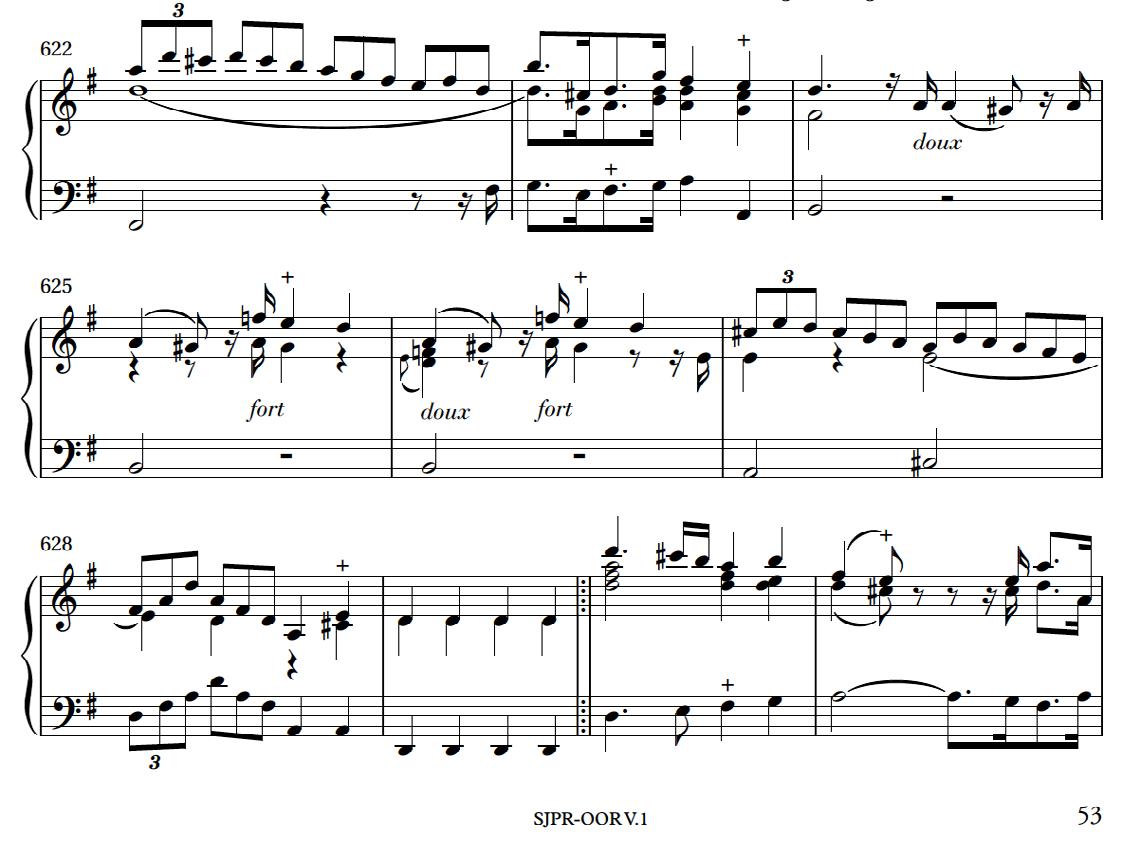
Finally, cadential formulas deriving from the Entrée pantomime of Io (Fig. 2a, mm. 627–29) are repeated twice in the well-known ariette from Platée, “Aux langueurs d’Apollon, Daphné se refusa” (Fig. 3).
If one accepts that the divertissement of Io inspired that of Platée, the composition of the former must have taken place before the court premiere of the latter (i.e. March 31, 1745). As we have also established, it was common for large sequences of music to be recycled from unperformed or infrequently performed works. For example, the Entrée pantomime from Io, discussed in the previous section, was entirely reused in 1751 in La guirlande, under the new title Pantomime pour les Berges et Bergères, Pâtres et Pastourelles.


Along similar lines, the duet between Io and Apollo, “Jupiter lance la foudre” (sc. 4), can also be found in the first version of the prologue of Les fêtes de Polymnie. Rameau reworked the music and the text, entrusting the duet to the characters of Mnemosyne and the Chief of Arts, before later excising the passage. (The latter work seems to have been intended for a court celebration of Louis XV’s victory at Fontenoy–a battle which had taken place on May 11, 1745. In the end Le temple de la Gloire fulfilled this function, staged at Versailles in November of 1745; Les fêtes de Polymnie was then presented at the Opéra, premiering on October 12 of that same year.) These chronological links between Io and multiple works dating from 1745 (Platée in March and Les fêtes de Polymnie in October) and from 1751 (La guirlande) would seem to confirm the anteriority of Io.
We should underscore that there is a possible association between the Marquise de Pompadour and the conception of Rameau’s ballet. Around the time that Io was written, Pompadour was still Jeanne-Antoinette Poisson. (She had been ennobled through her 1741 marriage to Le Normant d’Étiolles.) The young woman’s charm and beauty–linked to her taste for the arts, as well her talents as an actress, singer, and equestrian–facilitated her spectacular rise within the Parisian social scene. On July 18, 1742, President Hénault wrote to his friend Madame Du Deffand: [Pompadour] knows music perfectly, she sings with every possible gaiety and taste, is familiar with a hundred songs, and acts in plays at Étiolles, on a stage as beautiful as that of the Opéra, with impressive machinery and scenic effects.9
Pompadour’s ambition, of course, was to become the mistress of Louis XV. Invited to a masked ball at Versailles on February 25, 1745, she quickly aroused the interest of the monarch. Numerous courtiers in attendance commented on the event–taking note of this delightful noblewoman for whom the king openly expressed his desire. Might these rumors have provided a wordsmith within Rameau’s circle with the idea for Io–someone like La Pouplinière, with whom Rameau would soon collaborate on the libretto of Platée? Might the composer have produced a short ballet, with just a handful of characters, for the private theater of his employer? (The workforce of the latter theater, certainly, echoed the reduced number of players required for Io.) Is it for this reason that a set of parts for Io has survived–justifying through their very existence that a performance was once planned? In the absence of certainty, we must content ourselves with such suggestive, but ultimately unanswerable, questions.
As we have established, Rameau’s three one-act ballets—Nélée et Myrthis, Zéphire, and Io—remained unpublished in the composer’s lifetime. In the first two cases an autograph manuscript was preserved; for Io, by contrast, we have only the belated copy of the score and parts that belonged to Decroix (the famed Rameau collector). In the second volume of the Recueil de ballets en un acte mis en musique par Rameau (Collection of ballets in one act set to music by Rameau), Decroix specifies that the works contained therein, including Io, were “collected and copied from the original scores of the Author,” which he had received from Rameau’s son in July of 1777. The manuscript of Io that Decroix had copied must, then, date from 1777 or before.10 As for the other musical sources–a grouping that lacks the parts for Io, Mercury, and Folly–were these commissioned specifically by Decroix and, if so, why?11 At first glance, it seems unlikely that these documents stemmed from a planned staging at the private theater of La Pouplinière, for the two violin parts are notated in a different clef than that typically used in Rameau’s time. And yet, the name of a certain “Mr. Le Petit” is inscribed on the vocal part corresponding to the role of Apollo, which implies that this particular source was intended for performance. Le Petit was employed by the Paris Opéra between 1756 and 1764, serving as an understudy to the haute contre soloists. He could plausibly have been approached, in the early days of his career, to perform this role for La Pouplinière. (Le Petit participated, notably, in the production of Rameau’s Les Paladins in 1760, doubling his friend Lombard in the role of Atys; he would later work for the lyric theaters of Bordeaux [1772–73] and Brussels [1776].)
It is with these questions, these doubts, but also these convictions, that the editors of Rameau’s Opera Omnia have decided to complete Io by incorporating within it musical elements that have passed down to us via the original version of Platée. (Thomas Soury is charged with preparing the critical edition for the work.) This ambitious and impactful initiative allows us to put forward a finalized version of Io—and thereby, after nearly three centuries, to grant the composition a form of rebirth. In 1750, Rameau wrote: Art will always remain in narrow limits, so long as it lacks accredited protectors (Démonstration du principe de l’harmonie, p. 94; CTW, t. 3, p. 213).
Thanks to the programming of Opera Lafayette, Rameau’s broader vision for Io has at long last been realized.
Opéra-ballet: de La Garde’s Léandre et Héro & Rameau’s Io
1. Jean-Philippe Rameau, Io, ed. Thomas Soury, OOR V.1, under the general direction of Sylvie Bouissou.
2. Sylvie Bouissou and Denis Herlin, Jean-Philippe Rameau, Catalogue thématique, Musique instrumentale; Musique vocale religieuse et profane (Paris: Bibliothèque nationale de France and CNRS Éditions, 2007), 1: 33–34.
3. Rémond de Sainte Albine, “Observations de M. Remond de Sainte Albine sur le ballet, intitulé Platée,” Mercure de France, March 1749, 191.
4. Sylvie Bouissou, Rameau, musicien des Lumières (Paris: Fayard, 2014), 283–285.
5. René Louis de Voyer de Paulmy, marquis d’Argenson, Notices sur les œuvres de théâtre, ed. H. Lagrave, Studies on Voltaire and the Eighteenth Century (1966), 42: 99.
6. Charles-Simon Favart, L’ambigu de la folie, ou Le ballet des dindons (F Pn ms. fr. 9325, f. 413).
7. Mémoires de Monnet, ed. H. d’Alméras (Paris, Louis- Michaud, s.d.), 85–86. The editor is incorrect in suggesting that this pertains to the 1751 revival of Les Indes galantes.
8. Voltaire, Correspondance, ed. Theodore Besterman (Paris: Gallimard, 1977), letter no 1854, 913.
9. Correspondance complète de la marquise Du Deffand (Paris: Plon, 1865), 1: 70.
10. The manuscript of Io from the Decroix collection is currently held at the Bibliothèque nationale de France, with the call number: F-Pn, Vm2. 316.
11. The parts of Io are held at the Bibliothèque nationale de France, with the call number: F-Pn Vm2. 324.
“Nothing quite prepared me for the sheer joy of seeing Machine’s work in person; it’s imaginative, extravagant, and thoroughly American in the way he uses ordinary objects to extraordinary effect.”

– Ryan Brown, Artistic Director, Opera Lafayette
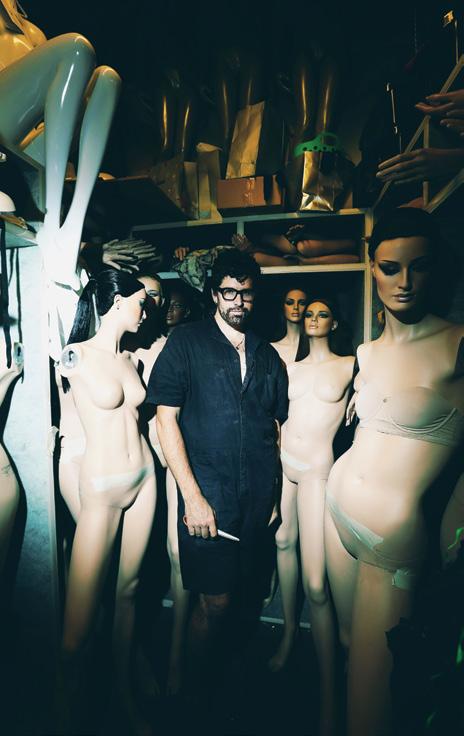
“Machine’s costumes are just going to blow the world apart.”
– Nick Olcott, Stage Director–Machine Dazzle, on costumes for Rameau’s Io
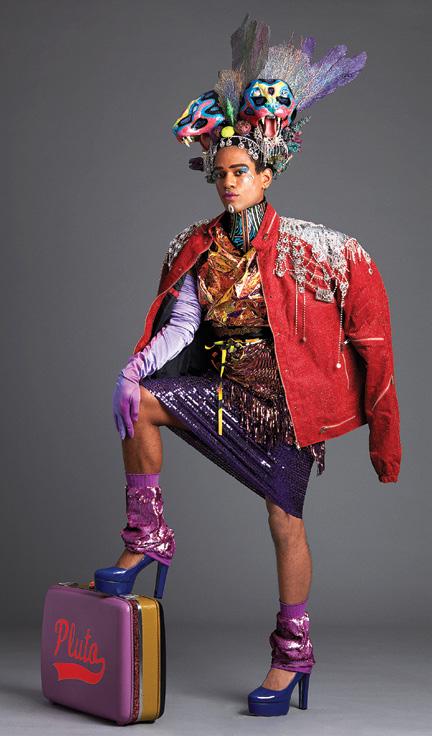
“Oh, there she is, I just gave her the cutest little face… It’ll be fun! There’s classical reference, but it’s just done in a modern way with some unexpected things.”© Gregory Kramer Machine Dazzle © Little Fang © Geoff Winningham Photos above are of past Machine Dazzle works
Opéra-ballet: de La Garde’s Léandre et Héro & Rameau’s Io

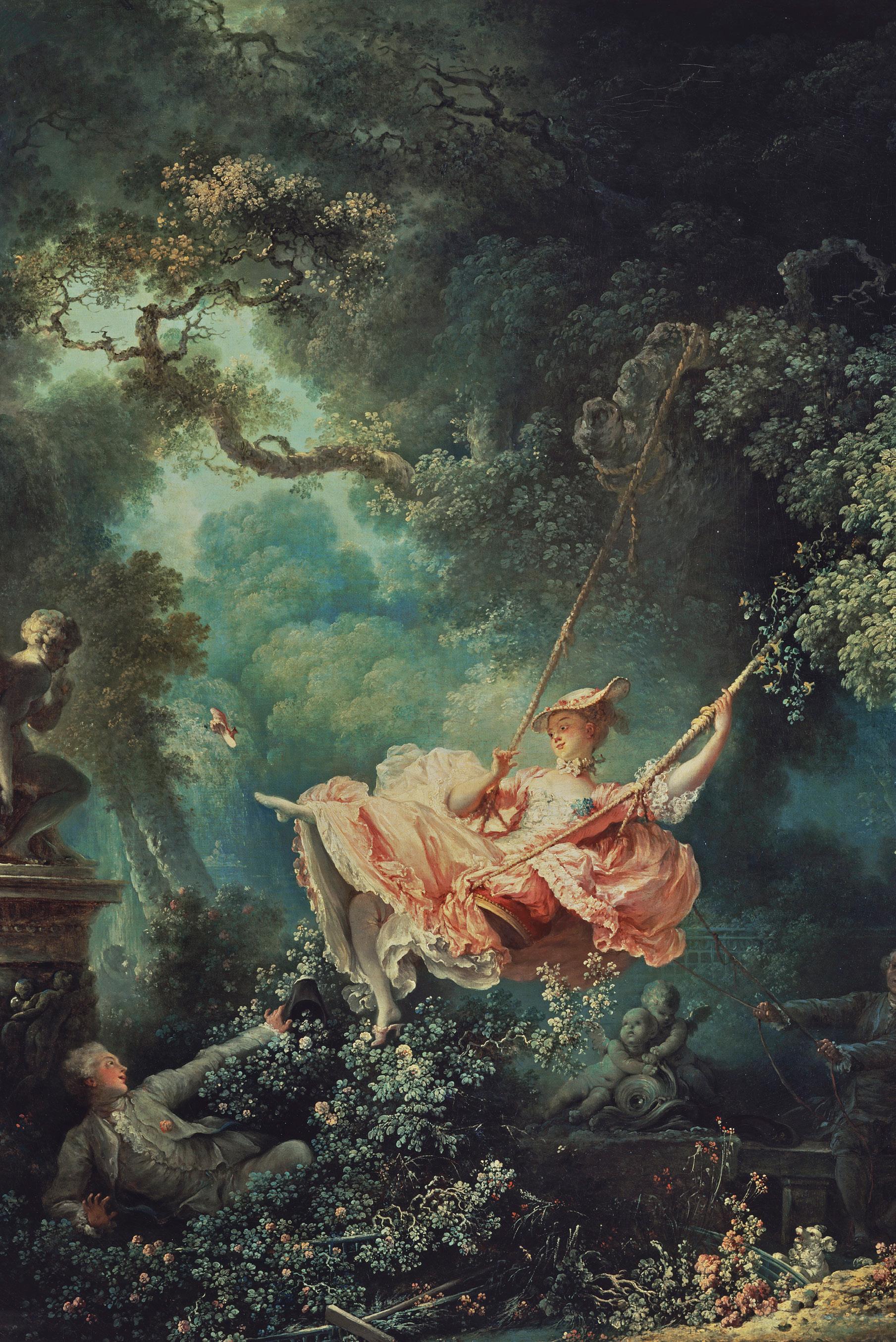

Why does the Rococo echo so strongly across music, design, and art today?1 And how might we better understand the continuing excitement, innovation, and impact of this visual and musical mode? These are questions for all of us who take a serious interest in the reverberations of the past and the present, the echoes, transformations, and continuations of genres and modes across historical space and time, and they are particularly appropriate on the occasion of Opera Lafayette’s ambitious twenty-first-century reconstruction and revival of the musical and visual culture of the French Rococo and the circle of Pompadour.
Machine Dazzle (Fig.1), the extraordinary multimedia artist and designer of Opera Lafayette’s Io, recently said “Music is what inspires me to make visual things” by way of explaining how music was often at the origin of some of his most innovative visual creations.2 In this essay we explore what has come to be called rococo culture broadly—that period of art, design, and performance culture in France between the death of Louis XIV in 1715 and the death of Madame de Pompadour in 1764. We consider how its teeming creative energies across visual art, performance, and music may themselves be understood to be part of a moment of rich and brilliant cultural innovation transfer of the kind that has inspired Machine Dazzle. In the eighteenth century, this complex network of cross-arts inspiration, where, indeed, a chanson might
inspire a painting, design, or a dance performance, was one in which some of its most talented exponents were multi-media or multi-dimensional performers. Rococo’s profusion and energy, palette and patrons were discomfiting and distasteful to a succession of cultural critics and authorities. It is these very qualities, ironically, that have made the Rococo mode a key inspiration for some of the most influential artists working today across diverse media.
For centuries, the art and culture known as the Rococo has suffered poor press. From the sanctimonious critiques of Boucher’s work by contemporary critics with moral and political agendas, to the contempt of modernist art critics, a long and inglorious trail of rococo-bashing can be established that sees the art and culture of “The Age of Pompadour” as frivolous, decadent, excessive, obsessed with surface, over-voluptuous, insufficiently rectilinear, over-stuffed, not serious, offensive to public decency, or the wrong color, …the list goes on.
The majority of critical ire was cathected onto Boucher’s mythological and pastoral paintings, many of which were closely related to ballets and comic operas. For example, Venus at her Toilette (Fig. 2), painted for Pompadour, was directly inspired by, or we might even say produced in conjunction with, the remarkable performance on 25 February 1750 at Versailles’ Petits Appartements, of La toilette de Vénus, an opéra-ballet by de La Garde and Laujon (followed by de La Garde’s Aeglé and Léandre et Héro), in which Pompadour performed the title role of Venus. The overt theatricality of such works, which revel in luxurious, voluptuous abundance, was a hallmark of

Pompadour’s taste. Boucher’s talent for producing such works made him one of Pompadour’s favorite painters, and she regularly involved him in her private theaters and spaces in the later 1740s and early 1750s. Meanwhile, his pastoral paintings, such as the Chicago Pensent-ils aux raisin, (Fig. 3) were produced in the heat of Boucher’s most fertile collaborations with musicians, dancers, and writers, including Noverre, the Favarts, and even Rameau, at Jean Monnet’s iteration of the Opéra-Comique in the early 1740s. These works were frequently singled out for criticism when Boucher exhibited them publicly.

As the philosopher and art critic, Denis Diderot, would famously declare when discussing the ageing Boucher’s submissions to the 1765 Salon: The decline of taste, color, composition, expression, character, design, has followed in the footsteps of moral decadence. What do you expect this artist to slap on the canvas? Why, what is in his imagination—and what do you think might be lodged in the imagination of a man who has spent his life with the lowest class of prostitutes? … His shepherdesses have the ‘grace’ of Madame Favart in Annette et Lubin, his Goddesses’ grace is borrowed from that of la Deschamps … a confusion of objects, heaped up one on top of another, so misplaced, so dispersed, that it looks more like a madman’s dream than a reasonable artist’s painting.3
We will return to some of the specifics of this criticism, but first let it be said, as generations of historians have pointed out, such critiques were couched in deeply conservative, reactionary language. Moral outrage at flesh being on show, or misogynistic, hierarchical assertions about the relationship between painting, acting, and prostitution, an attack on seemingly ‘mad’ art, an insufficiently manly or noble style, or distaste for a certain color palette or insufficiently rectilinear forms were all well-worn and unimaginative, not to mention hypocritical, tropes that came to define bourgeois art criticism in the centuries to follow. The long shadow cast by Diderot’s (often acerbically witty) rhetoric
and reputation have long masked and distorted the nuances, complexity, and staggering bounty of the cultural moment that produced the Rococo, a moment that many scholars, musicians, and artists are finding increasingly fascinating and inspiring.
Musicologists will point to the sophistication and brilliance of the polemics that surrounded opera, music, and music-drama in the 1740s and 1750s—and which centrally involved Rameau—arguments that involved not just nationalist debates about French versus Italian music but deeper issues of freedom, of music’s representational and emotional power, the role of imagination, etc.4 Art historians have increasingly pointed to the extraordinary generative power of the rococo “idiom” and its contribution to the spread of French cultural influence in the world.5 And indeed, historians have re-interpreted the very reputation of those actresses and “prostitutes of the lowest rank” to whom Diderot pruriently refers.6 Even the idea of the world of French elite women’s adoption of pastoral as play-acting has been undermined by recent studies of gender, space performance, and identity construction.7 The transgressive parodic humor and satirical energy of rococo culture (very much to the fore in Sylvie Bouissou and Opera Lafayette’s reconstruction of Io and in Pinchgut Opera’s recent production of Platée) are now being more fully understood, and our approach to pastoral now understands its complex and self-conscious approach to nature and the real.8
Though the references to famous actresses were not meant to be flattering, Diderot’s commentary on Boucher specifically alluded to a contemporary world of complex musical and identity creation. The very artifices and resonances, sexuality, music, and madness he mentions to condemn are, ironically, just what has been of such inspiration to twenty-first-century culture.
The recent sad news of the death of Vivienne Westwood (1941–2022) reminds us that this artist, activist, and fashion designer took particular inspiration from Boucher and Pompadour.9 Westwood began her career as a key creative force in the art school/music/ fashion phenomenon that was Punk in the 1970s.
She was thereafter a consistently edgy and provocative fashion designer. Starting in the 1990s, Westwood began to show special partiality for the eighteenth century, “rifling through the works of rococo painters for their costumes, colors and ironies and symbolic resonances.”10 Westwood had as recently as 2021 gone “Back to Boucher” with numerous items in her collection. In doing so she recalled those signature Westwood designs of the 1990s that took their surprising inspiration from Boucher and his visual
world. Her famous “Portrait Collection” (1990) included the now iconic corset, on which she printed Boucher’s pastoral painting, Daphnis and Chloe (1743) (Fig. 4).
At the time, Westwood’s appropriation of the visual language, color, and erotic appeal of Boucher’s mythological paintings into new kinds of glamorous, sexually alert, and powerful ensemble pieces for women raised eyebrows. How could this ex-punk have gone Rococo? In fact, Westwood’s reinterpretation of a foundational garment of eighteenth-century women’s fashion subverted the corset’s original purpose, making an undergarment into outerwear, and re-presenting it as an emblem of female liberation. Such subversion was entirely in the spirit of the Rococo itself, so that Westwood’s choice of a work by Boucher, the archetypal painter of the Rococo, to adorn the corset, could not have been more apt. At the same time, one might also understand Westwood’s corset (in the spirit of witty, self-reflexive rococo play) to have subverted the original thematic of Boucher’s painting itself, which is about a man’s pleasure in looking at the bared breasts of a sleeping woman. The wearer of Westwood’s corset, by contrast, would have been fully, even ironically, aware and in charge of the display of her body, for her own pleasure, as well as that of others.
Westwood’s rococo “beau geste” took up with defiance Diderot’s distaste for overt female sexuality. Its look and tone in 1990 were prescient, an early sign of the appeal and relevance of Boucher’s elegant, fluttering world of untroubled plenitude, vaporous clouds, pearls, and watered silk. This illusory domain saturated in (often polymorphous) desire and longing, tumultuous and yet languorous, humorous yet passionate, has inspired, been re-created, and echoed in art, music, dance, décor, and costume ever since. In the thirty years since Westwood’s first engagement with the Rococo, the creative and even liberating possibilities of this mode have been embraced by leading exponents of contemporary cultural self-expression, fashion, and performance—as we might argue they were by the Pompadour circle. One thinks, for example, of Madonna “voguing” in high rococo eighteenth-century dress at the 1990 MTV awards; or in the fashion world, of John Galliano’s rococo-inspired designs for Dior in autumn 2007, or more recently, those of Moschino and Thom Browne, in fall 2020.

That Pompadour and her rococo circle might influence fashion in the twentieth and twenty-first century is perhaps not surprising given what has been called Rococo’s “continuing curve” through various waves of couture and design down the centuries.11 But the Rococo’s current resonance extends far beyond the world of fashion to design, photography, contemporary music, and visual art.
Many of the most serious and thoughtful contemporary artists who have explicitly engaged with Boucher, Pompadour, and rococo aesthetics have done so from the point of view of social or cultural critique or, at least, engaged the Rococo with ironic and critical distance. Yinka Shonibare’s beautiful but sinister recreations of rococo paintings populated by figures that call to mind over-sized Meissen porcelain figures without their heads, can be read as part of his critique of colonial excess and luxury, a kind of postmodern memento mori, the cavorting courtly couples and swinging women of Boucher and Fragonard already condemned to their violent end (Fig. 5).12

In these works, it can seem that once again, the French Rococo is the object of critique, for its frivolous luxury, its artifice, and its inattention to the injustices, disparities, and violence of its age. However, the complex, intricate derivations of Rococo in the work of Shonibare, and in that of others, such as Kehinde Wiley and Fabiola Jean-Louis, demonstrate the artists’ careful attention to and investment in the seductive qualities of fabric, color, and the mood of their model, even as they seek to queer, make race visible, undermine or question history.
Fabiola Jean-Louis’s engagement with the Rococo in her recent appropriation of Boucher’s Portrait of Madame de Pompadour (1757) shares some of Shonibare’s delight in the copious beauty and elegance of the rococo
aesthetic (Fig. 6). Jean-Louis lovingly re-created the extravagant blue-green silk gown worn by Pompadour, creating out of paper the illusion of fabric and pink ribbons and bows. She re-casts Boucher’s sitter as a woman of color, surrounded by the accoutrements of the religion of Vodou. Beauty here is a vehicle of cultural critique. Among other things, Jean-Louis’s photograph brings under scrutiny the categorical whiteness of European ideals of beauty. This intervention in the invisibility of brown-skinned people in canonical Western art simultaneously presents the sitter as a woman who has agency, like the woman on whom she is modeled. The image is part of Jean-Louis’s Rewriting History series, an investigation into race, slavery, memory, and identity, bringing figures and tropes from Haitian culture as well as her own past into these striking portraits based on elite imagery.

In 2011 the rapper Nicki Minaj was photographed by artist Francesco Vezzoli for the fashion magazine W, also in the guise of Boucher’s Madame de Pompadour.13 Though the context in which the photograph was made and appeared is very different from that of Jean-Louis, it did some of the same kind of critical work. Jillian Hernandez has argued that “to take up white femininity in such a way is to show how whiteness is open to semiotic resignification by women of colour.” She adds: “Rococo aesthetics centered on the white female subject as muse, and Minaj’s incarnation of this style marks her trespass into this privileged visual field.”14
This kind of “trespassing” into and with the Rococo shares certain affinities with Kehinde Wiley’s meticulously painted portraits of African-American men, a number of them in the poses of famous paintings of women, almost all of them set against lavish, brilliantly colored backgrounds of arabesques, flowers, and cartouches that pointedly evoke rococo decorative motifs.15 These portraits offer another instance in which the Rococo plays a notable role in a contemporary artist’s project of critically interrogating conceptions and preconceptions about masculinity, sexuality, and race.
All of these examples of contemporary artists of African descent speak to some of the other ways in which the Rococo has been deployed to subvert, to surprise, to challenge, and to thwart conventional expectations about race as well as gender and sexuality. To an extent, we might argue that even in the context of such critique of familiar rococo tropes, the generative, permissive nature of this aesthetic emerges.
The fluid, animating possibilities of the Rococo are equally productively felt in the work of feminist, queer, and dissenting artists from a number of modern traditions. These include familiar names like Florine Stettheimer, Andy Warhol, and Cindy Sherman, as well as newcomers, such as the painter Flora Yukhnovich.
Recent scholarship has demonstrated how in various drawings and illustrations of the 1950s, Warhol (like others before him) adopted the Rococo to signify and celebrate queerness. For Warhol “the language of Rococo provided an outlet for camp parody of high culture and fashion, while also asserting an alternative sexual politics that stressed a blurring of traditional dichotomies and hierarchies of gender.”16
It is easy to see how readily the Rococo might be associated with camp, so memorably defined by Susan Sontag, in terms of a “Certain mode of Aestheticism,” which, we would add, is so often characterised by an aesthetics of excess.17 Diego Montoya’s glamorously outrageous Drag Couture creations are especially notable for their deliciously rococo exuberance.18 The impact of a sumptuous, elaborate, and sinuous range of fabrics, wigs, and a lavish color and design palette that we might see as inherent to rococo aesthetics is similarly manifest in the costumes produced by Machine Dazzle for the hugely ambitious, comic, and profound queer rewriting of American history in Taylor Mac’s A Twenty-Four Decade History of Popular Music.19 In our current age where fluidity is a key liberating concept, Rococo’s riotous exuberance, love of artifice, sinuosity, flow, its multivalence, ambiguities, and excesses have provided inspiration for generations of artists seeking resistance to naturalized, sex and behavioral norms.
The persuasive work of many feminist historians of art and culture has made clear the stakes of a concept of rococo “eroticism” that embraces materiality, touch, and gesture and that can be made to subvert scopophilic or patriarchal fantasies as well as oppressive gender and sexual norms.20 These issues are at the heart of works like Cindy Sherman’s Covered Tureen with Tray: Madame de Pompadour née Poisson (1721–1764) (Fig. 7).
In the cartouche of a flamboyantly rococo pink Sèvres porcelain tureen, Sherman herself masquerades as Pompadour, photographed in a wig, white makeup, with prosthetic breasts. Among other things, the image “spoofs the commodification of women as objects of male fascination and desire.”21

The very “excesses” of the Rococo have provided inspiration for a surprising range of other contemporary artists. The British post-abstract artist Flora Yukhnovich, in whose art school training modernist “masters” (Freud and Auerbach) loomed large, acknowledges her early resistance to Rococo:
I felt like I should dislike it immediately. There was just too much color. It’s designed to please, and I was aware of that and suspicious of it.
And then her realization of the generative pleasures of (in her case) encountering Fragonard and finding this:
Weirdly exciting. When I was making the first paintings looking at it, I had never really worked with color like that. It was just so pleasurable, standing in front of a canvas and making it beautiful colors.22
of Rococo painting and sculpture inspires Yukhnovich (Fig. 8), along with Nicolas Party, who works in the quintessentially rococo medium of pastel, and a range of ceramicists like Ebony Russell in Australia, or Jen Dwyer in the United States. These artists also sense the ability of Rococo art to spur social thought, to resist, to escape containment and face death. A range of artists in new media, like the Australian digital photographer and artist Alexia Sinclair, deliberately probe the artifices of Rococo, the borders of kitsch, and the disquieting artifices of photography while entirely embracing Rococo’s commercial purposes and appeal.23

The really fascinating aspect of the extent of this Neo-Rococo eco-system across arts and design is that it takes its cue in its fecundity and variety from the original burst of creative collaboration and imaginative cross-fertilization that marked the Rococo moment in France (and across Europe). By the time Madame de Pompadour and her team prepared to entertain Louis XV at the Théâtre des Petits Cabinets with their Journée galante trilogy in February 1750, Rameau, Boucher, de La Garde, Favart, Noverre, and many of the creative forces in French artistic culture had already combined in new and exciting ways in such venues as Jean Monnet’s Opéra-Comique or the Beauvais tapestry factory to pioneer new and adventurous collaborations and pathways for a new aesthetic.24 Favart and Boucher, together with their musicians and dancers, re-thought and re-invented new variants of both mythological and pastoral music dramas starting from fragments of songs, vaudevilles, and traditional dances.25 Indeed the multi-talented and much harassed Marie-Justine-Benoite Cabaret du Ronceray, actress, dancer, designer, singer, victim of the unwanted attention of the Maréchal de Saxe and the barbs of Diderot—and more to the point, later the wife and collaborator of Charles-Simon Favart— might have provided a model in her triumphant 1749 performance at the Comédie Italienne in Dehesse (Deshays)’s ballet Les savoyards that Pompadour hoped to emulate in 1750
at the Petits-Cabinets.26 The humor, irony, and even the erotic daring of this moment, and its proliferation across genres, owed something to the collision of a very elite court culture with the ever-proliferating possibilities of urban sociability and performance, across the fair theaters and théâtres de société, informal gatherings and drinking clubs that Paris would provide. It is no coincidence that so many of those involved in Io and in the creation of Pompadour’s Journée galante, were founding or assiduous members of the song-based drinking club the Caveau, a space of inebriation, surely, but also of innovation transfer and artistic sociability that at its heart used the vaudeville, the pun, and the comic sketch as the motor for a proliferation of writings, music, and even in Boucher’s case, visual art.27
And despite Diderot’s show of disgust at the pastoral idiom in Boucher’s hands, we should note the persistence and appeal of the pastoral mode across high and low theaters, and in all registers of poetry and prose in eighteenth-century France, indicating both the appeal and the capaciousness of an idiom that was readily adaptable to the bending of gender, age, and class norms, even a reversal of expected hierarchies and a delight in parody. Pastoral inventions and profusions are at the heart of Rococo energies, and thus despite their seeming distance and elitism they contain the germ of that cornucopian maximalism and the profound parody that goes across twenty-first-century ballroom, drag, and other performance cultures as well as opens up pathways for the contemporary “artists of visual profusion.”28
So before we’re tempted to see only elite dress-up or false naivety in rococo art and performance, or worse, condemn it as kitsch absurdity, we do well to remember the astonishing, Taylor Mac-like energy of Pompadour’s Journée galante, the prodigious and always inventive idiom of Boucher, and the serious humor and inventive delight of Favart, de La Garde, and Rameau’s creations for the private and public theaters of the mid-eighteenth century. These works shook off the strictures of an increasingly puritan and joyless appeal to seriousness and high-mindedness. We should be reminded to admire in Rameau, Boucher, Favart, and Pompadour, and their twenty-first-century progeny, the expansive pleasures of Rococo’s cornucopian trance.
1. Many thoughtful discussions of the legacy of Rococo and of Boucher can be found in recent scholarship and exhibitions. See Melissa Hyde and Mark Ledbury (eds.), Rethinking Boucher (Los Angeles: Getty Research Institute, 2006); Sarah Coffin et al., Rococo: The Continuing Curve, 1730–2008, 1st edition (New York: Cooper Hewitt, Smithsonian Design Museum, 2008); Melissa Lee Hyde and Katie Scott (eds.), Rococo Echo: Art, History and Historiography from Cochin to Coppola: 2014:12 (Oxford: Voltaire Foundation in Association with Liverpool University Press, 2014).
2. Machine Dazzle, speaking in live performance, “Treasure,” release party, Joe’s Pub, 22 October 2022. Live steam recording, https://www.youtube.com/watch?v=tldukGAJ8Tg, (Citation at 14.49).
3. Denis Diderot, Salons (Oxford: Clarendon Press, 4 Vols, 1957), 2: 75. (Translation by the authors.) I follow the variant F of the Ms (which has “Annette et Lubin” rather than Rose et Colas).
4. David Charlton, Opera in the Age of Rousseau: Music, Confrontation, Realism, Illustrated edition (Cambridge: Cambridge University Press, 2012); Cynthia Verba, Music and the French Enlightenment: Rameau and the Philosophes in Dialogue (Oxford: Oxford University Press, 2016).
5. Xavier Salmon et al., Madame de Pompadour et les arts (Paris: Réunion des Musées Nationaux, 2002).
6. Colin Jones, “French Crossings IV: Vagaries of Passion and Power in Enlightenment Paris,” Transactions of the Royal Historical Society 23 (December 2013): 3–35. (Jones’s essay makes particular mention of Deschamps.)
7. Melissa Lee Hyde, Making up the Rococo: François Boucher and His Critics, Texts & Documents (Los Angeles, CA: Getty Research Institute, 2006); Meredith Martin, Dairy Queens: The Politics of Pastoral Architecture from Catherine de’ Medici to Marie-Antoinette (Cambridge, MA: Harvard University Press, 2011), 176.
8. Pinchgut Opera’s Platée was performed in December 2021. https://opera.org.au/productions/ platee/ On the pastoral, see Marie-Chantal Killeen, “Pastoral Womanscapes (Baudelaire, Tournier, Jablonka),” The Modern Language Review 113, no. 2 (2018): 321–37; and Paul Alpers, “What Is Pastoral?” Critical Inquiry 8, no. 3 (1982): 437–60.
9. Dame Vivienne Westwood died on 29 December 2022.
10. https://www.theguardian.com/fashion/2022/dec/30/dame-vivienne-westwood-obituary.
Opéra-ballet: de La Garde’s Léandre et Héro & Rameau’s Io
11. Rosalind Jana, “Vivienne Westwood’s rococo approach to fashion,” Apollo Magazine, 14 December 2021. https://www.apollo-magazine.com/vivienne-westwood-art-rococowallace-collection/.
12. Sarah Coffin et al., Rococo: The Continuing Curve, 1730–2008, 1st edition (Cooper Hewitt, Smithsonian Design Museum, 2008).
13. See among others, Valérie Morrison, “Yinka Shonibare, MBE, and Satrorial Parody: Costuming the Body as Subversive Practice,” Études britanniques contemporaines 51 (December 2016): 1–25.
14. For image see: https://www.stefanbeckman.com/w-magazine-nov-2011.
15. Jillian Hernandez, The Aesthetics of Excess, esp. Ch. 4, “Rococo Pink: The Power of Nicki Minaj’s Aesthetics of Fakery” (Durham, NC: Duke University Press, 2020), 145–86.
16. Krista Thompson, “The Sound of Light: Reflections on Art History in the Visual Culture of Hip-Hop,” The Art Bulletin 91, no. 4 (2009): 481–505.
17. Allison Unruh, “Warhol’s Rococo: Style and subversion in the 1950s,” in Rococo Echo, ed. Melissa Hyde and Katie Scott (Oxford: Oxford University Press, 2014).
18. Susan Sontag, “Notes on ‘Camp’” (1964), in Against Interpretation and Other Essays (New York, 1967), 277.
19. https://beautifulbizarre.net/2022/11/25/drag-couture-diego-montoya/.
20. A show notoriously hard to summarize, but see Erick Neher, “The Brooklyn Marathon: Taylor Mac’s ‘A 24-Decade History of Popular Music’,” The Hudson Review 69, no. 4 (2017): 631–42.
21. See Mary Sheriff, Fragonard: Art and Eroticism (Chicago: University of Chicago Press, 1990) and “Une approche subversive: la dimension érotique dans la peinture du XVIIIe siècle,” Histoire de l’art 66 (April 2010): 27–38. See also Ewa Lajer Burcharth, The Painter’s Touch (Princeton: Princeton University Press, 2018).
22. Lindsey Morton, “New to the Collection,” Inside Smithsonian Research (Spring 2004), 16.
23. From an interview with Stephen Dubner, Transcript, “Don’t Worry, Be Tacky,” Freakonomics Radio episode 499, accessed 16 January 2023, https://freakonomics.com/podcast/dont-worrybe-tacky/.
24. Alexia Sinclair’s work, including her Rococo series, can be viewed at her website: https://alexiasinclair.com/collections/rococo.
25. Arthur Heulhard, Jean Monnet, vie et aventures d’un entrepreneur de spectacles au XVIIIe siècle: avec un appendice aur l’opéra-comique de 1752 a 1758 (Paris: Lemerre, 1884); Mark Ledbury, Sedaine, Greuze and the Boundaries of Genre (Oxford, 2000); Martine Rougemont, La vie théâtrale en France au XVIIIe siècle (Paris and Genève: Champion; Slatkine, 1988).
26. Favart’s manuscript draft of La vendange, the work that would become Les vendanges de Tempé, an ur-text of pastoral opéra comique and a touchstone for much of Boucher’s work, shows this clearly. Its barely three page “scenario” lists 49 different “entrées” or scenes, many of which are animated by different vaudevilles or chansons. See BnF Opéra, Fonds Favart, Ms “La Vendange/ Favart.” For this text as especially fertile for Boucher, see Laing, “Boucher et la Pastorale Peinte”; and Laing, “Boucher: the search for an Idiom,” in exh. cat., François Boucher, 1703–1770: The Metropolitan Museum of Art, New York, February 17, 1986–May 4, 1986, the Detroit Institute of Arts, May 27–August 17, 1986, Reunion Des Musées Nationaux, Grand Palais, Paris, September 19, 1986-January 5, 1987 (New York: Metropolitan Museum of Art, 1986), 56–72.
27. On Madame Favart, see Arthur Pougin, Madame Favart; étude theatrale, 1727–1772 (Paris: Fischbacher, 1912); Émile Campardon, Les comédiens du roi de la troupe italienne pendant les deux derniers siècles: documents inédits … (Paris: Berger-Levrault et Cie, 1880), vol. 1.
28. It is unfortunate that the “historians” of the Caveau have not been assiduous in separating anecdote from fact, given how fecund a meeting place it appears to have been, at least for male creators. See especially: Jacques Bouché, Gallet et Le Caveau, 1698–1757 (Epernay, 1883), vol. 1.
29. Alastair Laing, Boucher et la pastorale peinte, trans. Jerôme Coignard, in Revue de l’Art 73 (1986), 55–64; and Ledbury, Sedaine, Greuze and the Boundaries of Genre (Oxford, 2000), 64–76.

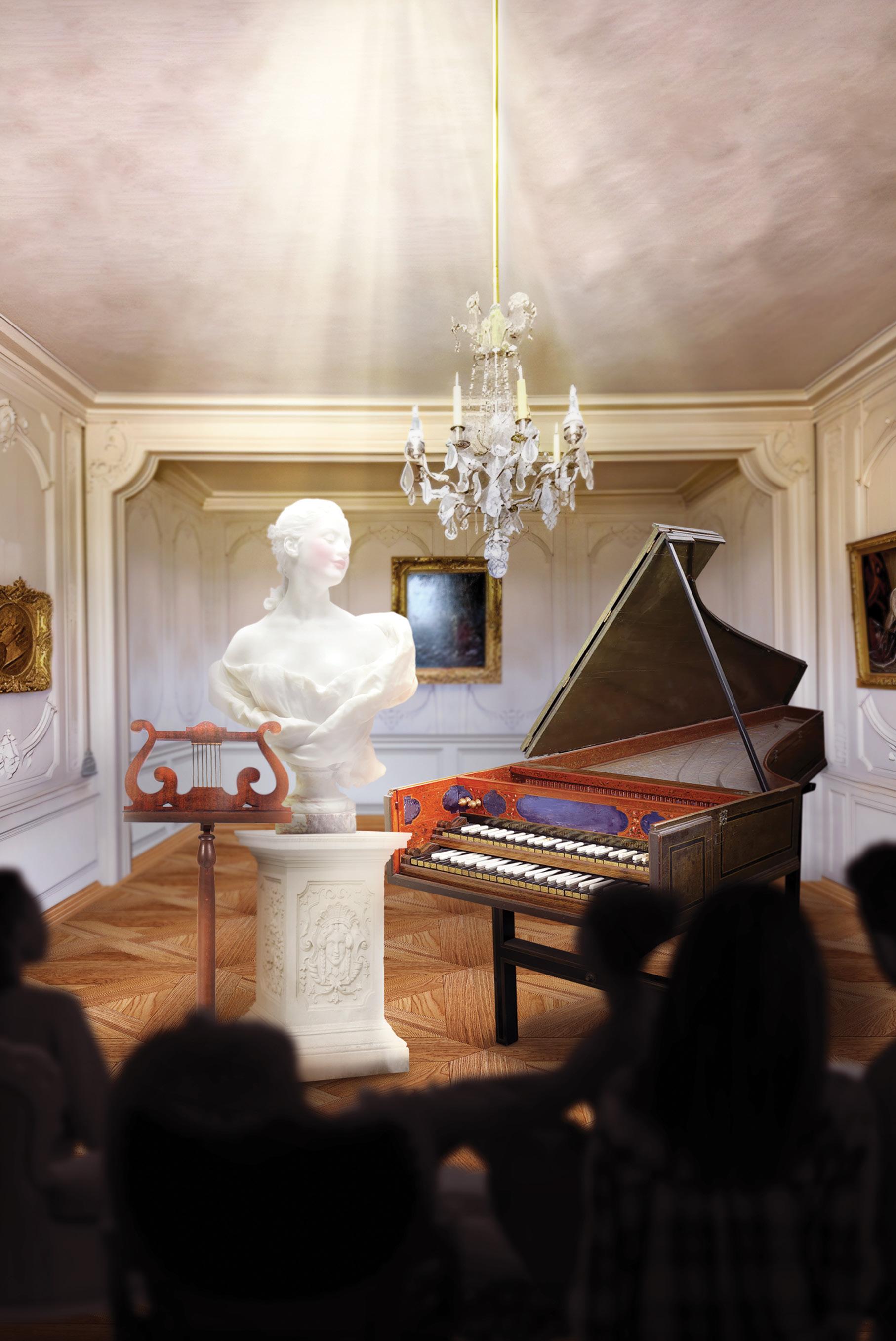
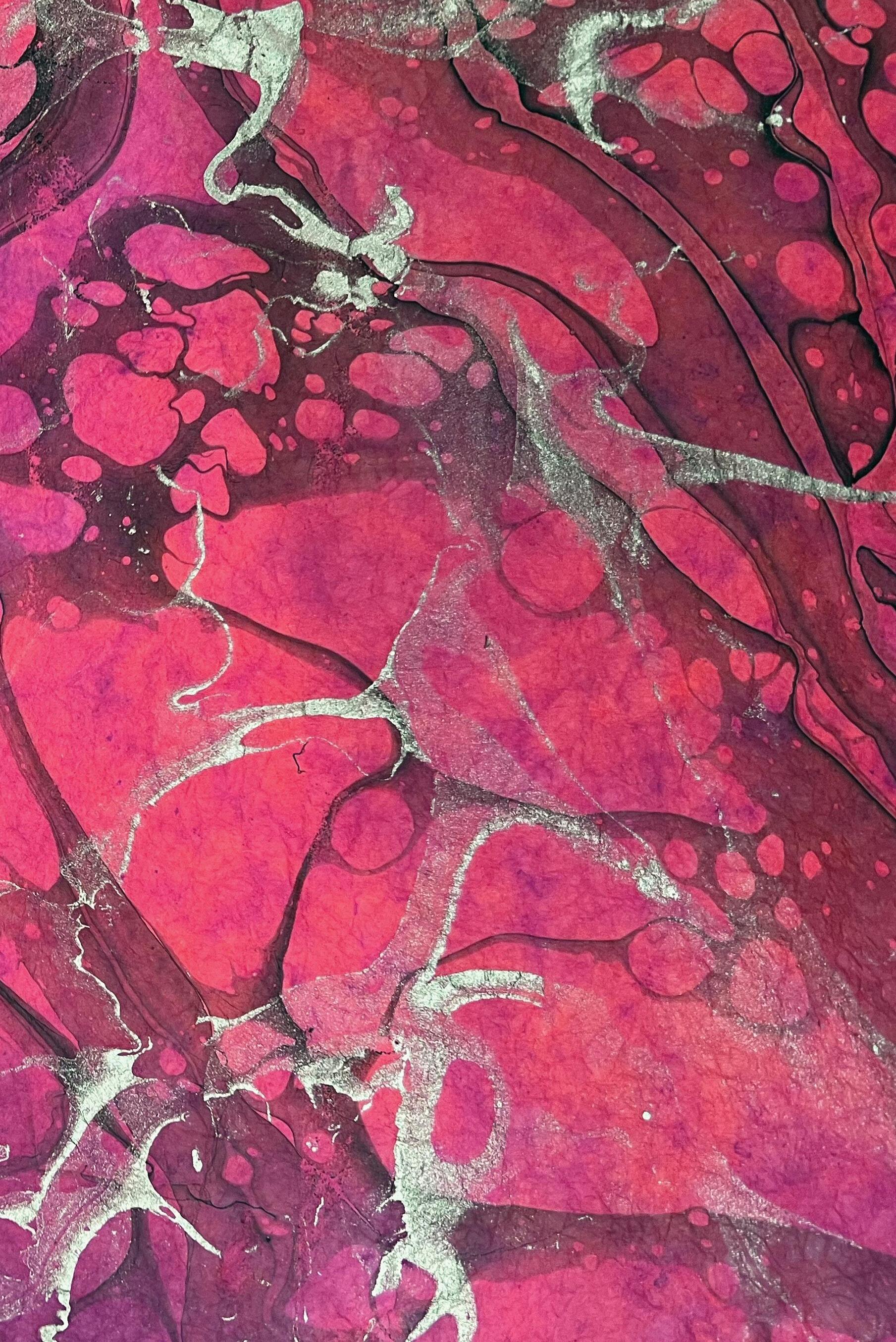
El Museo del Barrio
Wednesday, May 10, 2023 at 7:00 PM •
This performance is approximately 80 minutes with no intermission.
Pièces de Clavecin avec voix ou violon
Op.5 Jean-Joseph Cassanéa de Mondonville
III. Benefac, Domine
VII. Quare tristis es, anima mea
“Fureur, amour, secondés mon impatience” François Rebel and François Francoeur (From Scanderberg)
Pièces de clavecin en concert:
Cinquème concert
I. La Forqueray
II. La Cupis
III. La Marais
Sonata for Harpsichord and Violin, K.6
“Lascia i fior”: Cantata for Soprano and Continuo
Sonata for 2 Violins in E Major
Op.12, No.2
III. Minuet, non troppo allegro
IV. Allegro Concerto for Violin in B-flat major
II. Siciliana
Jean-Philippe Rameau
Wolfgang Amadeus Mozart
Johann Adolph Hasse
Jean-Marie Leclair
Giovanni Battista Pergolesi
“Loin de nos coeurs les tristes plaintes”
Rebel and Francoeur (From Scanderberg)
La Dauphine for Solo Harpsichord Rameau
“Mentre dormi Amor fomenti” Pergolesi (from L'Olimpiade)
“Sur nos coeurs épuise tes armes” Rameau (From Zoroastre)
the Salons of Versailles

Jacob Ashworth Musical Direction & Program Creation, Violin
Emmanuelle de Negri Soprano
Justin Jonathan Taylor Harpsichord
June Huang Violin
Isaiah Chapman Viola
Serafim Smigelskiy Cello
Callum Blackmore, Pre-Concert Talk
Opera Lafayette’s In the Salons of Versailles revolves around the musical tastes of two women who helped to shape the soundscape of the French Bourbon court: Madame de Pompadour and the Dauphine Marie-Josèphe de Saxe. In many ways, these two women were nothing alike. Madame de Pompadour was born a commoner. Hailing from a family of bourgeois financiers, she came to court in 1745 as the maîtresse-en-titre (official mistress) to Louis XV but remained at the king’s side as his friend and advisor even after their sexual affair ended. Marie-Josèphe de Saxe was born to the highest nobility. The daughter of Augustus III of Poland, she grew up in Dresden before coming to Versailles once married to Louis Ferdinand, Dauphin of France, in 1747 to aid diplomatic relations between France and Saxony in the wake of the War of the Austrian Succession.
But in other ways, their experiences of the French court were very similar. Both were outsiders at Versailles. Marie-Josèphe de Saxe was a foreigner in a court that initially treated her with xenophobic distrust and found herself stuck in an arranged marriage to a man who (in her own words) held “the greatest aversion” to the young envoy. Madame de Pompadour also experienced hostility. Although she was beloved by the king, many aristocrats resented that Louis XV had taken a bourgeois mistress and many powerful courtiers sought to remove her as the royal favorite.
Crucially, both women were talented musicians. Both played the harpsichord while Madame de Pompadour was also a budding soprano. And these musical talents were forged in the Enlightenment salon, perhaps the most important venue for women’s musical creativity in eighteenth-century Europe. Indeed, the salon was one of the few spaces in the Republic of Letters where women were afforded a degree of power and autonomy: salonnières – as hosts, conversationalists, pundits, administrators, tastemakers, and occasional performers – were the ultimate gatekeepers of the semi-public, semi-private world of the salon, holding dominion over its social, intellectual, and aesthetic pleasures. And a salonnière with musical ability could use her talents to magnify her influence – by providing entertainment, by playing music with her guests, and even by commissioning new music.
Madame de Pompadour – who, prior to arriving at court, had lived as a Parisian mondaine – saw firsthand the cultural power of the musical salon. Seeking to emulate the
success of these gatherings, she set up her own musical salon, where she would put on private operatic performances for invited guests.
Madame de Pompadour used her experiences in the Parisian salons to overcome the many obstacles that she faced in the French court. Facing a hostile nobility, Madame de Pompadour began employing her musical talents to both retain the king’s favor and gather allies at Versailles. In addition to hosting musical suppers for Louis XV and his circle, she set up a private theater in the king’s own apartments (as she had done in her Parisian salon) where she would put on operatic entertainments for the monarch.
An invitation to one of these elegant gatherings was highly coveted. And any musician who was chosen by Madame de Pompadour to aid in these private festivities was assured long-term career success. For example, Jean-Joseph de Mondonville – whose chamber music appears on this program – was primarily known as a composer of sacred music before he met Madame de Pompadour. However, after the maîtresse-en-titre commissioned Mondonville to write Bacchus et Erigone for her private theater in 1747, he received several prominent commissions for the Paris Opéra and soon became one of the most famous opera composers of his generation.
Indeed, although Madame de Pompadour’s musical activities were mostly confined to the private salons of Versailles, they often had a profound aesthetic impact on French public musical life. This was largely due to her close friendship with François Rebel and François Francœur, who served as the directors of the Paris Opéra during much of Madame de Pompadour’s time at court but also moonlighted as composers, violinists, and music directors in Madame de Pompadour’s private theater.
While many high-born aristocrats were denied entry to Madame de Pompadour’s private entertainments, she was always sure to invite the king’s immediate family, including the dauphine. Marie-Josèphe de Saxe did not necessarily appreciate the invitation. The dauphin and dauphine purportedly despised the bourgeois maîtresse-en-titre (they allegedly nicknamed her “maman putain”) and the outraged prince supposedly banned his new wife from attending these soirées.
Although Marie-Josèphe de Saxe never shared Madame de Pompadour’s taste for French musical patrimony, she developed a strong passion for the Italian-style music that had been all the rage in Saxony when she grew up – in particular the music of Pergolesi. Ultimately, the dauphine became a radical influence on the aesthetics of courtly life, filling the halls of Versailles with a new cosmopolitan sound that shocked many courtiers. She would frequently put on private concerts in the salons of Versailles with the daughters
of Louis XV, Madame Victoire and Madame Adélaïde. Through these performances, the dauphine introduced the music of her native Dresden to Versailles – most notably the works of the court composer Johann Adolph Hasse, who soon became a favorite of the queen.
Indeed, Marie-Josèphe de Saxe relished any contact with Austro-Germanic musical traditions: when Wolfgang Amadeus Mozart visited Versailles in late 1763, one observer noted that the dauphine took a special interest in the young composer, “caressing him and embracing him thousands upon thousands of times.”
Rameau is the composer that links these two influential women. Rameau experienced some of his most successful years during Madame de Pompadour’s time at court (the favorite once called him her most “useful” composer). An excerpt from his Zoroastre is here paired with “La Dauphine,” written to mark the arrival of Marie-Josèphe de Saxe to the French court. The piece has an unpredictable, wandering quality, leading some musicologists to suggest that it may have been improvised for the occasion and then notated ex post facto – a rare glimpse into the ephemerality and spontaneity that made the musical salons of Versailles so enthralling.



Thursday, May 11, 2023 at 7:00 PM
This performance is approximately 2 hours with intermission.
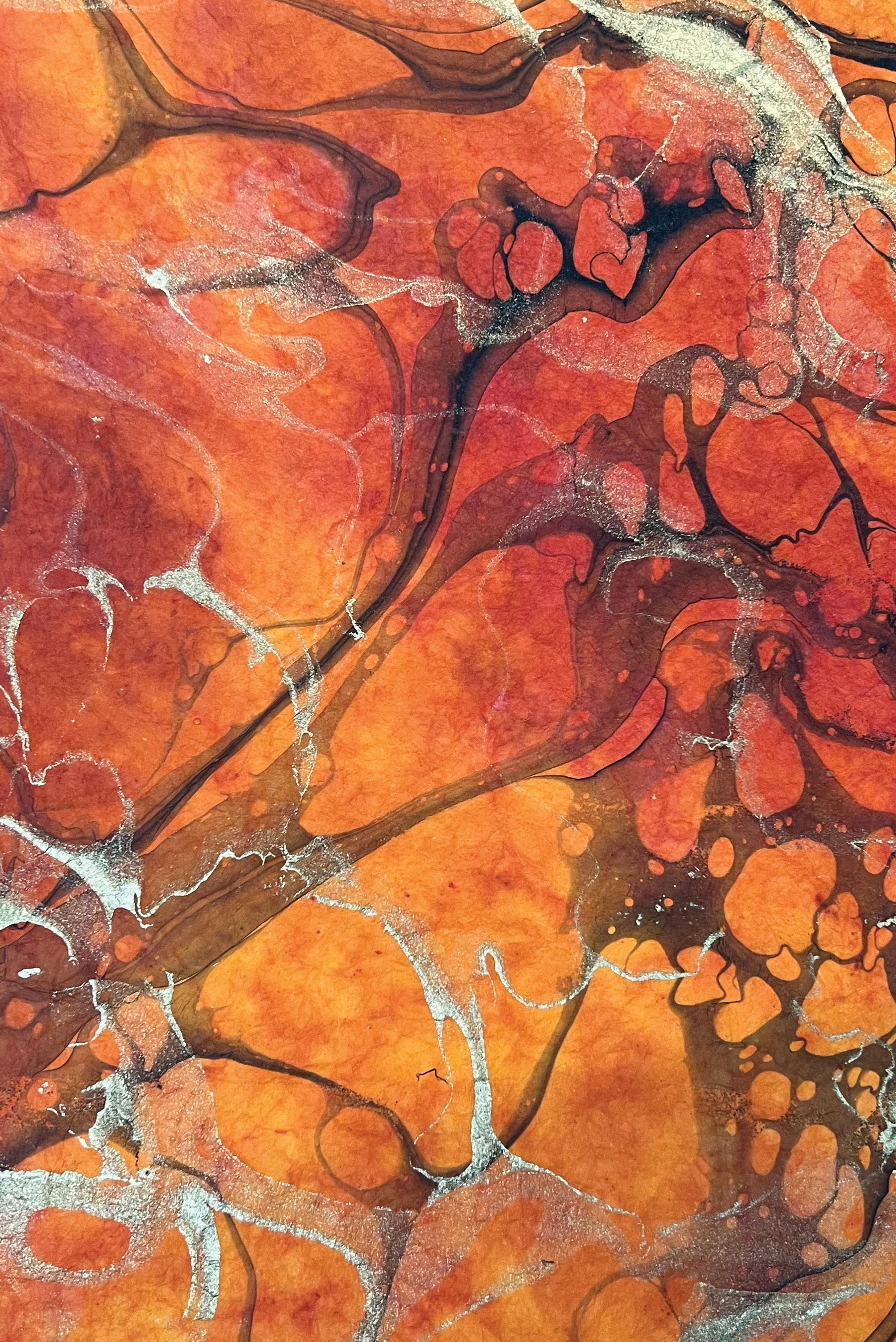
La servante maîtresse an Intermezzo in 2 acts
Based on La serva padrona
Giovanni Battista PergolesiLibretto by Gennaro Federico after the play by Jacopo Angello Nelli
French translation by Pierre Baurans
English dialogue by Nick Olcott
The action unfolds in the dressing room of Pandolfe, a wealthy bourgeois.
Stabat mater
P.77 Pergolesi
I. “Stabat mater dolorosa,” Grave, duet
II. “Cujus animam gementem,” Andante amoroso, soprano
III. “O quad tristis et afflicta,” Larghetto, duet
IV. “Quae moerebat et dolebat,” Allegro, mezzo-soprano
V. “Quis est homo,” Largo, duet
VI. “Vidit suum dulcet natum,” Tempo giusto, soprano
VII. “Eja mater fons amoris,” Andantino, mezzo-soprano
VIII. “Fac ut ardeat cor meum,” Allegro, duet
IX. “Sancta mater, istud agas,” Tempo giusto, duet
X. “Fac ut portem Christi mortem,” Largo, mezzo-soprano
XI. “Inflammatus et accensus,” Allegro ma non troppo, duet
XII. “Quando corpus morietur,” Largo assai, duet —“Amen…,” Presto assai
Patrick Dupré Quigley, Conductor & Musical Direction
Nick Olcott, Stage Direction & Text Translation/Adaptation (La servante maîtresse)
Marsha LeBoeuf, Costume Design (La servante maîtresse)
Cast (La servante maîtresse)
Hannah De Priest Zerbine†
Jonathan Woody Pandolfe
Patrick Kilbride Scapin
Artists (Stabat mater)
Gwendoline Blondeel Soprano†
Sarah Mesko Mezzo Soprano
Julia Doe, Pre-Concert Lecture
Production Staff
Sarah Greenberg Stage Manager
Andrew Sauvageau Titles
Leslie Nero Music Librarian
Nancy Jo Snider Orchestra Personnel Manager
Opera Lafayette
Violin 1
Jacob Ashworth*
Concertmaster
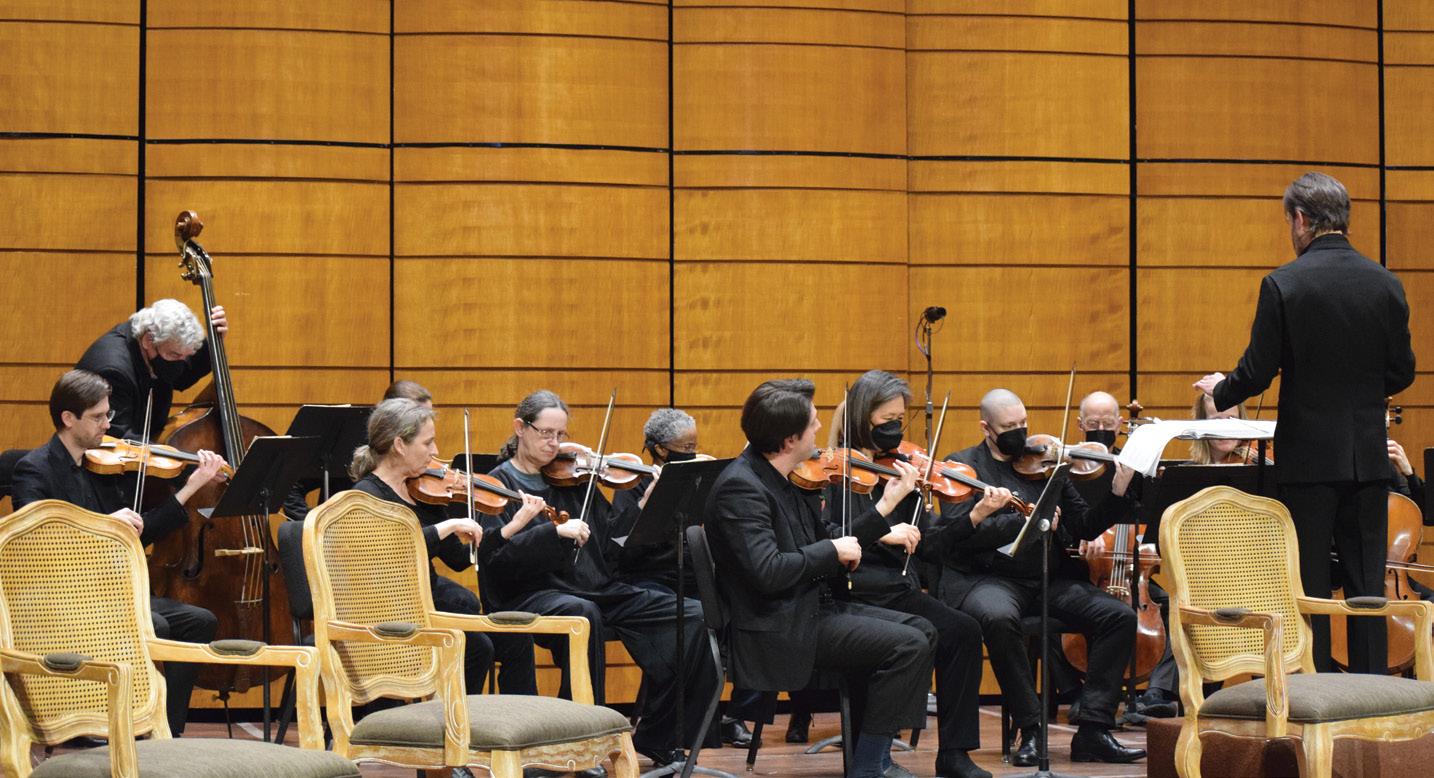
June Huang
Theresa Salomon
Jeremy Rhizor †
Violin 2
Keats Diefenbach*
Natalie Kress
Gesa Kordes
C. Anne Loud
Leslie Nero
Viola
Kyle Miller*
Isaiah Chapman
Cello
Serafim Smigelskiy*
Nancy Jo Snider
David Bakamjian
Bass
John Feeney*
Bassoon
Ben Matus*
French Horn
Todd Williams*
Linda Dempf
Harpsichord
Aya Hamada* †
The professional career of the Italian composer Giovanni Battista Pergolesi was exceptionally brief. Pergolesi fulfilled his first operatic commission at the age of twenty-one, as a fresh conservatory graduate in 1731. He succumbed to tuberculosis only five years later, in 1736. Remarkably, the body of music he wrote in the short, intervening span included two of the most successful works of the entire eighteenth century—both of which are featured on this evening’s program. The Stabat mater (1736), a sacred reflection on Mary’s suffering at the crucifixion of Christ, was the most frequently printed piece of music of the European Enlightenment. The comic intermezzo, La serva padrona (1733; performed here in French translation), was one of the most influential and widely traveled operas of this same period. Pergolesi’s output achieved this extraordinary, pan-European renown because its style—now described as “galant”—helped to incite a largescale shift in musical aesthetics. The composer’s works, which foreground elements of clarity, balance, and “natural” simplicity, presented a challenge to the then-predominant features of the high Baroque (as reflected, for example, in the intricate, polyphonic writing of Johann Sebastian Bach, George Frideric Handel, or Jean-Philippe Rameau). Pergolesi particularly excelled in the genre that has come to encapsulate this stylistic evolution: comic opera. As the musicologist Richard Taruskin aptly notes, “the music of change in the eighteenth century … was the music of comedy.” La serva padrona is a distinctly forward-looking work, placing an emphasis on highly tuneful arias, dynamic ensembles, and gentle social satire; the plot hinges on the machinations of the titular servant girl, Serpina/Zerbine, who wishes to trick her employer and guardian, Uberto/Pandolfe, into marriage.
Pergolesi’s compositions were performed throughout the continent and in Britain in the decades following his death. In France, he achieved tremendous posthumous fame during the era of Madame de Pompadour. Both works highlighted in tonight’s concert took on outsize roles in a controversy known as the querelle des bouffons (or “war of the comic actors”): a Parisian musical-literary dispute over the relative merits of French and Italian opera. The main thrust of the conflict was sparked in the summer of 1752. A traveling troupe of Italian singers (the “Bouffons”) presented a series of imported intermezzi—headlined by La serva padrona—on France’s most prestigious lyric stage, the Paris Opéra. The light, comic programming was overwhelmingly successful, but also highly unusual for this theater, which had long specialized in serious works by established national composers (Rameau and Jean-Baptiste Lully foremost among them).
The firestorm that followed—dozens upon dozens of pamphlets and articles in the periodical press—pit partisans of modern, Italian comedy against defenders of the traditional and eminently French genre of courtly tragedy (tragédie lyrique).
National style in opera was a frequent subject of debate in pre-revolutionary Paris, and there were clear musical distinctions at play here: the “natural” melody of the new Italian school stood in stark contrast to the harmonic and structural complexity of the French Baroque. But the scope and vehemence of argumentation in the querelle des bouffons was unprecedented in French musical discourse. And, indeed, because the most ardent members of the Italianist camp—including philosophes like Jean-Jacques Rousseau and Denis Diderot—were known for their progressive social views, historians have surmised that their criticism had both aesthetic and political import. In other words, to argue for operatic evolution was a veiled means of arguing against the governmental status quo, so closely linked was Bourbon absolutism with the courtly strains of tragédie lyrique. Over the course of the querelle, it was the œuvre of Pergolesi, above all, that stood in for Italian composition (and cultural modernity) writ large. Rousseau would praise the Stabat mater—presented frequently in Paris in the 1750s—as containing some of “the most perfect and touching” music ever written. To La serva padrona, the philosophe would attribute an even more significant artistic change. The Bouffons, Rousseau famously quipped, “dealt a blow to French opera from which it would never recover.” The precise role of Madame de Pompadour within the querelle des bouffons is complex. Pompadour had long been a champion of Rameau and could not openly scorn the traditional French style that he represented. And yet, the programming of her own private theater at Versailles was both varied and experimental, laying the groundwork for the broader operatic reform that took hold elsewhere.
For all the controversy it generated, the residency of the Italian troupe did not entirely transform the repertoire performed on the French tragic stage. With the exception of Rousseau’s Italianate Le devin du village, the buffa style proved something of a dead-end at the ultra-conservative Opéra. For the upstart, comic companies of Paris (the Comédie Italienne and fairground Opéra-Comique), by contrast, the impact of the visiting Italian players was immediate—and would prove lasting. These latter troupes were eager to take advantage of both the success of imported intermezzi and the skirmishes that surrounded them; their directors began aggressively to commission Italian-inspired works for production at their own theaters. One of the most important results of these programming initiatives was La servante maîtresse: a French-language translation of La serva padrona, made by Pierre Baurans for the Comédie Italienne in 1754. Baurans made modest alterations to Pergolesi’s original text and music. He granted the characters French names, inserted several additional numbers to showcase his leading soprano,
Marie-Justine Favart, and replaced the recitative with spoken dialogue to satisfy local conventions. With these changes, La servante maîtresse would far surpass its Italian counterpart in Parisian popularity. As the music historian Julia Hamilton has shown, it was presented nearly every season at the Comédie Italienne—hundreds of times, in total—from the 1750s through the fall of the Bastille. During the 1790s, it enjoyed a marked resurgence. The so-called “liberty of the theaters” of 1791—a relaxation of royal dramatic monopolies—led to an explosion of further productions. At this time, the work enjoyed more than 300 performances at more than twenty-five different theaters, making it one of the most successful spectacles (of any kind) of the revolutionary decade.
La servante maîtresse is a significant work in French operatic history not merely for its ubiquity on Parisian stages, but for the influence it exerted on French composers in the years that followed its premiere. Authors working for the nation’s comic theaters soon turned away from direct translation of pre-existing Italian operas and toward creative imitation. These artists wrote new French-language works that built upon the musical style of cosmopolitan models, while catering to the plot and character expectations of native audiences. The opéra comique composers at the foundation of Opera Lafayette’s repertoire—including André Grétry, Pierre-Alexandre Monsigny, and FrançoisAndre Danican Philidor—were thus direct beneficiaries of, and ultimate successors to, Pergolesi’s forward-looking musical and dramatic achievements.
Opera Lafayette

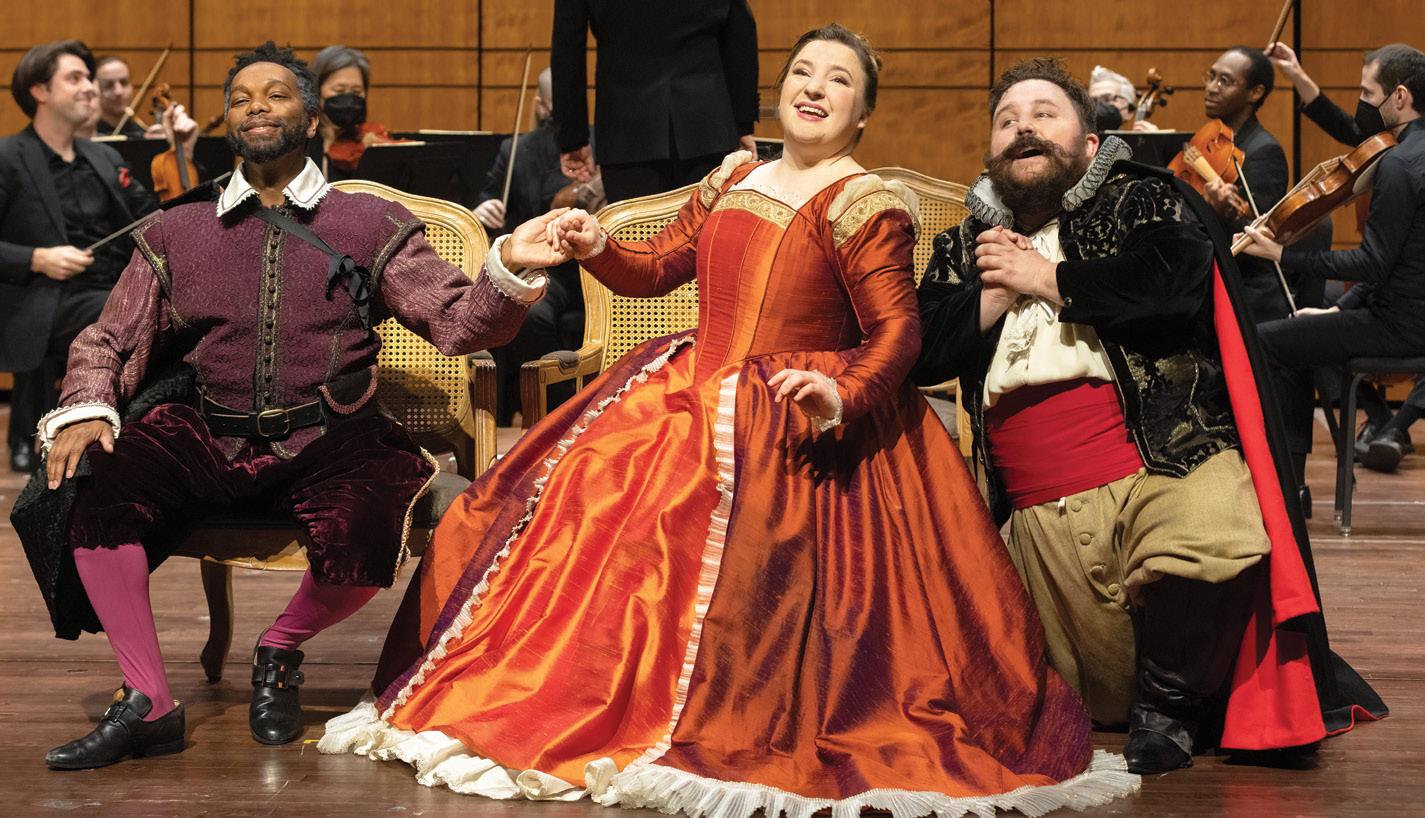
October 24, 2022 & October 26, 2022
Many joined Opera Lafayette as we raised the curtain on our 2022-2023 season. The kickoff event featured remarks by Artistic Director Ryan Brown, and a recital with mezzo-soprano Markéta Cukrová and harpist Christa Patton. These free events were hosted at the Hill Center in Washington, DC, and by Gotham Arts in New York, NY. This beautiful recital invigorated and excited us all for the productions to come.

Location: Hill Center at The Old Naval Hospital
921 Pennsylvania Avenue SE, Washington, DC, 20003
Artists and instrumentalists appearing in our 2023 season productions joined Stanford in Washington students for brunch, discussion, and demonstrations before the students saw the performances at The Kennedy Center for the Performing Arts. The students had a unique chance to engage with the artists and learn more about this art form and its relevance to today’s society and to the younger generations.
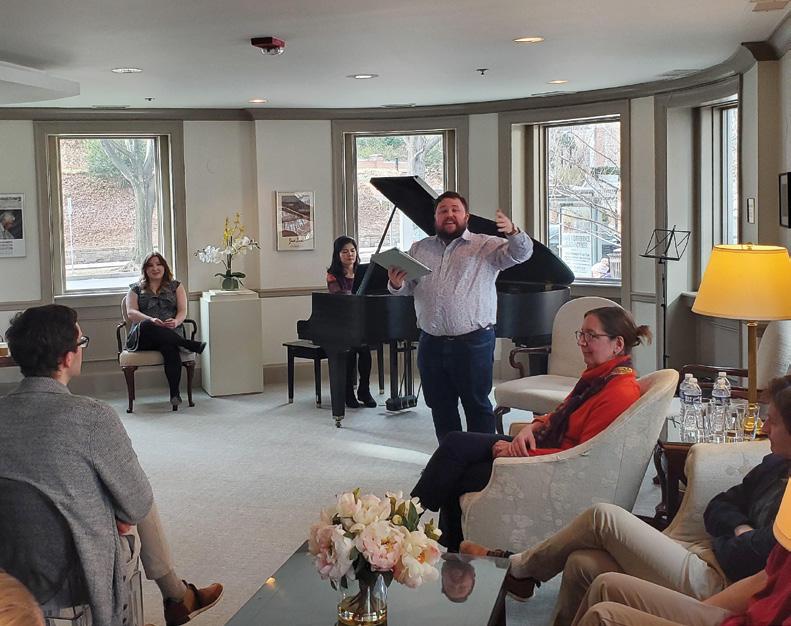
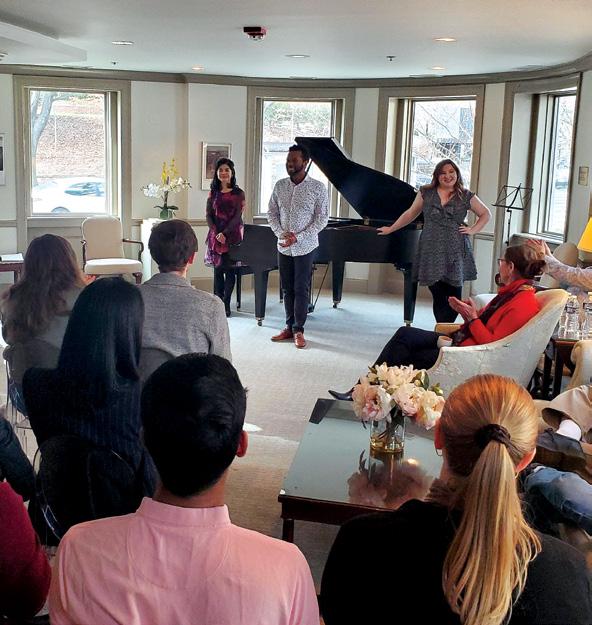
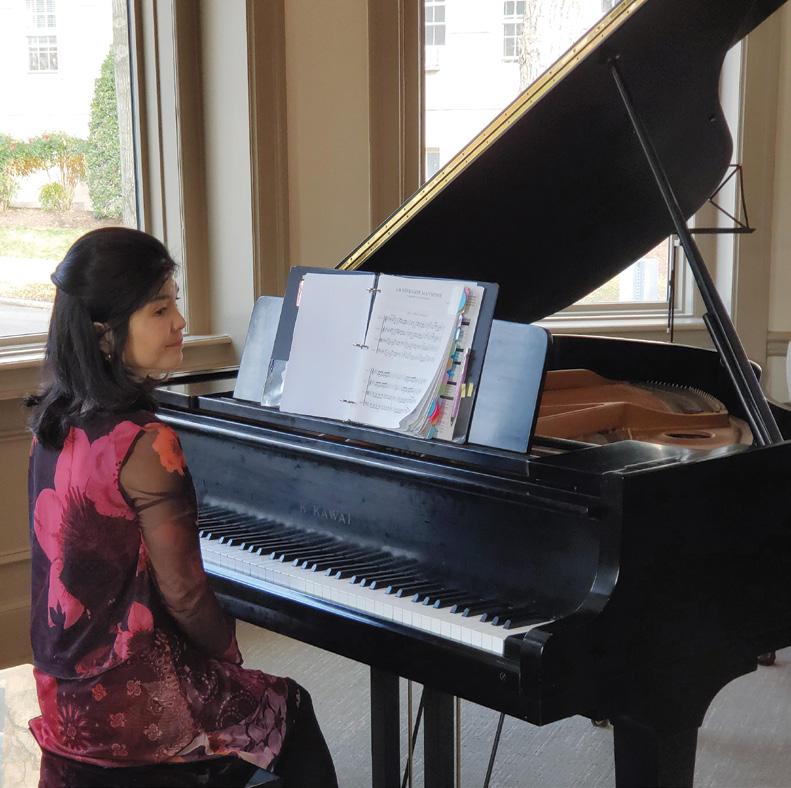
Location: Stanford in Washington
2661 Connecticut Avenue NW, Washington, DC 20008
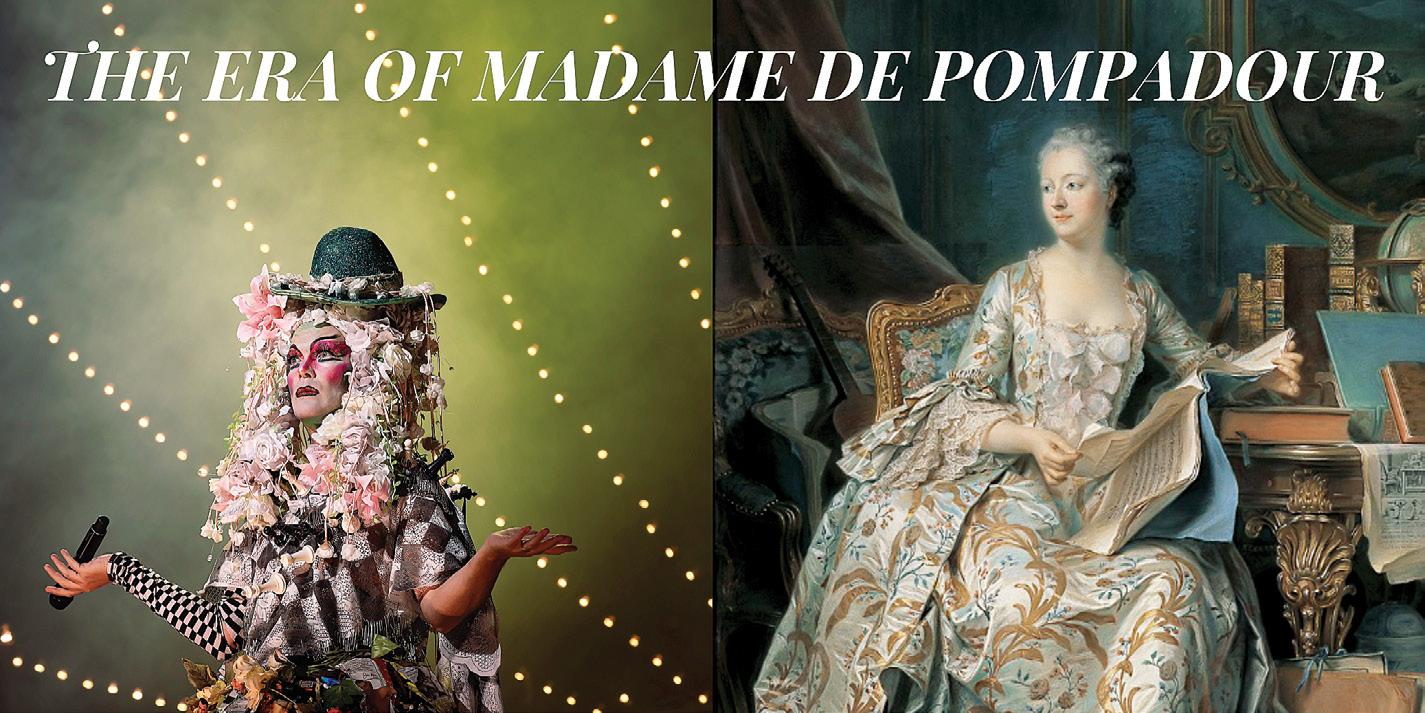
March 22, 2023
An Evening with Machine Dazzle, Ryan Brown, Meredith Martin, Jonathan Woody, Avi Stein, and Oliver Mercer
French Institute Alliance Française (FIAF) and Opera Lafayette presented a musical evening delving into the striking parallels between the classic extravagance of French Rococo style and the over-the-top aesthetic of Queer Maximalism. Costume designer Machine Dazzle, art historian Meredith Martin, musicians Jonathan Woody, Avi Stein, and Oliver Mercer, along with moderator Ryan Brown, founder and artistic director of Opera Lafayette, joined for music and lively conversation.
Location: French Institute Alliance Française 22 E 60th Street #1077, New York, NY 10022
Opera Lafayette

Friday, May 5, 2023
SPEAKERS:
• Susan H. Vita, Chief, Music Division, Library of Congress
• Mathias Auclair, Director, Music Department, Bibliothèque Nationale de France
• Sylvie Bouissou, Director of Research, National Center of Scientific Research (CNRS)
• Ryan Brown, Artistic Director and Founder, Opera Lafayette
The Library of Congress in collaboration with Opera Lafayette hosted French and American scholars involved with the rediscovery, completion and premieres of two significant eighteenth century opéra-ballets: Jean-Philippe Rameau’s Io and Pierre de La Garde’s Léandre et Héro. The panelists discussed issues regarding research and editing for performance editions of operas from this period and examined the role of national libraries in acquiring and preserving artifacts of cultural patrimony.
Location:
Room 119, Thomas Jefferson Building Library of Congress, Washington, DC 20540
Preceding the three programs of The Era of Madame de Pompadour at El Museo del Barrio, Opera Lafayette hosts some of the scholars and artists who participated in our 2023 Festival Season. Join us for a free public discussion at the French Institute Alliance Française (FIAF), between the hours of 10:00am and 12 noon, with coffee/tea and pastries before the talk.
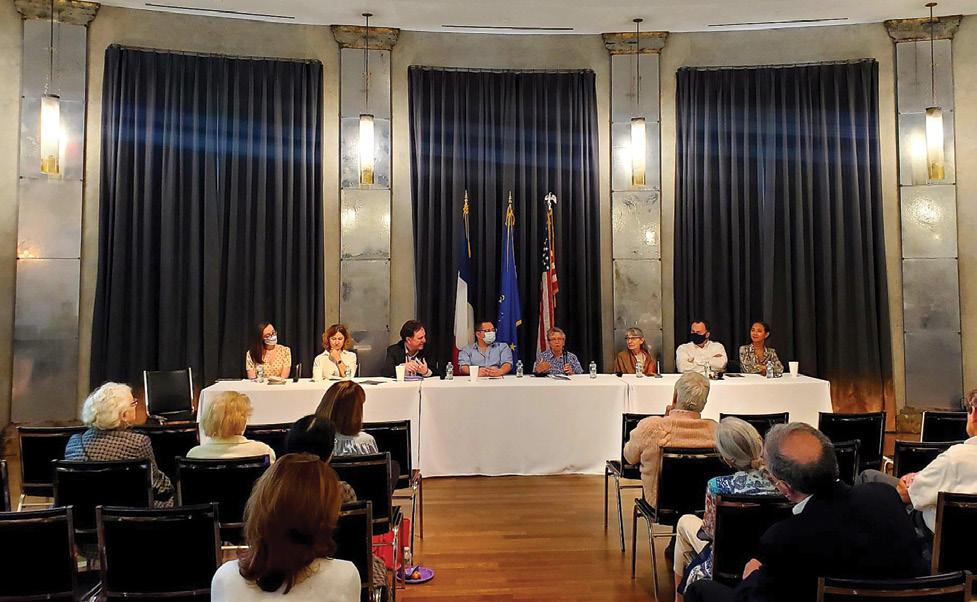
Location:
The Skyroom, French Institute Alliance Française 22 E 60th Street #1077, New York, NY 10022

November 2022
Scholar Christine Adams opened this series focusing on the unique institution of the powerful French royal mistress as a recognized extra conjugal social position with the potential for significant political influence. Adams examined Madame de Pompadour’s rise as “official” royal mistress in the context of this striking feature of early modern French political culture. The second session explored the history and influence of Madame de Pompadour as historical musicology researcher, Callum Blackmore hosted an interview with violinist Jacob Ashworth, the musical director of In the Salons of Versailles.
Learn more at: operalafayette.org/pompadour-salon
January 2023
Artistic Associate Julia Doe hosted this two-part series exploring Madame de Pompadour and her influence on the works of Giovanni Battista Pergolesi. The first session offered an introduction to the French opera wars of the 1750s and Madame de Pompadour’s role within them, exploring both developments in musical aesthetics and the political ramifications of these shifts. Guest Conductor Patrick Dupré Quigley and Baritone Jonathan Woody joined us for the second session and gave the viewers a behind-thescenes look at the upcoming performance and the thought process that went into creating this production.
Learn more at: operalafayette.org/pergolesi-salon
March 2023
Opera Lafayette hosted a three-part online series in the month of March. The first two sessions were hosted by scholars Mark Ledbury, Melissa Hyde, and Meredith Martin, who discussed Rococo as an eighteenth-century mode that encompassed the visual arts, material culture, fashion and music. Meredith Martin engaged in conversations with artist and costume designer, Machine Dazzle, to explore his upcoming production of Rameau’s Io. The third session featured scholars Rebecca Harris-Warrick and Hedy Law, who explored what the inclusion of dancing meant to these operas, the multiple ways in which dance functioned within a primarily vocal environment, and how the emergence of pantomime offered a new paradigm.
Learn more at: operalafayette.org/opera-ballet-salon

Learn more at: operalafayette.org/oswo
Opera Starts with Oh! (OSWO) is back to in-person events that are bigger than ever. Sarah Laughland, our Lead Teaching Artist in Washington DC, is a professional dancer who works with various studios throughout the Washington metropolitan area. She hosted two OSWO sessions this season, the first at the Hill Center in Capitol Hill in January 2023 with a focus on the production of Pergolesi! and the second in partnership with Tregaron Conservancy in April 2023 showcasing Rameau’s Io.
Julia Bengtsson, a beloved dancer and performer with Opera Lafayette, is our new Lead Teaching Artist in New York. This past March, Opera Lafayette co-produced an OSWO session with United Palace in uptown Manhattan. Opera Lafayette is excited for this continuing partnership to bring opera to the children of NY.
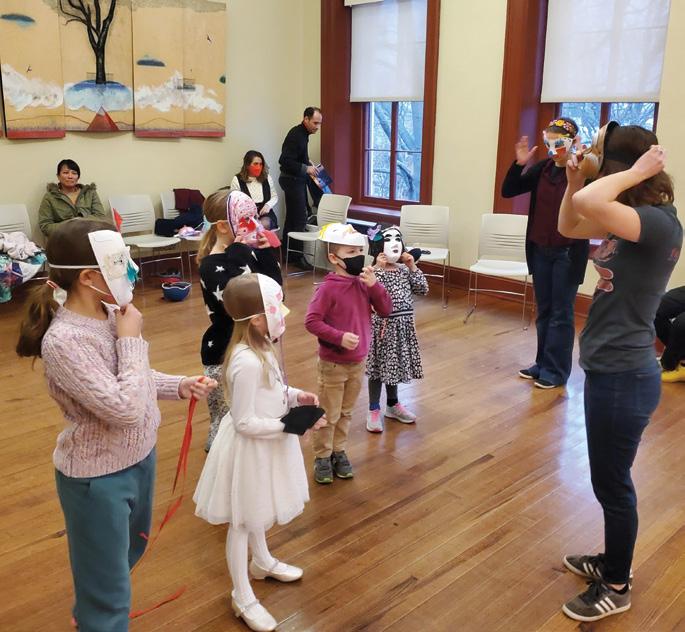
Opera Lafayette has partnered with our longtime violinist June Huang and George Mason University to offer a collaborative musical experience for students aged 9-13 of violin, viola, cello, and bass in a two-week long program. In addition to working with faculty from the Dewberry School of Music at George Mason University, participants will have the opportunity to meet with Opera Lafayette teaching artists to explore creativity and self-expression through music, movement, and sound. Learn more at: operalafayette.org/gmu-summer-camp


CALLUM JOHN BLACKMORE is a graduate student in historical musicology at Columbia University in the City of New York studying French opera in the long eighteenth century. His dissertation, “Opera at the Dawn of Capitalism: Staging Economic Change in France and Its Colonies from Rameau to Cherubini,” explores representations of economic life on the operatic stage in the lead-up to the French and Haitian Revolutions. He has been published in Current Musicology and Naxos Musicology International and has presented his research at the annual meeting of the American Musicological Society. His research has been supported by the Barker Fellowship and the Institute for Religion, Culture and Public Life.

CHRISTINE ADAMS is professor of European history at St. Mary’s College of Maryland. She publishes primarily in French gender and family history (17th–19th centuries). Her most recent book, The Creation of the French Royal Mistress: From Agnès Sorel to Madame Du Barry (Pennsylvania State University Press, 2020), co-authored with Tracy Adams, examines the rise of the royal mistress as a quasi-institutionalized political position in early modern France. Adams was a 2020–2021 fellow with the American Council of Learned Societies and a spring 2021 Andrew W. Mellon long-term fellow at the Newberry Library where she worked on her new book project, The Merveilleuses and their Impact on the French Social Imaginary, 1794–1799 and Beyond. It focuses on a group of young, stylish, and politically influential Parisian women who came to define the era of the Directory (1794–1799). She writes frequently on current events and has a particular interest in politics, education, gender, and reproductive rights.
HEDY LAW is Associate Professor of Musicology at the University of British Columbia. She received her Ph.D. in Music Theory and History at the University of Chicago. She has published in Cambridge Opera Journal, the Opera Quarterly, Musique et Geste en France: De Lully à la Révolution, the Oxford Handbook of Music and Disability Studies, the Oxford Handbook of Music and Censorship, the Oxford Handbook on Music and the Body, and the collection of essays Noises, Audition, Aurality: History of the Sonic Worlds in Europe, 1500–1918. She co-authored an article on Beethoven’s song cycle An die ferne Geliebte for the journal CENTER: Architecture and Design in America. Her book, Music, Pantomime, and Enlightenment France, was published by Boydell & Brewer Press in 2020.

JULIA DOE is Assistant Professor of Music at Columbia University. She is a scholar of eighteenth-century opera, with emphasis on the music, literature, and politics of the French Enlightenment. Her first book, The Comedians of the King (University of Chicago Press, 2021), traces the impact of Bourbon patronage on the development of opéra comique in the final decades of the Old Regime. She is currently at work on a new monograph on the Atlantic underpinnings of the prerevolutionary French theater industry. Prof. Doe’s articles have appeared in the Journal of the American Musicological Society, Studies in Eighteenth-Century Culture, Eighteenth-Century Music, and the new collection Histoire de l’opéra français du Roi-Soleil à la Révolution. She is the recipient of the Alfred Einstein and M. Elizabeth C. Bartlet awards from the American Musicological Society, as well as grants from the National Endowment for the Humanities, the Fulbright Program, and the Beinecke Rare Book and Manuscript Library. Before beginning her tenure-track appointment at Columbia, Prof. Doe served in the music department as a Mellon Postdoctoral Research Fellow. She holds a Ph.D. in musicology from Yale University (2013).

MARK LEDBURY is Power Professor of Art History and Director of the Power Institute at the University of Sydney. His research focuses on the relationships between theatre and visual art, and on the concept of genre in the visual arts. He is the author and editor of books and studies on Francois Boucher, Jean-Baptiste Greuze and Jacques-Louis David, and his current projects focus on innovation transfer across artistic communities in eighteenth-century France, and on the practice of History painting. He is currently one of a multi-disciplinary team responsible for a new digital critical edition of Jean-Benjamin de Laborde’s 1773 Choix de Chansons. At the University of Sydney, Mark teaches and supervises across eighteenth and nineteenth century European art, and as Director of the Power Institute Mark curates programmes and events designed to bring ideas in the visual arts to a wide national and international audience. Before joining the University of Sydney in 2011, Mark worked at the Universities of Portsmouth and Manchester in the UK, and as Associate Director of Research and Academic Programs at the Clark Art Institute in Williamstown, Massachusetts. Link to Mark's bio page: https://www. sydney.edu.au/arts/about/our-people/academic-staff/mark-ledbury.html

MATHIAS AUCLAIR is the Director of the Department of Music of the Bibliothèque nationale de France (National Library of France) since 2016. He was previously assistant to the Director of the Library-Museum of the Opera. He is a graduate of the National School of Charters and the National School of Information Sciences and Libraries (ENSSIB), where he successively obtained the diplomas of archivist paleographer (1999) and library curator (2000). His research focuses on the formation of the collections of the Music Department of the National Library of France, on the history of the Paris Opera, on scenography and on relationships between music, dance and the other arts. He curated sixteen exhibitions at the Library-Museum of the Opera and co-directed/co-edited ten publications and exhibition catalogs on music, opera and dance. He is the author with Elizabeth Giuliani of a book on Jean-Philippe Rameau and with Pierre Pourvoyeur of a book on the ceiling of the Garnier Opera house painted by Chagall. He published in 2019 L’Opéra de Paris: 350 ans d’histoire (The Paris Opera: 350 Years of History) which won the prize of the Critics’ Union in 2020. Mathias Auclair oversees the responsibilities for the European Music Season project of the National Library of France and Radio France, under the high patronage of the President of the French Republic in partnership with Radio France Music and with the support of the ministry of Culture and the general secretariat of the French presidency of the European Union Council within the framework of the French Presidency of the Council of the European Union in 2022.

MELISSA HYDE is Professor and Distinguished Teaching Scholar at the University of Florida. Her scholarly interests include: women artists, and more broadly, the gendering of aesthetic culture, the cultural meanings of color, self-portraiture, questions of identity, and afterlives of the Rococo. Melissa’s research and publications focus on gender and visual culture in eighteenth-century France. Her key publications include Making Up the Rococo: François Boucher and his Critics, Rethinking Boucher, co-edited with Mark Ledbury, and Rococo Echo: Art, Theory and Historiography from Cochin to Coppola, co-edited with Katie Scott. Author of many book chapters and articles, she has recently published two essays on the contemporary pastel artist, Nicolas Party. She is currently completing a book project entitled, Painted by Herself: Marie-Suzanne Giroust Roslin, the Forgotten Académicienne. Professor Hyde’s research has been supported by the American Association of University Women and the Getty Research Institute, the Clark Art Institute and at the Institut national de l’histoire d’art (INHA), Paris. In fall 2020, she was Ailsa Mellon Bruce Visiting Senior Fellow at the Center for Advanced Study in the Visual Arts (CASVA) at the National Gallery of Art, Washington DC. She is co-editor of a new book series on eighteenth-century women artists, part of the “Illuminating Women Artists” series published by Lund-Humprhies and the Getty. She holds an honorary doctorate from her alma mater, Colorado College, and is past President of the American Society for Eighteenth-Century Studies.

MEREDITH MARTIN is associate professor of art history at New York University and the Institute of Fine Arts. A specialist in early modern French art, architecture, and cross-cultural exchange, she is the co-author (with Gillian Weiss) of the award-winning book The Sun King at Sea: Maritime Art and Gallery Slavery in Louis XIV’s France (Getty Research Institute Publications, 2022), and the author of Dairy Queens: The Politics of Pastoral Architecture from Catherine de’ Medici to Marie-Antoinette (Harvard University Press, 2011). Together with the choreographer and activist Phil Chan, Martin co-created and produced a lost 18th-Century French ballet known as the Ballet des Porcelaines, or The Teapot Prince, which was performed throughout the U.S. and Europe in 2021-22 and was the subject of a volume entitled Reimagining the Ballet des Porcelaines: A Story of Magic, Desire, and Exotic Entanglement (Harvey Miller/Brepols, 2022). Martin has also co-curated an exhibition on the world’s first stock market collapse at The New York Public Library called Fortune and Folly in 1720, and she contributed to the accompanying book Meltdown: Picturing the World’s First Bubble Economy (Harvey Miller/Brepols, 2020). Lastly, she regularly writes about how contemporary artists engage with the rococo and with France’s colonial past for Artforum and other publications, and she is a founding editor of Journal18, an online, open-access journal devoted to art and culture of the long 18th Century from around the globe.

REBECCA HARRIS-WARRICK is Professor Emerita of Music at Cornell University, where until 2021 she taught a wide variety of music history courses at all levels, undergraduate and graduate, and chaired the Department of Music from 2002 to 2008. She has an interdisciplinary background in musicology, performance, dance history, and literature, which she applies to her primary research interests in French opera of the 17th and 18th centuries. Her most recent book, Dance and Drama in French Baroque Opera, was published fall 2016 by Cambridge University Press. Her research extends beyond the baroque into later periods of operatic history, and she has prepared a critical edition of Gaetano Donizetti’s opera La Favorite. Much of Professor Harris-Warrick’s scholarly work has been informed by her interests in performance and some of her research has been brought into practice on the stage, such as in productions of operas at the Boston Early Music Festival. Since 2003 she has organized four performances at Cornell of baroque operas or ballets, in which Cornell students have had the opportunity to work with professional musicians and dancers. Her most recent production, “The Pleasures of the Quarrel” in March 2022, staged an imagined mash-up of three key works performed in Paris in 1753 during the Querelle des bouffons, when Parisian opera lovers argued vigorously over the merits of French and Italian musical styles—including over Pergolesi’s intermezzo La serva padrona, which Opera Lafayette is presenting this season in its 1752 French translation, La servante maîtresse.

SYLVIE BOUISSOU, Director of Research at the French National Center for Scientific Research (CNRS), is an aggregate, doctor and HDR (Habilitation to supervise research) of the universities of Paris-IV and Paris-I Sorbonne, and former resident of the Académie de France in Rome. In 1992, she launched the complete edition of Rameau’s works (Opera omnia, distributed worldwide by Bärenreiter/Alkor since 2003) with, to date, 65 volumes published. In 1996, she founded and directed the Institut de recherche sur le patrimoine musical en France, which has since become the IREMUS (Institut de recherche en musicologie), and created Musica Gallica, an action in favor of the publication of French musical heritage in partnership with the Fondation Salabert, the Ministry of Culture and music publishers. She is the author of several critical editions - most recently of Rameau’s Hippolyte et Aricie and Les Indes galantes - and of works on Baroque music, notably Jean-Philippe Rameau, Les Boréades ou la tragédie oubliée (1992), Histoire de la notation (2005), Vocabulaire de la musique baroque (2nd edition, 2008), Crimes, cataclysmes et maléfices dans l’opéra baroque en France (2011), Jean-Philippe Rameau musicien des Lumières (2014), Rameau entre art et science (2016), Jean-Philippe Rameau, Catalogue thématique des œuvres musicales (3 volumes with P. Denécheau and D. Herlin, 2003, 2007, 2012) and Dictionnaire de l’Opéra de Paris sous l’Ancien Régime (4 volumes with P. Denécheau and Fr. Marchal-Ninosque, 2019-2020). She is currently preparing a critical edition of Les Boréades and Les Surprises de l’amour (Versailles version), a Dictionnaire des copistes sous l’Ancien Régime, and the third volume of Jean-Philippe Rameau: Catalogue thématique des œuvres musicales.

Ryan Brown is the founder and artistic director of Opera Lafayette, which celebrated its 25th anniversary in the 2019/2020 season. Through his work with Opera Lafayette, Ryan has gained an international reputation for his role in the revival and reassessment of significant works from the 17th, 18th, and 19th centuries. His discography of twelve sound recordings for Naxos has focused on the French repertoire, including well-known works by composers such as Lully, Rameau, and Gluck, as well as premiere recordings of operas by Rebel/Francœur, Monsigny, Philidor, Grétry, Sacchini, and Félicien David. Ryan has also created two DVDs with Opera Lafayette for Naxos, including the modern premiere of Gaveaux and Bouilly’s Léonore, ou L’Amour conjugal, the

model for Beethoven’s Leonore, the latter of which Opera Lafayette presented in its 25th anniversary season, as well as Rameau’s Les Fêtes de L’Hymen et de L’Amour, ou Les Dieux d’Egypte, a collaboration with the New York Baroque Dance Company, the Seán Curran Company, and Kalanidhi Dance. Ryan has also led performances of operas by Vivaldi, Handel, Mozart, Haydn, Paisiello, and Cimarosa. He regularly appears in Washington, DC and New York with Opera Lafayette and has also conducted in San Francisco, Seattle, and at The Glimmerglass Festival, and the Opéra Royal de Versailles. Ryan was raised in a musical family in California and performed extensively as a violinist and chamber musician before turning his attention to conducting. His teachers include Dorothy DeLay and Gustav Meier. He is a recipient of La Médaille d’Or du Rayonnement Culturel from La Renaissance Française, and when not conducting spends his time in southwestern Colorado.
(Scene Project Design, Io & Léandre et Héro)
Adam Thompson is a sculptor and designer currently based in Brooklyn, NY. He graduated from Yale University in 2020 with a degree in architecture and has been working in New York since. In addition to his work in architecture, he contributed web design for Reconstructions, Architecture and Blackness in America at MoMA. In November 2022, Adam presented his first solo show, “Leaving our Ground Plane…” at Rabbit Rabbit Gallery, in Manhattan’s East Village. Themes of spirituality and space are at the center of all of his work.

AVI STEIN

(Musical Direction, Conductor, Io & Léandre et Héro)
Avi Stein is the associate organist and chorus master at Trinity Church Wall Street and on faculty at the Juilliard School where he teaches continuo accompaniment, vocal repertoire and chamber music. The New York Times described Avi as “a brilliant organ soloist” in his Carnegie Hall debut. Avi is the artistic director of the Helicon Foundation and has directed the International Baroque Academy of Musiktheater Bavaria, and the young artists’ program at the Carmel Bach Festival. He has conducted a variety of ensembles including Tafelmusik, the Portland Baroque Orchestra, the Bang on a Can All-Stars, and the Opera Français de New York. Avi conducted Henry Purcell’s Dido and Aeneas at Juilliard in a production that toured in London’s Holland Park and at the Royal Opera House at the Palace of Versailles. His most recent production at Juilliard, Luigi Rossi’s Orfeo, was named one of the best performances of 2021 by the New York Times. He performed on the 2015 Grammy Award winning recording for best opera by the Boston Early Music Festival. Avi studied at Indiana University, the Eastman School of Music, the University of Southern California and was a Fulbright scholar in Toulouse, France.
(Scene Design, Io & Léandre et Héro)
Sara Caples and Everardo Jefferson are Principals and cofounders of Caples Jefferson Architects. Their work has gained national recognition and has been published internationally for its exceptional design qualities. Among its most notable projects are Heritage Health & Housing social services agency, located in a former garage in Harlem; Queens Theatre-in-the-Park, expanding a World’s Fair building into a public theatre; and Weeksville, a new visitor’s building and campus built around a rediscovered freedmen’s preservation site. Everardo’s community service has included serving on the boards of social justice and educational institutions, and he is currently acting as a Commissioner of the New York City Landmark Preservation Commission. Everardo and Sara frequently teach as guest educators in schools of architecture, most recently as Davenport Professors at Yale University. Sara served as a Spring 2022 Fellow for Innovation in Engagement at Pratt Institute. Sara and Everardo’s most recent book is Many Voices: Architecture for Social Equity.

(Choreographer, Léandre et Héro)
Catherine Turocy, recognized as one of today’s leading choreographer/stage directors in Baroque period performance, has been decorated by the French Republic as a Chevalier in the Order of Arts and Letters. After moving to NYC in 1976, she cofounded The New York Baroque Dance Company with Ann Jacoby. In 2018–19, she was a recipient of the Center for Ballet and the Arts Residency Fellowship in NYC for her work on Nijinsky’s Bach ballet (1913). In 2018 Turocy received the IZZY Award in San Francisco for her stage direction/choreography of Le Temple de la Gloire by Rameau, which also received two first prizes in “Best of the Bay” under both stage direction and choreography. Other awards include the BESSIE Award in New York City for sustained achievement in choreography, the Natalie Skelton Award for Artistic Excellence and the Dance Film Association Award for “The Art of Dancing.” NEA International Exchange Fellowships supported research in London and Paris. A founding member of the Society for Dance History Scholars, Ms. Turocy has lectured on period performance practices around the world including the Royal Academies of Dance in London, Stockholm, and Copenhagen; the Festival Estival in Paris and The Society for Early Music in Tokyo. She has been a long-time collaborator with Opera Lafayette and is delighted to be working with Sean Curran and Nick Olcott again!



(Musical Direction & Violin, In the Salons of Versailles)
A baroque violinist praised for his “lithe and nimble” playing and “richly detailed” conducting by the New York Times, Jacob Ashworth is the Interim Artistic Director and co-founder of Heartbeat Opera, which is fast becoming one of the most influential companies making opera today. He is also the Artistic Director and founder of Cantata Profana. As a soloist and freelance music director, Jacob appears in recitals, chamber music performances, and conducting operas throughout the United States and abroad. As a conductor Jacob has gained a reputation as a consummate stylist and curator of music, earning Cantata Profana the 2016 CMA/ASCAP National Award for Adventurous Programming. At home on modern and baroque violin, he has performed with the Mark Morris Dance Group, American Bach Soloists, TENET, Trinity Baroque Orchestra, at the Smithsonian Institution, and with Opera Lafayette, where he serves as concertmaster. In contemporary music he has premiered works with the New York New Music Ensemble, Princeton Sound Kitchen, MATA Festival, and at the Museo National de Arte in Mexico City. Jacob has been a resident artist at the Staunton Music Festival, Chamber Music Northwest, New Haven Festival of Arts and Ideas, Wellesley Composer’s Conference, France’s Festival Daniou, and Lake George Music Festival. Jacob earned his masters and doctorate from the Yale School of Music under renowned violinist Ani Kavafian and studied baroque violin with Robert Mealy as a member of the Yale Baroque Ensemble. Additionally, he earned a Performer Diploma from Indiana University, and completed his undergraduate studies at the Manhattan School of Music.
Machine Dazzle has been living and working in New York City since 1994. He describes himself as a “radical queer emotionally driven, instinct-based concept artist and thinker”. An artist, costume designer, set designer, singer/ songwriter, art director, maker, and all-around creative, Dazzle has worked with many from the New York scene and beyond, including Diane Von Furstenberg, Cara Delevingne, Godfrey Reggio, Justin Vivian Bond, Taylor Mac, Basil Twist, Julie Atlas Muz, Jennifer Miller, The Dazzle Dancers, Big Art Group, Mike Albo, Stanley Love, Soomi Kim, Opera Philadelphia, Pig Iron Theatre, the Bearded Ladies Cabaret, Spiegelworld, The Curran Theatre, and more. With Taylor Mac, Machine has collaborated on several projects including The Lily’s Revenge (2009), Walk Across America For Mother Earth (2012) and the Pulitzer Prize-Nominated A 24-Decade History of Popular Music (2016-Present). Machine was a co-recipient the 2017 BESSIE Award for Outstanding Visual Design, the winner of a 2017 Henry Hewes Design Award, and is a 2022 United States Artists Fellow. In 2019 Machine was commissioned by Guggenheim Works and Process and The Rockefeller Brothers to create Treasure, a rock and roll cabaret of original songs including a fashion show inspired by the content.
The songs from Treasure were recorded and released at an album release party at The Public Theater’s Joe’s Pub in Fall 2022. Machine Dazzle opened his first solo exhibition at the Museum of Arts and Design in NYC in September 2022. In collaboration with the Catalyst Quartet, Machine designed and performed in Bassline Fabulous, a modern take on Johann Sebastian Bach’s Goldberg Variations at The Metropolitan Museum in December 2022.

Marsha M. LeBoeuf has over 35 years of experience in costume design and management and has been the costume director for Washington National Opera since 1988, overseeing more than 180 productions. She has many responsibilities related to costuming, but her overall responsibility is to ensure that every costume presented on any WNO stage measures up to the most exacting standards. Before coming to WNO, Marsha worked for Missouri Repertory Theatre, Indiana University School of Music, Chicago Opera Theatre, Central City Opera, and designed costumes for numerous theaters in the Chicago area. She designed costumes for Eugene Onegin and Xerxes for the University of Maryland Opera Studio. In addition to her work at WNO, Marsha has been a guest speaker or lecturer at numerous organizations, including the Renwick Art Gallery, National Museum for Women in the Arts, U.S. Institute for Theater Technology, George Mason University and Towson University. Her essay titled “Apparel and the Opera Singer” was published in the Opera America Perspectives Series. She has been a member of the Opera America Technical/Production Committee since 1995 and serves on the Finance Committee for the U.S. Institute for Theater Technology.
The New York Baroque Dance Company is a leader in the revival of 18th-century ballet, bringing forgotten masterpieces to life with what The London Guardian has called “a whirlwind of desperately needed fresh air.” Founded in 1976 by Catherine Turocy and Ann Jacoby, NYBDC has collaborated on over 70 operas, reconstructing dances from period notation and choreographing in period style. The company has toured North America, Europe and Japan with conductors James Richman, John Eliot Gardiner, Christopher Hogwood, Nicholas McGegan and Wolfgang Katschner. NYBDC also performs with Opera Lafayette, the Dallas Bach Society, Ars Lyrica Houston, and Philharmonia Baroque, among others. Groundbreaking productions include premieres of Rameau operas at the Festival d’Aix-en-Provence and the Opera de Lyon and a double bill with Rameau’s Pygmalion and Handel’s Terpsicore that has been given over 100 times. The company appeared regularly at the International Handel Festival in Goettingen for over 15 years and is being archived by the New York Public Library. Through educational residencies, NYBDC dancers also offer instruction to professionals and the general public. Individual dancer bios may be found at http://www.nybaroquedance.org
Nick Olcott has worked nationally and internationally as a stage director, translator and adaptor, and has mounted numerous productions with Opera Lafayette over many seasons. With Opera Lafayette as a director, he mounted Bonsoir, Voisin; L’épreuve villageoise; Il barbiere di Siviglia; and most memorably Cosi fan tutte/Les femmes vengées, which played at the Kennedy Center, Lincoln Center, and the Opéra Royale in Versailles. As a writer, he supplied dialogue and narration for Le déserteur, Le magnifique, and Sancho Pança Other opera credits include Boston Lyric Opera, Wolf Trap Opera, Cleveland Opera, Ash Lawn Opera Festival, the University of Maryland Opera Studio, Saarburg Serenaden, Prague Summer Nights, and the In Series. Theatre credits include Arena Stage, the Kennedy Center, Philadelphia Theatre Company, the Round House Theatre, and Constellation Theatre. His operatic translations and adaptations have been performed by numerous companies, including his Love Potion No. 1 (L’elisir d’amore), Così fan tutte goes Hollywood, The Emperor of New Atlantis, and Fidelio in Latin America. His musical play Sherlock Holmes and the Case of the Purloined Patience (or, the Scandal at the D’Oyly Carte) received a Charles MacArthur Award.


Patrick Dupré Quigley is a GRAMMY-nominated American conductor, Founder and Artistic Director of the intrepid indie-classical ensemble Seraphic Fire, and guest conductor with North America’s top professional orchestras. Quigley has made significant contributions to American music by fostering vibrant musical education programs, commissioning contemporary American composers, and producing revival performances of neglected masterworks. As a guest conductor, Quigley has collaborated with The Cleveland Orchestra; the Charlotte, Grand Rapids, Indianapolis, Kansas City, Mobile, New Jersey, New World, San Antonio, San Francisco, and Utah Symphonies; the Hamilton, Louisiana and Naples Philharmonics; as well as the Philharmonia Baroque Orchestra and Chicago’s Music of the Baroque. This season, Quigley returns to Music of the Baroque and the New World Symphony, in addition to his debuts with Opera Lafayette and Canada’s National Arts Center Orchestra. A ceaseless advocate for a more inclusive concert experience, Quigley’s programs regularly span more than 1000 years of musical history. Through recordings, performances, and new editions, Quigley has championed the culturally relevant voices of Spanish Renaissance composer Tomas Luis de Victoria, the 11th century saint Hildegard of Bingen, and 18th century Cuban composer Esteban Salas y Castro. Quigley deeply respects music traditions outside the Western European canon and has developed concerts and collaborations highlighting the music of the Babylonian Jews, New Orleans’s Black Gospel tradition, Latin Pop, and the Baroque music of North and South America. Quigley has
Opera Lafayette
commissioned and/or premiered works by composers Christopher Theofanidis, Nico Muhly, Alvaro Bermudez, Juliet Palmer, Ileana Perez Velasquez, Susan Labarr, Sidney Guillaume, Shawn Crouch, and James Kallembach.

(Choreographer, Io & Léandre et Héro)
Seán Curran’s career in the arts spans 35 years, beginning with traditional Irish step dancing as a child in Boston. He is known for his performance work with Bill T. Jones/Arnie Zane Dance Company, for which he was honored with a BESSIE award for his role in Secret Pastures, and as an original New York City cast member of STOMP! Curran’s 30 dance works for his professional ensemble Seán Curran Company are characterized by collaborations across genres and have toured to over 100 venues in the U.S., Europe and Asia. A sought-after choreographer and director for opera and theatre, notable projects include Salome (Opera Theatre of St. Louis, San Francisco Opera, Opera Montreal, San Diego Opera); Much Ado About Nothing and A Midsummer Night’s Dream for The Shakespeare Theater; An American Soldier, 27, Dr. Sun Yat Sen, Shalimar the Clown, Ariadne on Naxos, Nixon in China, Daughter of the Regiment, and Champion at Opera Theater of St. Louis; NYC Opera productions of L’Etoile, Alcina, Turandot, Haroun and the Sea of Stories, Capriccio, and Acis and Galatea; Shakespeare in the Park’s As You Like It; the Metropolitan Opera’s Romeo and Juliette; Much Ado About Nothing and A Midsummer Night’s Dream for The Shakespeare Theater; and Broadway’s James Joyce’s The Dead, Cymbeline, and The Rivals at Lincoln Center Theater. A graduate and faculty member of NYU Tisch School of the Arts, Curran is currently an Arts Professor and Chair of the Department of Dance. He has over 25 years of teaching experience in modern technique, improvisation, body percussion and composition as a visiting artist at the American Dance Festival, Harvard Summer Dance Center, Bates Dance Festival, Boston›s Conservatory of Music, among many others.
Founded in 1997, the Seán Curran Company has presented 30 premieres and toured to over 100 venues in the U.S., France, Germany, Kazakhstan, the Kyrgyz Republic and Turkmenistan. Presentations in New York City include the Brooklyn Academy of Music Next Wave Festival, Dance Theater Workshop, The Joyce Theater, Dance New Amsterdam, the Guggenheim Museum, New Victory Theater, 92nd Street Y/Harkness Dance Project, Danspace Project, Symphony Space, Central Park Summerstage and Celebrate Brooklyn. Artistic excellence has been recognized through funding from the National Endowment for the Arts, New England Foundation for the Arts, New York State Council on the Arts, New York Foundation for the Arts, New York City Department of Cultural Affairs, and numerous private foundations. The company’s highly regarded service to the field includes donation of performances and classes to the American Civil Liberties Union NYC Chapter, Cyndi
Lauper’s True Colors Residence (a safe house for LGBT youth), Dancers Responding to AIDS and the Hetrick-Martin Institute. The company recently celebrated its 20th anniversary with a new production as part of the Brooklyn Academy of Music 2018 Next Wave Festival, premiering a new work Everywhere All the Time with live music by the Grammy Award winning ensemble Third Coast Percussion. The company’s previous season at BAM, in 2015, featured performances of Dream’d in a Dream, a collaboration with traditional Kyrgyz music ensemble Ustatshakirt Plus. The evening length work was inspired by Seán Curran Company’s 2012 tour to Central Asia as cultural ambassadors of the U.S. State Department, part of the DanceMotion USA program.
(Jupiter, Io & Neptune, Léandre et Héro)
Douglas Williams, bass-baritone, was born in Farmington, Connecticut. He trained in voice at the New England Conservatory, the Yale School of Music, and the Tanglewood Music Center. His repertoire spans many centuries: This season alone he will sing Cavalli’s La Calisto at the Bavarian State Opera, Thomas’ Hamlet at the Opéra de Tours, and a new work by Matthew Barnson with the Orchestre Philharmonique de Radio France. He has appeared as a soloist with some of the great orchestras, including the Berlin Philharmonic, Munich Philharmonic, Boston Symphony, Houston Symphony, Detroit Symphony, and St. Louis Symphony. In opera he distinguished himself in the roles of Figaro, Don Giovanni, and Nick Shadow. Always up for a challenge onstage, Douglas has created new opera productions with the choreographers Mark Morris and Sasha Waltz for Lincoln Center and the Dutch National Opera. His characterization of Pluto in Jonathan Dove’s The Other Euridice last season was called “one of Houston’s most riveting operatic portrayals in recent years” (Texas Classical Review). Douglas is also a writer and a performer. During the pandemic lockdowns he created an audio play called “The Compound,” which takes place in the Great Basin of the intermountain west—another passion of his. Previous Opera Lafayette appearances include his portrayal of Adonis in John Blow’s Venus and Adonis at The Corcoran Gallery in Washington D.C. and New York City’s Museo del Barrio. Recent engagements include performances of Handel’s Messiah with the Philadelphia Orchestra. He lives in the Berkshires of western Massachusetts.

(Soprano, In the Salons of Versailles; Io, Io & Héro, Léandre et Héro)
From its very beginning, Emmanuelle de Negri’s international career has demonstrated remarkable breadth of repertoire and emotional range. With William Christie and Les Arts Florissants, she has performed Purcell’s The Fairy Queen, The Indian Queen, Dido and Aeneas; Handel’s Susanna, Silete venti; Monteverdi’s Selva morale e spirituale; Rameau’s Platée (Theater an Der Wien, Opéra Comique), Hippolyte et Aricie (Aix-en-Provence, Glyndebourne); Lully’s Atys; Campra’s Les Fêtes vénitiennes (Paris, Caen, Toulouse); and Mondonville’s Titon et l’Aurore (Opéra Comique, Versailles). Emmanuelle performs with prominent French ensembles such as Pulcinella, Les Folies Françoises, Les Enfants d’Apollo, Le Banquet Céleste, Les Paladins, Les Accents, Raphaël Pichon’s Pygmalion, Vincent Dumestre’s Le Poème Harmonique, and Emmanuelle Haïm’s Concert d’Astrée. With Concert d’Astrée Emmanuelle has sung acclaimed performances of Rameau’s Castor et Pollux (Lille, Dijon, Montpellier, Beaune) and Les Boréades (dir. Barrie Kosky, Opéra

de Dijon). Recent performances include Schürmann’s Die Getreue Alceste under Christina Pluhar (Rokokotheater Schwetzingen), revivals of Rameau’s Les Indes galantes and Sémiramis (Versailles), and Handel’s Israel in Egypt alongside René Jacobs and the Freiburger Barockorchester (Paris, Freiburg, and Berlin). Emmanuelle’s 2022/23 season includes concert performances with harpsichordist Brice Sailly (Bayreuth Baroque), Thibault Noally’s Les Accents (Sémur-en-Auxois, France), and William Christie’s Les Arts Florissants in programs of Telemann and Charpentier. Operatic engagements this season include Purcell’s Fairy Queen staged by Josette Bushell-Mingo and conducted by Francesco Corti (Drottningholm). She has recorded with Le Banquet Céleste, Laurence Equilbey (Gluck’s Orfeo), and with Les Arts Florissants (in recital, Bien que l’Amour; Rameau’s Dardanus, Castor et Pollux; and Lully’s Atys.)
(Soprano, Pergolesi! & La Folie, Io)
Gwendoline is a graduate of Academie de La Monnaie. Gwendoline has already worked with several internationally renowned conductors, such as William Christie (Titon et L’Aurore, Bach Magnificat, Couperin Leçons de ténèbres), Leonardo García Alarcón (Rossi’s Il Palazzo Incantato, Handel’s Semele, Monteverdi’s Vespro della Beata Vergine), and Diego Fasolis (Vivaldi’s La Senna Festeggiante). Since her appearance at Opéra Comique in the title role of Mondonville Titon et L’Aurore with William Christie (broadcasted by Medicitv in 2021), Gwendoline Blondeel’s career has been skyrocketing and she is quickly becoming one of the most sought-after interpreters of French music. She has appeared on many opera stages, such as Théâtre du Châtelet in Paris, La Monnaie in Brussels, Opéra Royal de Wallonie in Liege, Grand Théâtre de Genève, Opéra National de Lorraine, and Opéra de Dijon. Notable roles include Delibes’ Lakmé, Olympia in Les Contes d’Hoffmann, and Eurydice in Orphée aux enfers. Opera Lafayette’s performance of Stabat Mater at the Kennedy Center marks her American debut, and she returns to the Terrace Theater with Opera Lafayette as La Folie in the first modern reprise of Rameau’s Io. Aside from her appearance on international stages, in the coming season, Gwendoline will have intense recording activities, as she will record several titles, including a new version new version of Monteverdi's Orfeo as La Musica and Euridice with Les Épopées, and the world premiere of operas such as Céphale et Procris by Elisabeth Jacquet de la Guerre with the ensemble A Nocte Temporis and La Jérusalem délivrée by Philippe d’Orléans with Cappella Mediterranea.
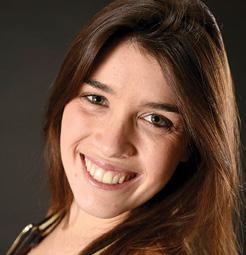
Opera Lafayette
(Zerbine, Pergolesi!)
Possessing a “voice that is theater itself” (Classique News), soprano Hannah De Priest is a fearless performer of an increasingly wide range of lyric repertoire. Especially renowned for her “masterful” (Olyrix) singing of baroque repertoire, recent stage triumphs include her recent European debut as Gilde in L’amazzone corsara for the Innsbruck Early Music Festival, an “irresistible”
(L’Opera) Belinda in Dido & Aeneas, Ïole in Handel’s Hercules, and Oberto and Morgana in Alcina. Performing the role of Zerbine in Pergolesi’s La Servante maîtresse marks both her Kennedy Center and Opera Lafayette debuts. In addition to her work this season with Opera Lafayette, Hannah’s 2022-23 season includes two productions with the Boston Early Music Festival. On the concert stage, notable upcoming and recent engagements include Handel’s Messiah with Apollo Chorus & Orchestra and Billings Symphony Orchestra, Bach’s Johannes-Passion with Columbus Symphony and Elmhurst Symphony, and Handel’s Dixit Dominus with the Elgin Master Chorale & Symphony. Hannah has garnered attention at numerous important competitions, recently winning 2nd Prize at the 2021 International Cesti Competition for Baroque Singing. She has been a finalist in The Handel Aria Competition (2021), Le Concours Corneille (2019), Audrey Rooney Bach Competition (2020), and the Bethlehem Bach Competition (2021). Hannah’s debut performing French baroque cantatas with Les Délices was hailed as “sensational” (Schmopera) and more engagements with the illustrious ensemble have followed. With collaborative pianist Michael Pecak, she tours and performs art song programs that span centuries. The duo are newly married and live in Chicago with their dog, Teddy.

(Viola, In the Salons of Versailles)
Isaiah Chapman has played in orchestras throughout the United States in both baroque and modern ensembles, including the Amarillo Symphony Orchestra, Monroe Symphony Orchestra, Austin Baroque Orchestra, Washington Bach Consort, and Opera Lafayette, among others. He has performed as a soloist with the Shenandoah Valley Bach Festival. Having been invited to participate in the inaugural and the upcoming Smithsonian Haydn Academy, a historical performance workshop focused on the string quartets of Joseph Haydn, Isaiah has played in quartets led by Adriane Post, Catherine Manson, and Kenneth Slowik. Recently, Isaiah was a 2022 Berwick Academy Fellow, playing in orchestras led by Monica Huggett and Adam LaMotte. Along with performance and composition, Isaiah is equally committed to education. In 2014, Isaiah was selected from a competitive international pool of music education colleagues to visit and teach in music and language workshops at the Orff-Institut in Salzburg, Austria. Additionally, Isaiah’s interest in galleries, libraries, archives and museums has fortified his activism for the corrective action and presentation of African diaspora collections. Isaiah has studied viola with Susan
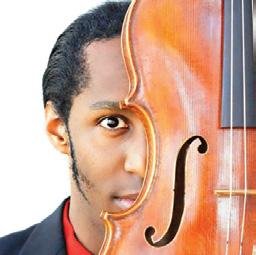
Dubois, Daphne Gerling, and Masumi Per Rostad, and baroque viola with Risa Browder and Cynthia Roberts. He holds three graduate degrees; one in Viola Performance & Literature from the Eastman School of Music, and two from the Peabody Institute of Johns Hopkins University, in Composition and Baroque Viola Historical Performance. Isaiah graduated cum laude from the University of North Texas with three undergraduate degrees in Viola Performance, Music Theory and Music Education.

Jonathan Woody is a versatile and dynamic musician who maintains an active schedule as a performer and composer across North America. Cited by the Washington Post for singing “with resonance and clarity,” Woody is in demand as a bass-baritone soloist, appearing regularly with the Boston Early Music Festival, Apollo’s Fire, Pacific MusicWorks, Bach Collegium San Diego, Trinity Baroque Orchestra and New York Baroque Incorporated. An accomplished chamber musician, Woody often performs as a member of the GRAMMY®-nominated Choir of Trinity Wall Street, Kaleidoscope Ensemble, Les Délices, Seraphic Fire, Byron Schenkman and Friends, and TENET Vocal Artists. As a composer, Jonathan has received commissions from Apollo’s Fire, the Choir of Trinity Wall Street, Chanticleer, the Handel and Haydn Society, the Cathedral Choral Society, and the Five Boroughs Music Festival. Additionally, Jonathan has premiered the works of several Pulitzer Prize winning composers, including Ted Hearne, Ellen Reid, Missy Mazzoli, and Du Yun. He has recorded discography with the Choir of Trinity Wall Street, ACRONYM, the Boston Early Music Festival and New York Polyphony. He is an Artistic Associate and performer with Opera Lafayette, and his pervious productions include Haydn’s Il Mondo della Luna, Lully’s Armide, Gretry’s L’epreuve villageoise, Blow’s Venus and Adonis, Lamentation to Liberation, and Concert Spirituel aux Caraïbes. Jonathan is committed to racial equity in the field of the performing arts, and currently serves on Early Music America’s Task Force for Inclusion, Diversity, Equity and Access. He holds degrees from McGill University and the University of Maryland, College Park.
(Violin, In the Salons of Versailles)
June Huang is the Director of Strings and Assistant Professor of Violin at George Mason University’s Dewberry School of Music. She teaches undergraduate and graduate courses in applied violin, chamber music, pedagogy, and string methods. Ms. Huang has a Master of Arts from the University of California at Santa Barbara where she was a member of the Young Artist String Quartet. She earned a Bachelor of Music in Performance from the Oberlin Conservatory and attended the Cincinnati College-Conservatory of Music as an undergraduate. Ms. Huang

has performed with the National Philharmonic, Harrisburg Symphony, Richmond Symphony, Wolf Trap Orchestra, Washington Ballet Orchestra, Bach Choir of Bethlehem, and Amadeus Orchestra. She is a frequent chamber music collaborator and has appeared at the Kennedy Center, Staunton Music Festival, Red Lodge Music Festival, Virginia Virtuosi, and Chamber Music Society of Central Virginia. A specialist on the baroque violin, Ms. Huang has played and recorded with Opera Lafayette, Four Nations, Bach Sinfonia, Modern Musick, REBEL Baroque Orchestra, and Vivaldi Project. Leadership positions have included concertmaster of the Washington Bach Consort and the Washington National Cathedral Baroque Orchestra. Ms. Huang is a frequent presenter, clinician, and panelist for the American String Teachers Association, Music Teachers National Association, Suzuki Association of the Americas, and the Carter School for Peace and Conflict Resolution. Her area of research involves the intersection of citizenship and music creation.
In 2015, at the age of twenty-three, the Franco-American musician Justin Taylor won First Prize and Audience Prize at the International Musica Antiqua Harpsichord Competition in Bruges, the Alpha Prize, and the EUBO Developing Trust Prize awarded to the most promising young European musician.
In 2017 he was nominated in the young soloist category at the Victoires de la Musique, and the Professional Critics Association awarded him the Musical Revelation of the Year Prize. Justin has performed in London (LSO St. Luke’s), Barcelona (Auditori), Paris (Philharmonie; Louvre Auditorium), Brussels (BOZAR; Roque d’Anthéron Festival), and has been invited to perform with the Orchestre National de Lille, Orchestre National d’Île-de-France, Orchestre Royal de Chambre de Wallonie, Orchestre de Chambre de Genève, Orchestre de Picardie, both Mannheim and Duisburg Philharmoniker. Future highlights include tours of Japan, North America and Canada, performances at the Théâtre des Champs-Elysées, DeBijloke concert hall in Ghent, Sintra Festival in Portugal, Opéra de Massy, the Philharmonie de Paris, Théâtre de Caen, and the Valetta Baroque Festival. Justin has recorded a comprehensive discography for ALPHA Classics, that has been awarded a Gramophone Editor’s Choice and a “Choc de l’année” from Classica magazine. With his ensemble, Le Consort, Justin has recorded four discs for ALPHA: Venez, chère Ombre and Royal Handel, OPUS 1 (Diapason d’Or of 2019) and Specchio Veneziano (2021), with works by Reali and Vivaldi. Justin completed his studies in piano and harpsichord in Angers and Paris, at the Conservatoire National Supérieur de Musique with Roger Muraro, Olivier Baumont and Blandine Rannou.

(Apollon, Io & Léandre, Léandre et Héro)
Belgian tenor Maxime Melnik has appeared as a soloist throughout Europe, and now makes his U.S. debut with Opera Lafayette. After graduating from the Fondation Royaumont, Maxime developed a particular interest for early music. Maxime has since continued to expand his knowledge of the French, Roman, Venetian and English Baroque repertoires. Notable worldwide engagements include productions at the Opéra Royal de Wallonie, La Monnaie/De Munt and the Royal Opera House Muscat, where he has worked with conductors including Speranza Scappucci, Evelino Pidó and Alain Altinoglu. In the 2020/2021 season, Maxime made his debut as the title role in Mozart’s Bastien und Bastienne at Opéra de Lille. In summer 2021, Maxime returned to the Festival de Beaune as Monostatos in Mozart’s Die Zauberflöte. In addition, Maxime has interpreted the roles of Philistine and Messenger in Handel’s Samson (recorded by Ricercar Label) and the roles of High Priest and Witch of Endor in Handel’s Saul at the Festival de Beaune under the baton of Leonardo García Alarcón. The 2022/2023 season will see Maxime in Liege as Marcelus in Hamlet. In Brussels, he will appear in productions such as Pikovaya Dame, and Der Rosenkavalier, and will appear for the first time at Festival d’Aix-en-Provence in a new production of Meyerbeer’s Le Prophète. In 2023, Maxime will make his Canadian debut on tour with Ensemble Clematis, and in future seasons Maxime will perform at Opera Ballet Vlaanderen.
PATRICK KILBRIDE
(Scapin, Pergolesi! & Mercure, Io)
Praised for his “beautiful”, “sweet-voiced” tone, and “superbly acted” portrayals, Patrick Kilbride, tenor, is enjoying an international career. He is a graduate of Northwestern University and the University of Maryland Opera Studio, with fellowships from the Aspen Music Festival, Tanglewood Music Festival and L’Académie du Festival Aix-en-Provence. He was the winner of the 24th International Concours de Chant in Clermont-Ferrand, France, making his European debut in opera houses throughout France in Handel’s Acis and Galatea (Rennes, Clermont-Ferrand, Chaise-Dieu, Avignon). He has sung roles with Festival Aix-en-Provence in the opera houses of Paris, Saint-Denis, Luxembourg, and Versailles (Cavalli’s Erismena), and with the Britten-Pears Aldeburgh Festival at Snape Maltings Concert Hall (Handel’s Theodora). In the United States
Patrick has performed roles with the Boston Early Music Festival, Annapolis Opera, Heartbeat Opera and frequently with Opera Lafayette, debuting at the Kennedy Center, Brooklyn Academy of Music and El Museo del Barrio in productions of Blow’s Venus and Adonis, Stradella’s La Susanna, Jommelli’s Cerere Placata and Monteverdi’s Il Combattimento di Tancredi e Clorinda.
As a concert soloist he has appeared with the Washington Bach Consort, Cathedral Choral Society, Seraphic Fire and New World Symphony. He most recently returned from Strasbourg, France, where he made his debut with Opéra National du Rhin in a new touring production

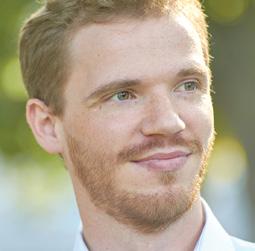
of Monteverdi’s L’Incoronazione di Poppea with Ensemble Pygmalion, conducted by Raphaël Pichon and directed by Evgeny Titov. Future engagements include appearances with Seraphic Fire, the Fort Worth Symphony, and future productions with Opera Lafayette. He is a Lecturer for the University of Maryland Opera Studio and is a member the American Guild of Musical Artists. Alongside his performing and teaching, Patrick also recently joined the staff of Opera Lafayette in a role overseeing Artistic Services.


Praised by The Washington Post for her “consistently beautiful sound,” American mezzo-soprano Sarah Mesko is rapidly gaining attention for her “rich mezzo soprano” voice and musicality. In the 22/23 season, Ms. Mesko makes her debut on the roster of the Lyric Opera of Chicago for Carmen. On the concert stage, she will debut with Opera Lafayette for Pergolesi’s Stabat Mater and Fresno Philharmonic for Beethoven’s Symphony No. 9. Last season she returned to Houston Grand Opera and Opera Theatre of Saint Louis for the title role in Carmen and to The Metropolitan Opera for Rodelinda (Eudige). Recent engagements at The Metropolitan Opera include Semiramide (Arsace), Carmen (Mercédès), and covering the title role in Agrippina. Other recent engagements included Carmen (title role) with Tulsa Opera and her Canadian debut in Le comte Ory (Isolier) with Edmonton Opera. On the concert stage she appeared in Handel’s Messiah at the US Naval Academy and presented recitals at the University of Arkansas and Hendrix College. In previous seasons, Ms. Mesko was seen at The Metropolitan Opera in Die Zauberflöte (Zweite Dame) and Il trovatore (Ines) while covering in Cendrillon (Le Prince Charmant). She also made her New York Philharmonic debut, her Cincinnati Opera debut in Monteverdi’s L’incoronazione di Poppea (Ottavia), and her house/role debut in Little Women (Jo) with Annapolis Opera. Sarah made her debut at The Metropolitan Opera in The Magic Flute (Second Lady) and appeared across the United States with The Metropolitan Opera Rising Stars concert tour.
Praised for his versatility and soulful expressive style, Serafim Smigelskiy actively performs on both baroque and modern cellos. Serafim has toured internationally as a soloist and chamber musician, appearing with Jupiter Chamber Players, Trinity Baroque, Opera Lafayette, NOVUS NY, the Sebastians, FRISSON and New York Classical Players, among others. Serafim performed as principal cellist with the Juilliard Orchestra, Experiential Orchestra, Pegasus, and the Kansas City Philharmonic. Between 2014 and 2021, while a member of the Tesla Quartet, he toured worldwide appearing on some of the world’s most prestigious stages, including Wigmore Hall, the Esterhazy Palace, and the Mecklenburg-Vorprommern Festival. His love of early music
and fascination with historical performance practice led him to study baroque cello with Phoebe Carrai at the Juilliard Historical Performance Department and to perform alongside Robert Mealy, Monica Huggett, William Christie, Nicholas McGegan and Avi Stein. A passionate advocate of new music, Serafim has given numerous world premiere performances guided by composers such as Arvo Pärt, Chaya Czernowin, Georg Friedrich Haas, Mathias Pintscher, Magnus Lindberg, Jessie Montgomery and Ellen Reid. Serafim also composes electronic music as Faremis Sound and produces audiobooks with his wife, Sierra Prasada, as HiSierrafim Audio. This season’s highlights include performances with El Mundo, Trinity Baroque, Opera Lafayette, Orchestra of St. Luke’s, and Yale Schola Cantorum of Monteverdi’s Orfeo as La Musica and Euridice with Les Épopées, and the world premiere of operas such as Céphale et Procris by Elisabeth Jacquet de la Guerre with the ensemble A Nocte Temporis and La Jérusalem délivrée by Philippe d’Orléans with Cappella Mediterranea. (Puccini, Gianni Schicchi) with the Montreal Symphony Orchestra. Her operatic roles include Zerlina (Mozart, Don Giovanni), Barbarina (Le Nozze di Figaro), Belinda (Purcell, Dido and Aeneas), Euridice (L’Orfeo), Poppea (L’incoronazione di Poppea), the Dew Fairy (Humperdinck, Hänsel und Gretel), Altisidore and une Japonaise (Boismortier, Don Quichotte chez la Duchesse) and Colette (Rousseau, Le Devin du Village). In Fall 2016, she went on tour with the Jeunesses Musicales Canada performing works by Handel and Scarlatti with Ensemble Les Songes. She then portrayed the role of Angelica in Vivaldi’s Orlando Furioso at the Tourcoing Lyric Atelier and the Champs-Élysées Theatre (April 2017). Other recent performances include La Statue in Rameau’s Pygmalion with Les Talens Lyriques and Christophe Rousset (Innsbruck Festival), Zerlina in Don Giovanni (Vichy Opera), the four female roles in Offenbach’s Les Contes d’Hoffmann in a specifically modified version at the Dijon Opera conducted by Nicolas Chesneau and directed by Mikaël Serre, as well as Céphise in Rameau’s Pygmalion and Vénus in Mondoville’s L’Amour et Psyché with Le Concert d’Astrée conducted by Emmanuelle Haïm and Robyn Orlin as stage director (Dijon Opéra, Lille Opera, Luxemburg Grand Théâtre, Théâtre de Caen). Samantha Louis-Jean is a winner of the Froville International Baroque Competition, the Prix d’Europe Competition, the Lyndon-Woodside Oratorio Society of New York Competition, and the Jacqueline Desmarais Foundation. She is a grant recipient of the Conseil des Arts et des Lettres du Québec, the Canada Council of the Arts, and the Jeunesses Musicales du Canada.
Barbara Tober
As of March 29
Annelyse Allen
Catia Z. Chapin
Layla Diba
Christopher Forbes
Daisy M. Soros
Daniel & Susan Thys
Mrs. Faanya Rose
Ishtar Méjanes
Jill Esterman
Merri Moken
Nizam P. Kettaneh
Simona Chazen
Stephen and Mary Sue Kitchen
Suzi Cordish
Barbara Tober for her tireless enthusiasm in chairing our New York Festival gala.
S.A.R. la Princesse Chantal de France et le Baron François-Xavier de Sambucy de Sorgue
Pamela J. Hines and Julia Doe for editorial assistance, and Jace Chambers for the compilation of the 2023 Program Book.
Ambassador Laurent Bili
The Cultural Services of the Embassy of France
The Consulate General of France in New York
Afsaneh Akhtari
Dr. William Haseltine and Maria Eugenia Maury
And the many others who helped make “The Era of Madame de Pompadour” possible.
Opera Lafayette gratefully acknowledges the following corporations, foundations, and government agencies for their support and for their continued commitment to the arts.
Capitol Hill Community Foundation
DC Commission on the Arts and Humanities

Esther Simon 1952 Charitable Trust
ExxonMobil
The Nancy Peery Marriott Foundation
National Endowment for the Arts

National Endowment for the Humanities
Prince Charitable Trusts
Wage Foundation
The Pierre and Tana Matisse Foundation
Opera Lafayette expresses its deepest gratitude for the extraordinary support of its donors and patrons, whose generous contributions help to ensure the continued success of our organization.
Please consider joining this group of dedicated arts lovers who support Opera Lafayette. For more information on how you can make a difference, please visit our website at operalafayette.org/support or contact the Director of Development. Email ericsimpson@ operalafayette.org or call (202) 546-9332 ext. 602.
The individual gift listings below reflect donations made between July 1, 2021 and March 29, 2023.
Leaders’ Circle
($20,000+)
Dorsey and Susan Dunn
Stephen and Mary Sue Kitchen
Sophie Lynn and David C. Frederick
Ms. Ellen McCoy
Elizabeth Prince
Bruce Rosenblum and Lori Laitman
Barbara Tober
One anonymous donor
Benefactors’ Circle
($10,000 - $19,999)
Ross and Judy Ain
Marifé Hernández and Joel Bell
Christine Healey and Ryan Brown
Cheryl Gorelick
Robert V. Jones
Valerie R. Lynn
Heather Mac Donald
Leonard and Annemarie Ralston
One anonymous donor
Trustees’ Circle
($5,000 - $9,999)
Walter R. Arnheim and Marsha Rehns
Stephanie Bernheim and Ralph Wharton
Bill and Cari Gradison
Parker H. Jayne
Charles N. Kahn III and JoAnn Willis
Susan A. Lynner
William and Aimee Maroney
Dr. and Mrs. Thomas P. Sculco
Sybil Silver
Mr. and Mrs. Oakleigh Thorne
Anthony and Margo Viscusi
Alan and Cici Wilkinson
Sustainers’ Circle
($2,500 - $5,000)
Frederick and Annelyse Allen
Tom and Yoko Arthur
Olivier Bernier
Simona Chazen
Janet Desforges
Layla Diba
Joan Elliston
Louis and Marie-Hélène Forget
Mr. and Mrs. John French III
Jeffrey Mora
Thomas G. MacCracken
Tom Helinski and Bob Miller
Mark and Helen Rice
Faanya Rose
Michelle Sikora
Mr. and Mrs. Albert Simons
Daisy Soros
Thomas and Diane Stanley
Daniel Thys
Patrons’ Circle ($1,000 - $2,499)
Barry Abel
Christine Ansbacher
Mr. and Mrs. J. Truman Bidwell, Jr.
David Beer
Barbara Block
Corrick Brown
Ms. Noreen Buckfire
Sara Caples and Everardo Jefferson
Francis Dubois
Matthew Easley
Jill Esterman
Greta Fisdale
Christopher Forbes
John and Patricia Forelle
Elisabeth R. French
Dennis Gallagher
Joshua Ginsberg and Catherine Kerr
Margery Grace
Samuel and Marcia Hellman
Stephen and Belinda Kaye
Pamela J. Hines and Robert Lerner
Helen Little
Adrienne Jamieson
Richard Johnson
Meche Kroop
Margo Langenberg
Elizabeth Lewis and David Abernethy
Francine LeFrak
Mr. and Mrs. John Lipsky
Anne Mackinnon
Pamela Manice
Rebecca McCormack
Robert and Encarnita Quinlan
Ashwani and Sunita Rajput
Annette Reilly
Jane and Bruce Robert
James Saakvitne
Clark and Marcia Silcox
Joel and Joan Simon
Janet M. Storella and Andrew T. Karron
Shining Sung
John C. Wiecking
Louisa Woodville
Susan Yamada
Donors’ Circle ($500 - $999)
Mr. Alan Agle
Joel Brenner and Victoria Pope
Derek Brown and Deborah Hellman
Merritt Chesley
Jerald and Alice Clark Carol Collins
Walter Denny
Linda and Ronald DeRamus
John Driscoll
Mr. and Mrs. Robert Elder
Bruce A. Garetz
Michael L. Godec and Suzanne Wells
Jean Golden
Roddy and April Gow
Robert Green
Joan Greenberg
Nancy Hoppin
Ralph Johanson
Cathy Kaufman
Sandra Kolb
Victoria and Douglas Larson
Tiffany Lynn
Francois Maisonrouge
John and Anne Manice
Joan E. McFarland
Michael and Maureen McMurphy
Linn Cary Mehta
Ingrid Meyer
Catherine S. Michaelson
Timothy Milford
Mrs. Victoria Newhouse
Greenway O'Dea
Mr. and Mrs. Christopher O'Flinn
Rochelle Pollock
Mrs. Kenneth Prouty
Robert and Charlotte Reischauer
Matt Slater
Steven Steinbach
Thomas Strikwerda
R. Michael and Eileen Tanner
Deborah Weinberger
Irving and Carol Yoskowitz
One anonymous donor
Supporter ($100 - $499)
Catherine Armington
Daniel Arnheim
Wallace K. Bailey
Eric Bash
Virginia M. Bland
Sarah B. Brown
Avis Bohlen Calleo and David Calleo
Joseph and Carmen Bredie
Thatcher and Sarah Brown
Marco Cagetti
Michael Canning
Vickie D. Carlson
Duane and Joanne DeVries
A. Dorsey
Thomas D. Dunn
Fynnette Eaton
Janet Farbstein
Robert Fegley
Sheila Ffolliott
Alan and Hannah Fisher
Polly Fisher
John Fitzgerald
Dwight Frankfather
Rosemary Freeman
Aloysia Friedmann and Jon Kimura
Parker Sidney and Janet Getz
Karen Gilmore
James A. Glazier
Nancy Gordon and Robert Parker
Marissa Greenberg
John Mark Greiner
Vivian Gruder
Roy Hamilton
Rebecca Harris-Warrick
Sheridan Harvey
Basil and Anne Henderson
Paul Horowitz
John and Shizue Howe
Deirdre Howley
Paul E. Johnson
Margaret C. Jones
Mr. and Mrs. Mike Kadish
Geoffrey D. Kaiser
Fernanda Kellogg
Joseph P. Kerr
Lorna Kettaneh
Walter L. Kirchner
Charles Kitchen
Andrea Knutson
Vivianne C. Lake
Diane Lin
Jennifer Longworth
Ronald Lorentzen
Daniel Lozier
Elisabeth Lynn
Daniel and Maeva Marcus
Carol Marsh
Michael McKee
Karen A. McLaughlin
David and Christina Mead
Joan Mertens
Richard J. Metzger and Camilla Nilles
Benjamin Miller
Deborah Mintz
Brandon Mong
Douglas Parker
Thomas Parker
Barbara Patocka
Marylyn Pauley
John Percy
Thomas Pulling
Joan Rosasco
Norman Roule
J. Brinton Rowdybush
Pamela Schmidle
Michelle Selzer
Leo H. Settler and Joel Cuffman
Marilyn Shapiro
Robert Sherer
Angela Silverman
Karen Patricia Smith
Jayme A. Sokolow
Richard E. Spear and Athena Tacha Spear
Austin Stewart
Reid Thompson
Jerome and Carol Trautschold
Lynn Trundle
Gretchen Van Matre
Baird Webel
Judith Weintraub
Larry Wehr
George Gran Wilson
Phoebe Jane Winthrop
Elizabeth Witt
Tracy Wojcik
Thomas and Barbara Wolf
Roger Yaseen
Friend ($99 or less)
Paula Al Sabah
Jean W. Arnold
Melissa Ashabranner
Andrew Austin
Antonia Banducci
Patricia Beaman
Richard Beams
Michael Bertino
William Book
Louise Bozorth
Kimberly Brammer
Todd A. Breitbart
Jennifer and Derick Brinkerhoff
Sarah Burford
John Burkhalter
Sally Burman
Hector Carrero
Eve Chauchard
Mia Cruz-Worthy
Charles and Anne-Marie Daris
Dimitri Darras
John David
Michael Davidson
Richard Davis
Winter Davis
Martin Donougho
Robert Doubek
Donna Doyle
David Drasin
Leo Falk
Mireille Arnaut Ferhani
Gustave Fleury
Peter Freed
Susan Fulwiler
Matthew Gaffney
Camilla Galluzzo
Alice Gausch
Gerard Geoffroy
William Mark Goodwin III and Margaret A. Goodwin
Carrie Grant
John Graziano
Leo Greenbaum
Alexander Gross
Richard Hardy
Benjamin N. Harrison
Alice Hoxie
Erica Jin
Cliff Julseth
Jason Kim
Noël Klapper
Emmanuelle A. Lebigre
Emily Lemer
Felice Li
Myron Magnet
Angela Maher
William Theo Mann
Judy Mannes
Francoise Marcus
Katherine Martin Seaver
Megan McNitt
Kathy Merrill
Zorka Milin
Judith Miller
Hernan Morales
Rex Moser
Gerald Murphy
Michael North
Joyce Offerman
Zulay Orosco
Geraldine Ostrove
Jennifer Packard
Lois C. Padawer and Oscar A. Jaeger
Stephan Parker
Kenneth Pfaehler
Nick Poppy
Michael Robinson
Ellen Rosand
Betsy Jean Rosasco
Linda and Duncan Rose
Jacqueline Demoras Rosen
Moses Schapiro
Andrew Schneider
Mr. and Mrs. David Schraa
Sage Segarra Garay
Mr. and Mrs. Michael Sherer
Ellen Smith
Mr. and Mrs. Edward Stewart
Patricia Solley
Alexander Swindle
Virginia Tarris
Bev and David Therkelsen
Cecelia Waldeck
Vera Caldas Wilkinson
Caroline Williams
Donna Wolfson
Marilyn Wong Gleysteen
Douglas Yon
Diana Zablocki
Georgianna Ziegler
Three anonymous donors
Brian Babcock-Lumish in honor of Sophie Lynn and David Frederick
Thatcher and Sally Brown in honor of Mrs. Barbara Tober
Joshua Ross Ginsberg in honor of Barbara Tober and Ryan Brown
Karen Hsu in honor of Marifé Hernández
Stephen and Belinda Kaye in honor of Mrs. Barbara Tober
Jennifer Longworth in honor of Nizam Kettaneh
Francois Maisonrouge in honor of Marifé Hernández
Brandon Mong in honor of Ashwani Rajput
Marylyn Pauley in honor of Pascale Beaudin
Pamela Schmidle in honor of Chris Healey
Donna Wolfson in honor of Walter Arnheim and Marsha Rehns
Roger Yaseen in honor of Mrs. Barbara Tober
An anonymous donor in honor of Mrs. Barbara Tober
Walter R. Arnheim and Marsha Rehns in memory of Norma Brown
Aloysia Friedmann and Jon Kimura Parker in honor of Laila Storch
Opera Lafayette
Opera Lafayette
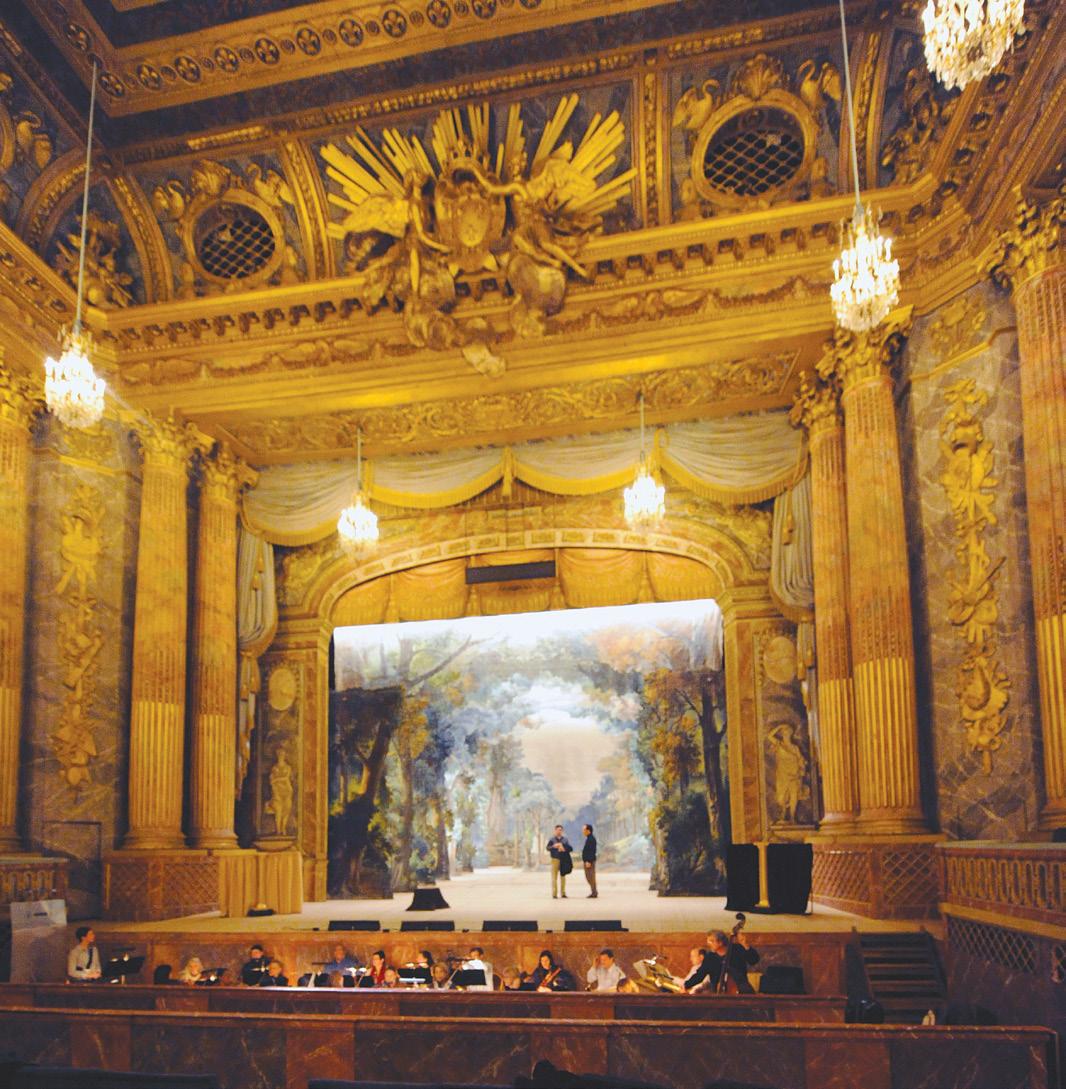
921 Pennsylvania Avenue SE
Washington, DC, 20003
DC: (202) 546-9332 | NYC: (212) 634-9388
OperaLafayette.org
Opera Lafayette is the pre-eminent American interpreter and producer of periodinstrument opera from the 17th through the 19th centuries and an international leader in this repertoire. Based on meticulous research and the creation of modern performing editions, the company’s compelling performances and recordings of rediscovered gems and historical masterpieces highlight the works’ original appeal and introduce a new generation to their contemporary relevance.
Dorsey Dunn, Co-Chair*
Nizam Kettaneh, Co-Chair*
Ross Ain, Vice Chair
Adrienne Jamieson, Vice Chair
Ashwani Rajput, Treasurer
Stephen Kitchen, Secretary
Ryan Brown, Founder & Artistic Director
Merri C. Moken, Member-at-Large*
Annelyse Allen, Member-at-Large*
Jill Esterman*
Pamela Hines and Robert Lerner
Cheryl Gorelick
Parker Jayne
Susan A. Lynner
Ellen McCoy
Leonard H. Ralston
Daniel Thys*
JoAnn Willis
Walter R. Arnheim
Yoko Arthur
Joel Brenner
Catia Chapin*
Marie-Hélène Forget
Bill Gradison
Cari Elliott Gradison
Marifé Hernández*
Vivianne C. Lake
Sophia Lynn
Chris O’Flinn
Joan Simon
Daniel B. Silver**
Brian Vogel
Janet Desforges
Francis Dubois
Jean-Paul Fouchécourt
Vivianne C. Lake
Anne Mackinnon
Ishtar Méjanès
Catherine S. Michaelson
*Member of the New York Advisory Committee
**Deceased
Lisa Mion Managing Director
Kara Hess Business Manager
Patrick Kilbride Artist Services and Marketing Associate
Eric Simpson Director of Development
Jace Chambers Community Engagement and Marketing Associate
CJ Hartung Development and Box Office Associate
Jacob Ashworth
Jonathan Woody
Julia Doe
Lloyd Greenberg Design LLC
Vida Russell & Lloyd Greenberg Program Book Design
Kendra Rubenfield | KRPR DC Public Relations
Central to Opera Lafayette’s mission is creating a legacy of the forgotten repertoire the company brings back to life. Opera Lafayette released its first CD on the Naxos label, and now has 12 commercial audio recordings. In 2018, Opera Lafayette released its first DVD, and now has three on the Naxos label. In 2019 Opera Lafayette published its first illustrated book. These books complement Opera Lafayette’s discography and further bolster the legacy of early opera to new audiences. In 2020, the company filmed its first production for PBS, with initial regional broadcast dates on RMPBS in 2022.
The Blacksmith (2022)
François-André-Danican Philidor, composer
François-Antoine-Quétant, librettist
English Translation by Nick Olcott
Adaptation by Nick Olcott and Ryan Brown
As told by Kelley Rourke and illustrated by Amy Severson
Radamisto (2019)

George Frideric Handel, composer
Nicola Francesco Haym, librettist
Based on L’amor tirrannico by Domenico Lalli and after L’amor tyrannique by Georges de Scudery
La Susanna (2019)

Alessandro Stradella, composer
Giovanni Battista Giardini, librettist
Based on Susanna and The Elders from The Book of Daniel
Leonore (2020)
Ludwig van Beethoven, composer
Joseph Sonnleithner, librettist
Les Fêtes de l’Hymen et de l’Amour, ou Les Dieux d’Ègypte (2019)
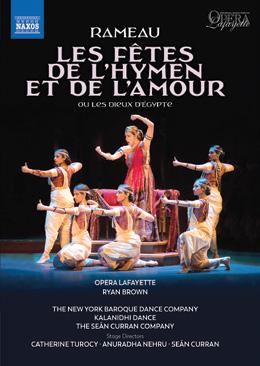
Jean-Philippe Rameau, composer
Louis de Cahusac, librettists
Cover: Louis Forget
Leonore, ou L’Amour conjugal (2018)
Pierre Gaveaux, composer
Jean-Nicolas Bouilly, librettist
Also available on Blu-ray
Cover: Pierre-Etienne Bergeron
Leonore (2021)



Ludwig van Beethoven, composer
Joseph Sonnleithner, librettist, after Bouilly
Cover: Louis Forget
L’épreuve villageoise (2016)
André-Ernest-Modeste Grétry, composer
Pierre Desforges, librettist
Cover: Louis Forget
Les Femmes Vengées (2015)
François-André Danican
Philidor, composer
Michel-Jean Sedaine, librettist
Cover: Louis Forget
Lalla Roukh (2014)
Félicien David, composer
Michel Carré and Hippolyte Lucas, librettists
Cover: Louis Forget
Le Roi et le fermier (2013)
Pierre-Alexandre Monsigny, composer
Michel-Jean Sedine, librettist
Cover: Restored 1780 set designs for Le Roi et le fermier
Photo by J.M. Manai
Le Magnifique (2012)
André-Ernest-Modeste Grétry, composer


Michel-Jean Sedaine, librettist
Cover: The Composer AndréErnest-Modeste Grétry by Jean-Baptiste Stouf (17241826) Purchase, Josephine Bay Paul and C/ Michael Paul Foundation Inc.
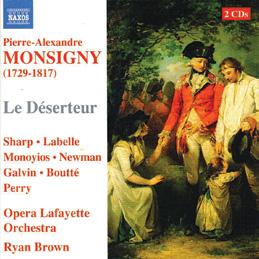
Gift and Charles Ulrick and Josephine Bay Foundation Inc. Gift, 1969 (69.77) –
Image ©️ The Metropolitan Museum of Art
Sancho Pança (2011)

François-André Danican
Philidor, composer
Antoine-Alexandre-Henri
Poinsinet, librettist
Cover: Louis Forget
Le Déserteur (2010)
Pierre-Alexandre Monsigny, composer

Michel-Jean Sedaine, librettist
Cover: The Deserter Pardoned by George Moreland (17631804) (The Holburne Museum of Art, Bath, UK/The Bridgeman Art Library)
Zélindor, roi des Sylphes (2009)

François Rebel and François Francœur, composers
Text by François-Augustin Paradis de Moncrif
Cover: Louis Forget
The Tragedy of Armide (2008)
Jean-Baptiste Lully, composer
Philippe Quinault, librettist
Cover: Rinaldo and Armida by Sir Anthony van Dyck (15991641) (Louvre, Paris, France, Lauros/Giraudon/ The Bridgeman Art Library)
Rameau Operatic Arias (2007)


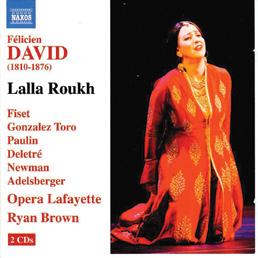
Featuring Jean-Paul Fouchécourt
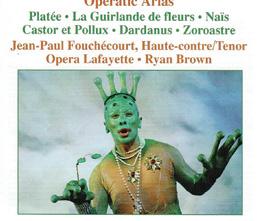
Cover: Carol Rosegg
Oedipe à Colone (2006)

Antonio Sacchini
Cover: Oedipus and Antigone by Johann-Peter Krafft (17801856) (The Art Archive/Musée du Louvre, Paris/Dagli Orti)
Orphée at Euridice (2005)
Christoph Willibald Gluck
Cover: Orpheus Leading Eurydice from the Underworld, 1861 by Jean Baptiste Camille Corot (1796-1875) (Museum of Fine Arts, Houston, Texas, USA/Bridgeman Art Library)
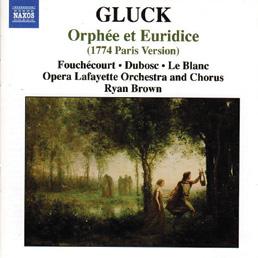
Washington, DC, The Kennedy Center’s Terrace Theater
WEDNESDAY, OCTOBER 25TH, 2023
Couperin le Grand
Chamber music with Christophe Rousset, harpsichord
THURSDAY, FEBRUARY 8, 2024
From Saint-Cyr to Cannons: Moreau and Handel’s Esther Chamber Orchestra and vocalists with musical direction by harpsichordist Justin Jonathan Taylor and OL Artistic Associate Jonathan Woody
FRIDAY, MAY 3 AND SATURDAY MAY 4, 2024
Mouret’s Les Fêtes de Thalie
Fully staged opera with Christophe Rousset, conductor, Claire van Kampen, director, Antonia Franceschi, choreographer (cast and dancers tba) & New York Festival, El Museo del Barrio
TUESDAY, MAY 7, 2024
Mouret’s Les Fêtes de Thalie
WEDNESDAY, MAY 8, 2024
Couperin le Grand
THURSDAY, MAY 9, 2024
From Saint-Cyr to Cannons: Moreau and Handel’s Esther
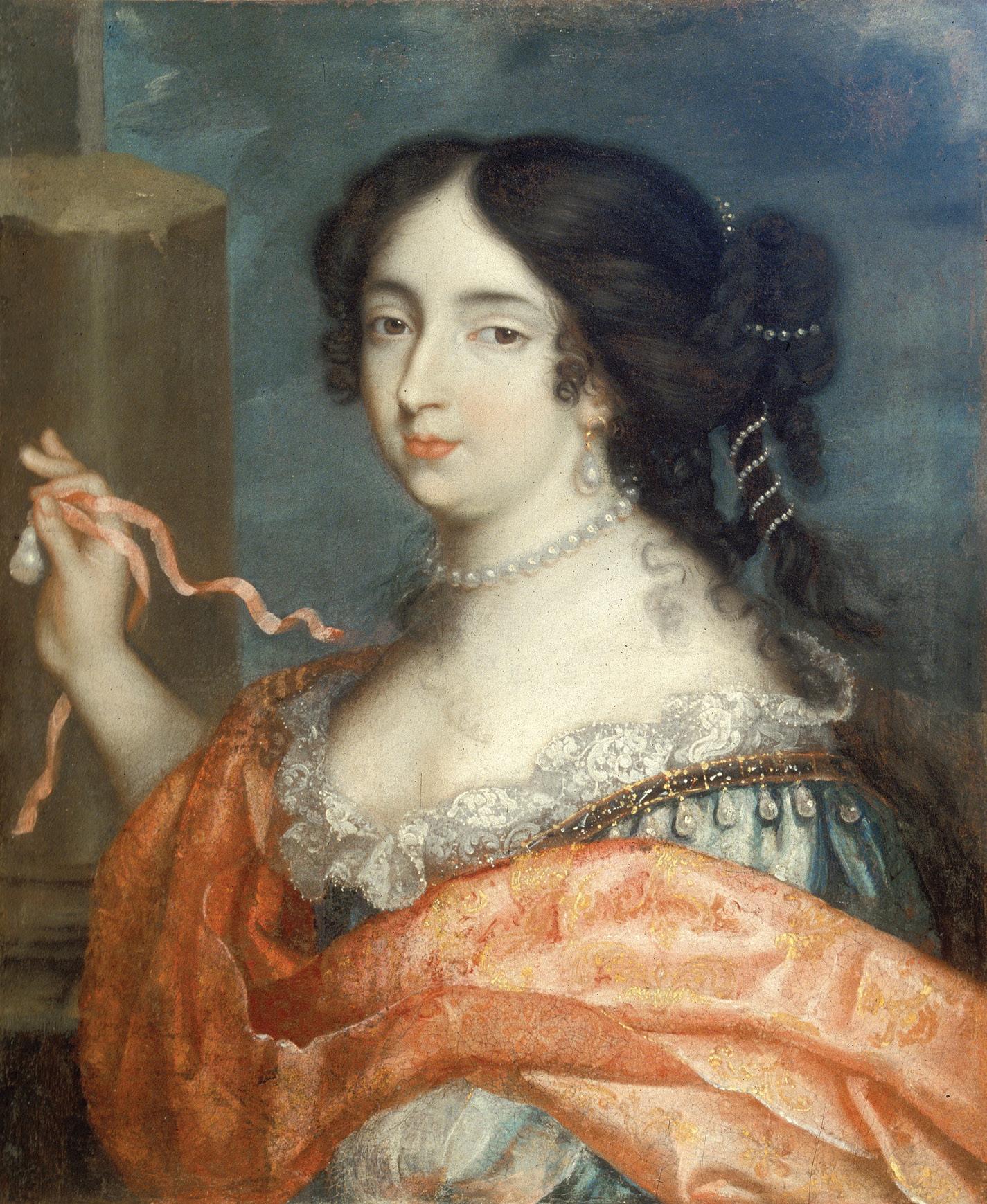
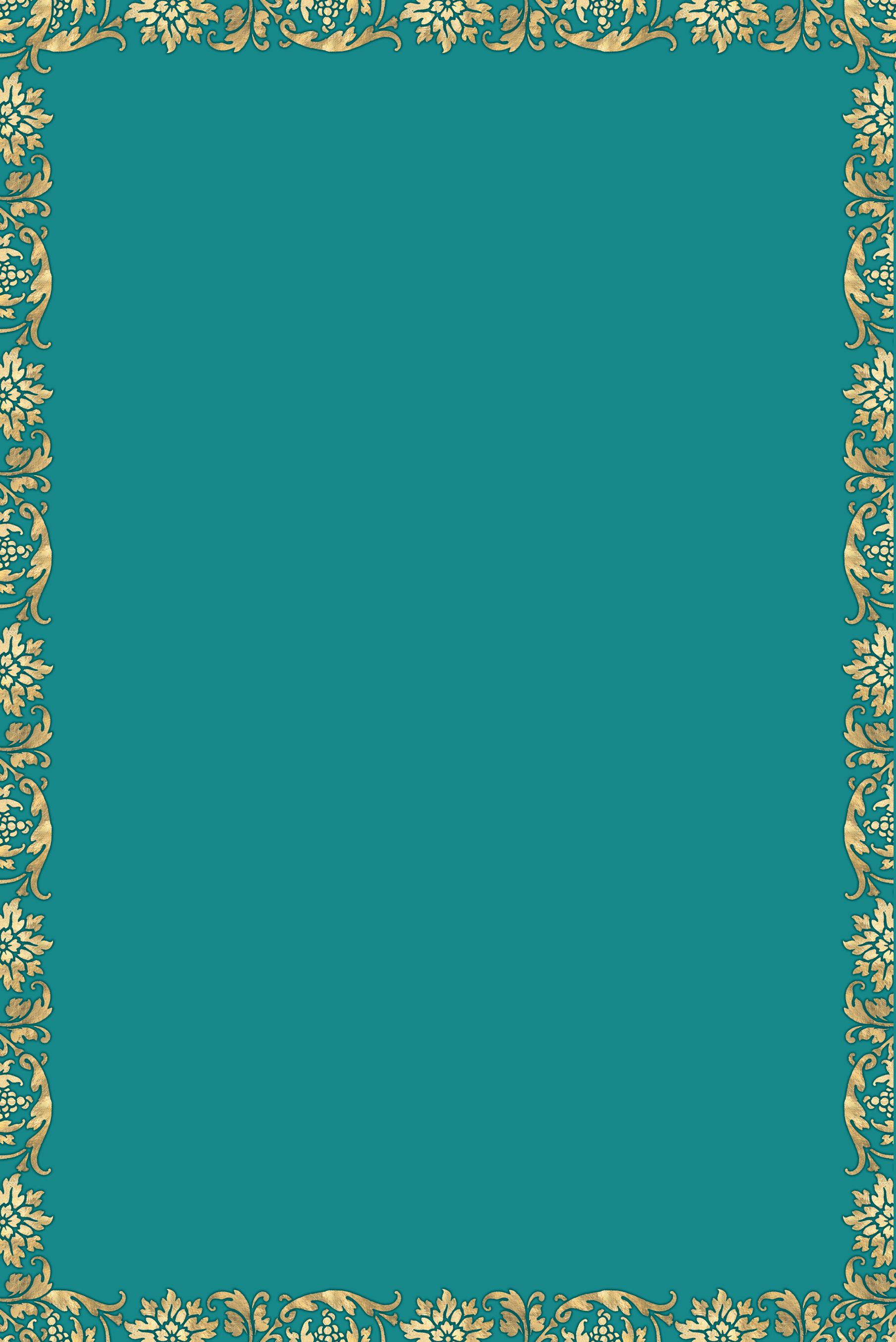
“In fact, this much maligned figure [Madame de Pompadour] left us a rich, complex, occasionally contradictory (but invariably enthralling) artistic legacy – one that shaped the aesthetic landscape of court and capital for decades after her death.”
– Callum Blackmore“The volume containing the orchestral score of La toilette de Vénus and Léandre et Héro was the BnF (Bibliothèque nationale de France) music department’s most important early-music acquisition in a decade.”
– Mathias Auclair“If the autograph manuscript of Platée had survived, the pages of Io’s divertissement might well have been found there. . . .Thanks to the programming of Opera Lafayette, Rameau’s broader vision for Io has at long last been realized.”
– Sylvie Bouissou“To argue for operatic evolution was a veiled means of arguing against the governmental status quo. . . .Over the course of the querelle, it was the œuvre of Pergolesi, above all, that stood in for Italian composition (and cultural modernity) writ large.”
– Julia Doe“These works shook off the strictures of an increasingly puritan and joyless appeal to seriousness and high-mindedness, and we should be reminded to admire in Rameau, Boucher, Favart, and Pompadour, and their twenty-first-century progeny, the expansive pleasures of Rococo’s cornucopian trance.”
– Melissa Hyde & Mark Ledbury